The Top 10 Líderes Issue
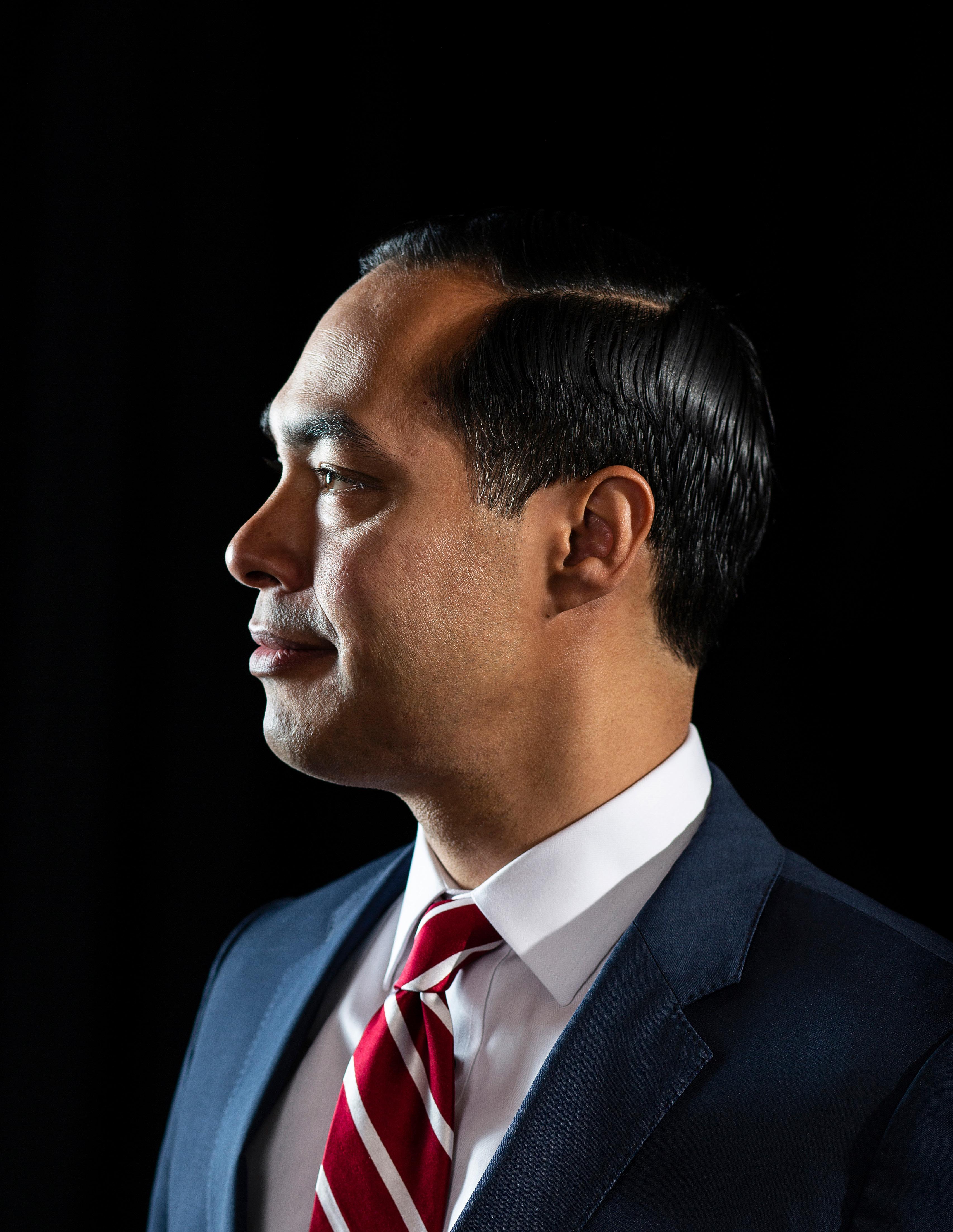

The Top 10 Líderes Issue

Vying for the highest executive position in the nation, Julián Castro gives voice and hope to the US Latino community—and his timing couldn’t be better

P80 Carolina de Onis, Teacher Retirement System of Texas
P84 Jairo Orea, Kimberly-Clark
P88 Enrique Conterno, Eli Lilly and Company
P92 Sandra Campos, Diane von Furstenberg
P96 Talita Ramos Erickson, Barilla
P102 Sean Jaquez, Sony Pictures Entertainment
P108 Julián Castro, US Presidential Candidate
P110 Joe Dominguez, ComEd, an Exelon company
P114 Lisa Heritage McLin, Rackspace
P120 Carlos Linares, Church and Dwight
+ A letter from our guest editor, Guillermo “G” Diaz Jr., Cisco Systems, P76
18 Large reach = Large Impact
As the engagement and inclusion director for the University of Pittsburgh Medical Center, the largest nongovernmental employer in the state, Susan Baida is poised to make a difference.
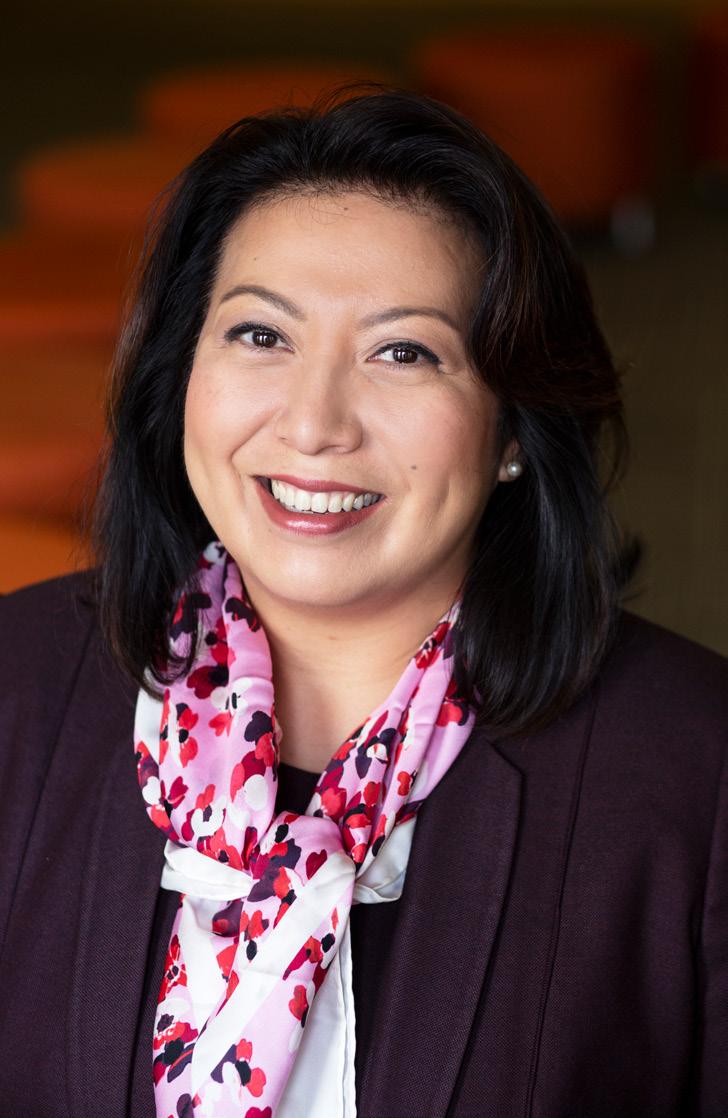
40 “Success [comes from] developing a group of critical thinkers.” CBS Interactive’s Rosie De La Cruz on leadership development and being a “strategic coach.”
44 Managing a rebrand
At Metro by T-Mobile (formerly MetroPCS and T-Mobile) Chris Luna’s cross-functional and collaborative approach reflects the company’s people-focused values.
52 A conversation about Latino entrepreneurship
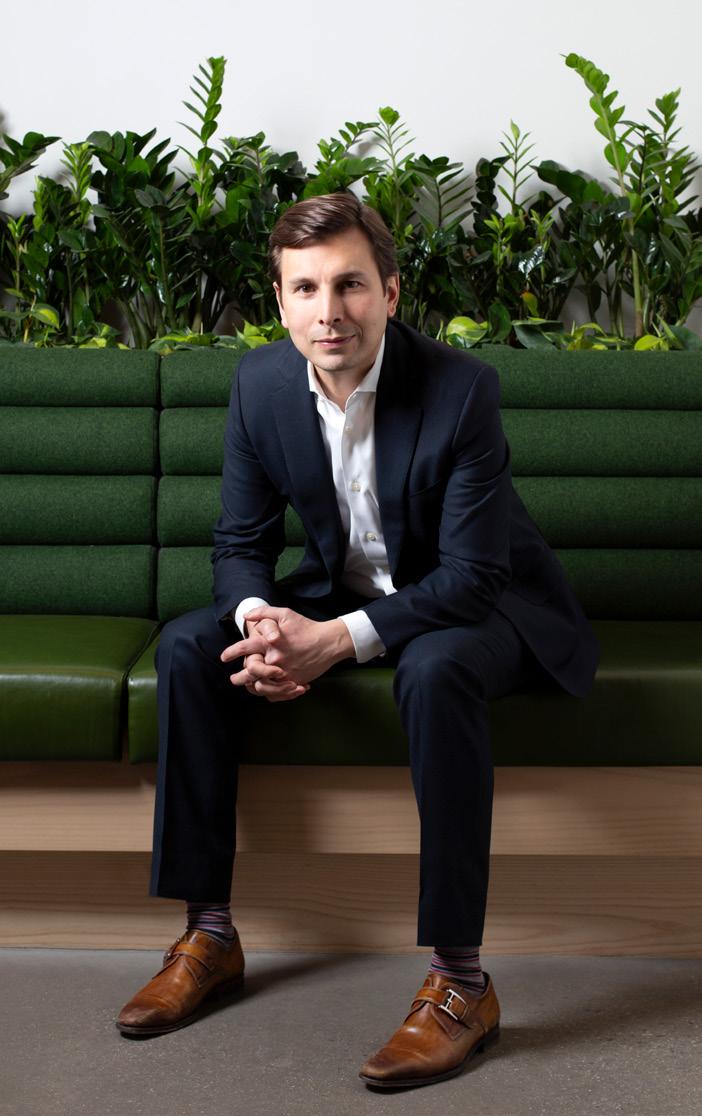
Be a fly on the wall for the discussion between Pedro A. Guerrero, CEO of Guerrero Media, and Mark L. Madrid, CEO of the Latino Business Action Network.
128 The perpetual student
With a worldly upbringing and educators as parents, Accenture’s Miguel Myhrer knows the importance of continuous learning—an asset for a leader in the evolving communications industry.
136 10 questions with an industry disruptor
The CEO of the new digital wireless carrier Visible, Miguel Quiroga, talks influences, inspirations, and innovation.
148 Managing 175 agents worldwide
Forever 21’s Luis Escobar treats his global call-center employees like family.

In an exclusive interview with Ruben Navarrette, the candidate for US president discusses his definition of leadership, and what it takes to campaign for the highest executive position in the land.


Pedro A. Guerrero CEO of Guerrero Media Publisher of Hispanic Executive
YES, YOU SAW CORRECTLY—THAT is a presidential candidate on the cover of Hispanic Executive. In fact, it’s the first elected public official we’ve ever featured on the cover of this magazine.
Why put a politician on the cover of a magazine that focuses on business executives? At least why now, when we have never featured one before and when, frankly, we have historically been apolitical?
We know that Julián Castro isn’t the first Latino to campaign for the US presidency. There were two Latinos who ran in 2016, and does anyone remember Bill Richardson in 2008 or even Ben Fernandez’s run in 1978? (I didn’t—but Google did.)
So why deviate from our practice now?
I’ve asked myself that question many times and the answer I keep coming back to is this: whether we like it or not, Latinos are at the center of the political world in America —and this is not just about immigration.
Although Hispanic Executive has stayed away from politics in the past, we have always provided a platform for the thoughts and opinions of our executives. In recent issues, those thoughts and opinions have more frequently included politics. Continuing an apolitical approach in this new societal environment would be ignorant to reality.
The opinions of our featured executives reflect what our community cares about— what our readers have increasingly told us they care about—and it’s time for our magazine to more intentionally make space for that discussion. Although we won’t endorse a political candidate or align ourselves with a political party, we will embrace the reality that our magazine can act as a vehicle for political conversations with the hope that we can engage in a dialogue that is rich and productive (at the risk of sounding naïve).
To signal our acknowledgement of the current societal environment and to showcase our platform for thought leadership in our community, we are fittingly putting an accomplished political leader on the cover of our Top 10 Líderes issue.
Engaging in the political conversation is not a decision I take lightly. As we all know firsthand, politics can be polarizing, and our community doesn’t need any more division than is already inherent in the kaleidoscope of identities that make up Latinoamérica.
But the level of attention focused on Latinos has reached a fever pitch. We are both the Bogeyman and the future of this country. We are the largest minority group that is also the most disrespected, and—I would argue—the most misunderstood.
We find ourselves at the center of this political maelstrom, which has brought our community to a turning point. We can look at our position as one of weakness, where we
“The level of attention focused on Latinos has reached a fever pitch. We are both the Bogeyman and the future of this country. We are the largest minority group that is also the most disrespected, and—I would argue—the most misunderstood.”
are blamed for all that is wrong and claim society is against us. Or we can reframe our mind-set, own our narrative, and declare: we are the center of the political universe. All things gravitate toward us. That’s powerful.
We Latinos have been hearing for a while now that this is our “moment.” But a moment passes. I would argue this is our time. The fever pitch of attention will continue to grow because our numbers and our impact will continue to grow.
To harness this time, own our narrative, and guide our growth, we need an exponential growth in our community’s leadership. Not only in corporate America, but politically as well. We can’t wait around for others to give us a shot. We need to take that shot for ourselves and for each other. It starts with owning and sharing our stories of leadership, both to inspire more leaders to step up (because, after all, “you can’t be who you can’t see”) and to be one another’s advocate when opportunities arise—in business, in government, and in society as a whole.
This is where Hispanic Executive plays a role. And some of this year’s best leadership profiles are featured in this issue—starting with the leader on our cover.

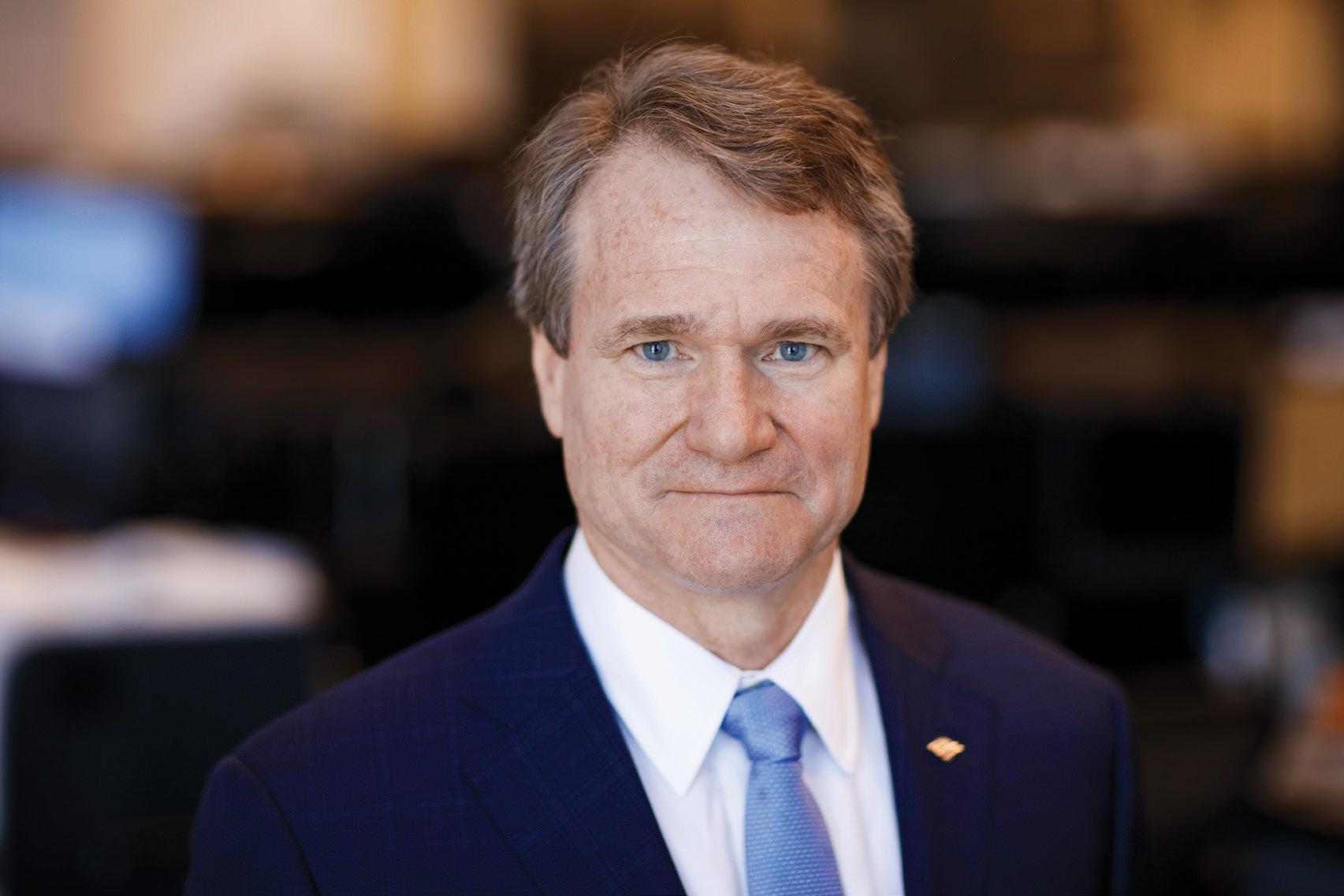

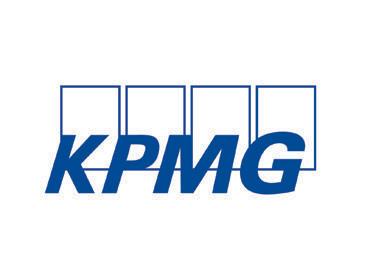
True leaders are always learning. The Top 10 Líderes featured in this issue offer insight into the books and podcasts that keep them inspired. Here’s what they recommend.
Listen
TED Talks Daily / TED Radio Hour
TED Talks
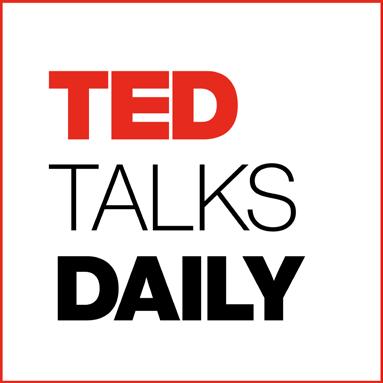
Four of our Top 10 Líderes cite TED Talks as their favorite podcasts!
Enrique Conterno
Eli Lilly and Company, P88
& Carlos Linares
Church and Dwight, P120
& Sean Jaquez
Sony Pictures Entertainment, P102 &
Lisa Heritage McLin Rackspace, P114
Read Team of Teams
General Stanley McChrystal
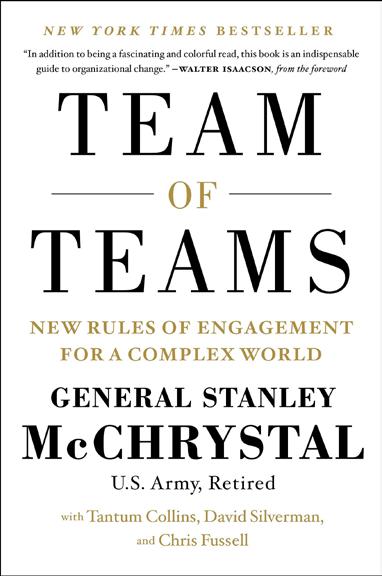
Carlos Linares
Church and Dwight, P120 &
Jairo Orea
Kimberly-Clark, P84
Listen Forked Up Thug Kitchen

Talita Erickson Barilla, P96
Listen
The John Maxwell Leadership Podcast
John Maxwell

Jairo Orea
Kimberly-Clark, P84
Read Lolita
Vladimir Nabokov

Carolina de Onis
Teacher Retirement System of Texas, P80
Read The Storyteller’s Secret Sejal Badani

Sandra Campos
Diane von Furstenberg, P92
Read The Four Agreements
Don Miguel Ruiz

Read Foundation
Isaac Asimov

Enrique Conterno
Eli Lilly and Company, P88
Read
Imagine the Angels of Bread: Poems
Martín Espada

Sean Jaquez
Sony Pictures Entertainment, P102
Photographer Cass Davis follows Top 10 LÍder
Talita Ramos Erickson, general counsel of Barilla (Americas) and CEO of Barilla Restaurants, for a whirlwind day full of key meetings and events.
Through it all, Erickson stresses her philosophy of “work-life efficiency,” a concept driven home through all levels of Barilla’s staff, encouraging freedom and open dialogue about managing both their personal and professional commitments.
For more on this Top 10 Líder, turn to p. 96.

7:45AM
Check out the new sauce Talita arrives at Barilla America HQ in Northbrook and heads to the demo kitchen, where chefs will be preparing food for a product-reveal celebration later that day. Barilla is releasing its new Premium and “Vero Gusto” Super Premium lines of red sauces.
7:57AM
“Good For You and Good for the Planet” Barilla’s purpose has recently proven to be ahead of its time. “Consumers are shying away from overly processed foods and have concerns about the environment,” Talita says. “Because we’ve always had this ‘Good for You and Good for the Planet’ philosophy, we are already aligned with the trends.”



9:15AM
Alliance building
As the executive sponsor of Alleanza, Barilla’s ERG for Latinx and Black American employees (as well as allies of these communities), Talita regularly meets with the group’s leaders, Sherry Cabrales and Kellie Grant, to discuss ideas and opportunities.
8:37AM
Prep for the big reveal Talita meets with Maroun Atallah, who leads product development for sauces, to discuss plans for the release of the new “Vero Gusto” Super Premium line of sauces, made in Italy.


10:07AM
Driving downtown
Talita jumps in her trusty Fiat to head downtown. While driving, she takes a call from one of her direct reports. “At Barilla, we believe flexibility is key to both diversity and engagement, and that means there’s no one-size-fits-all approach to where, when, and how to work,” she says.



3:34PM
School’s out Talita picks up her fiveyear-old son, Josh, from a day camp at his school. “As my spouse is in charge of regularly picking up and dropping off Josh, I really value having the flexibility to spend some extra time with him during spring break,” she says.
10:47AM
Sharing her experience
At the Hispanic Alliance for Career Enhancement’s (HACE) “Beyond Latinidad” conference, Talita leads a session focused on actionable steps towards a more inclusive work environment. “Our chief diversity officer always says that diversity is a fact, but inclusion is a conscious choice,” she says.
4:12PM
Work-life efficiency in action
While at the park with her son, Talita explains Barilla’s culture of openness, enabling what she describes as “work-life efficiency.” Tonight, she will ensure any remaining tasks for the day are done at her home office.

Ruben Navarrette is a syndicated columnist with The Washington Post Writers Group, author of A Darker Shade of Crimson: Odyssey of a Harvard Chicano, and host of the podcast Navarrette Nation. Read his new interview series, Conversations at the Top, on p. 64.
VP, Creative
Kevin Beauseigneur
Director, Creative
Cyndi Fecher
Managing Editor
Kathy Kantorski
Staff Writers
KC Esper
Guillermo Diaz Jr. is a global technology leader and a champion of inclusion and diversity. He is a transformational leader across Cisco and broadly in the industry, known for aligning people, process, and technology. As CIO from 2015 to 2019, he simplified the IT financial structure, driving more than 30 percent improvement in cost while helping drive Cisco’s top line through being Customer Zero and using Cisco’s own technology—products, software, and services— as a key growth accelerator. In his newly formed charter as SVP of customer transformation, he and his team will leverage Cisco’s own digital journey and thought leadership to partner with customers in their own transformation programs. Diaz was recognized in Hispanic Executive as a Top 10 LÍder in 2016, and returns this year as guest editor of the Top 10 LÍderes feature section, p. 76.
Billy Yost
Contributors
Russ Klettke
David Levine
Valerie Menard
Lior Phillips
Rebecca Roberts
Anthony Ruth
Paul Snyder
Clint Worthington
Senior Designer
Anna Jo Beck
Photo Editors & Staff Photographers
Cass Davis
Gillian Fry
Partners

CEO
Pedro A. Guerrero
Managing Vice President
Marc Jerbi
VP, Hispanic Division
Vianni Busquets
Senior Events Manager
Jill Ortiz
Senior Director, Finance
David Martinez
Director, Client Services
Cheyenne Eiswald
Senior Client Services Manager
Rebekah Pappas
Director, Talent Acquisition
Elyse Schultz
Talent Acquisition Manager
Haylee Himel
Executive Assistant to the CEO
Jaclyn Gaughan
Senior Director, Sales
Ben Julia
Director, Sales
Rachel Miller
Sales Training Manager
Alexa Johnson
Hispanic Executive® is a registered trademark of Guerrero, LLC.
©2019 Guerrero, LLC. guerreromedia.com
825 W. Chicago Ave. Chicago, IL 60642
Reprints
Reprinting of articles is prohibited without permission of Guerrero, LLC. Printed in China. For reprint information, contact Reprints & Circulation Director Stacy Kraft at stacy@guerreromedia.com.
Associate Director, Strategic Development
Kara Thomas
Director, Strategic Partnerships
Krista Horbenko
Vice President, Business Development
Kyle Evangelista
Director, Business Development
Jenny Vetokhin
Business Development Manager
Elif Negiz
Strategic Account Manager
Taylor Les
Content & Advertising Managers
James Ainscough, Allyssa Budjoso, Norman Edwards, Nicole Haas, Alejandro Senn

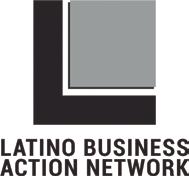
When one’s work makes an impact in the community, it transcends employment and becomes a calling. These executives have answered their call.
18 Susan Baida, University of Pittsburgh Medical Center
24 Maria Garton, BBA Aviation
BY BILLY YOST
UPMC’s Susan Baida helps Pennsylvania’s largest employer make huge strides in diversity and inclusion.
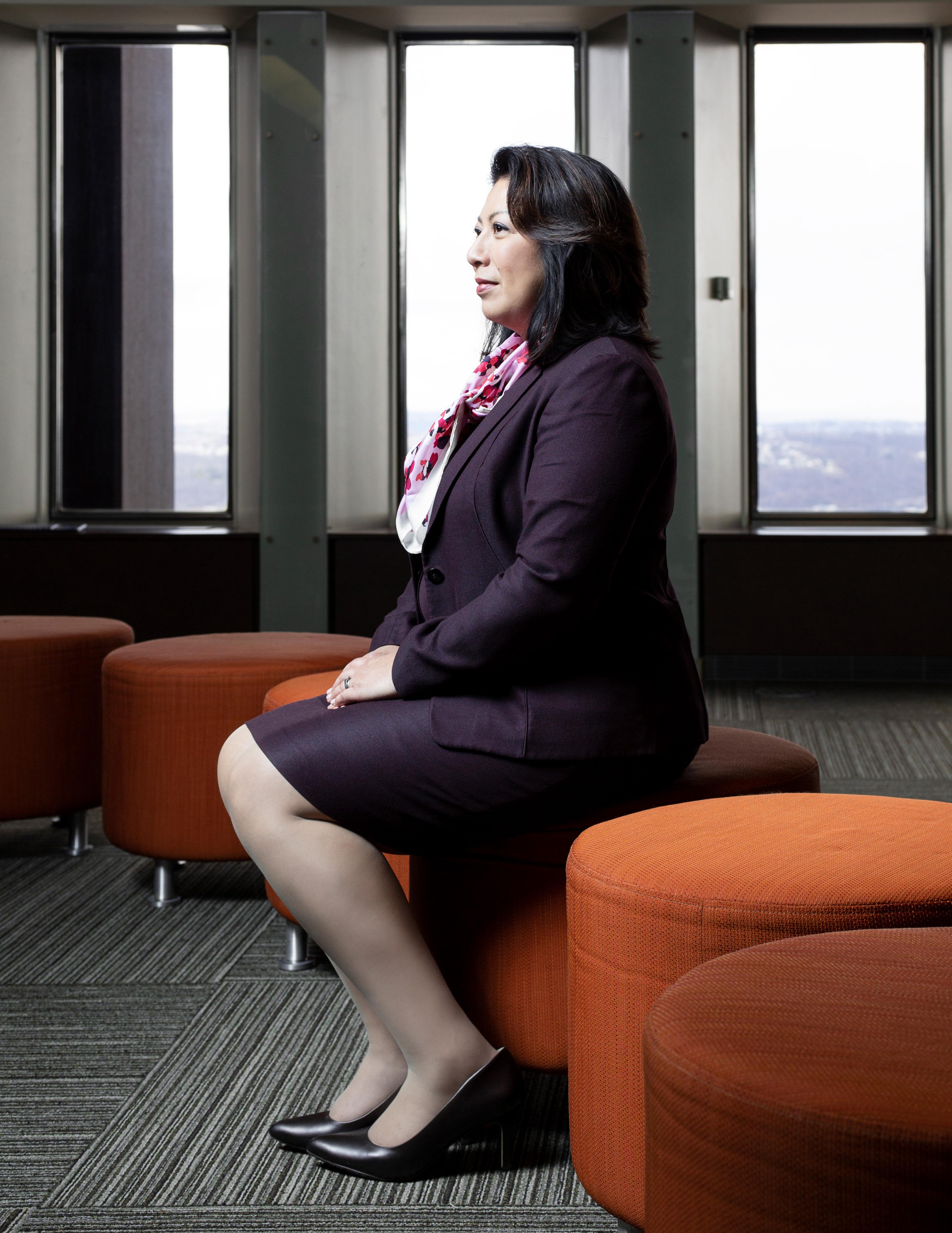
WITH 87,000 EMPLOYEES, 40 HOSPITALS, 700 doctors’ offices and outpatient sites, 4,900 physicians, and a 3.4 million-member insurance services division, the University of Pittsburgh Medical Center (UPMC) isn’t just a $19 billion integrated healthcare system, it’s the largest nongovernmental employer in the state of Pennsylvania. As such, the organization is able to make a defining mark in advancing its diversity and inclusion agenda and redefine the community role of the healthcare system into one of compassion, dignity, respect, and outreach. It’s a role the organization does not take lightly.
with Parkinson’s disease and her own father was blinded as a result of type 2 diabetes.
“eCareDiary was all in response to the dramatic increase of the aging population and all the unpaid care being provided to them by family members,” Baida says. The venture was successful and eventually sold, and Baida says it provided her valuable experience in better understanding the patient perspective. “It also exposed me to the variety of health disparities that exist amongst diverse populations,” she notes.
As a female minority business owner, Baida also gained a less-desirable perspective, often
“We meet [with the Community Health Partnership Council] on a quarterly basis to better understand the needs of the community and address those issues together. It has really been our forum to garner information about what our community needs.”
Susan Baida, UPMC’s engagement and inclusion director, leverages twenty years of experience working with underrepresented and underserved communities in her leadership toward the organization’s stated aim to “ensure that diversity, inclusion, dignity, respect, and cultural awareness are core components of the employee, health plan member, patient, and community experience.”
Baida left a global marketing executive role in 2008 to pursue a social entrepreneurial venture, eCareDiary, a technology platform for family caregivers to coordinate care. It was a personal project to Baida and her husband who were both caring for their own parents: Baida’s father-in-law was diagnosed
finding herself the only woman, let alone Latino, in the room. “It certainly revealed a lack of diversity in leadership roles,” Baida says. She was educated on the research showing that companies with higher levels of diversity are more innovative and grow at a faster rate, but realized that reality had a lot of catching up to do.
Baida saw the career move to UPMC as a chance to have a wider and more pervasive impact on diversity and inclusion matters. If the sheer number of community outreach programs and in-house initiatives Baida is able to rattle off is any indication, UPMC is the perfect fit.
In broad strokes, UPMC’s diversity and inclusion agenda was implemented with four strategic areas in mind:

(1) Enhance the diversity and cultural competency skill set of its employees.
(2) Provide culturally and linguistically competent care to improve the health status of its increasingly diverse patient and member population.
(3) Enrich the health status of those who live and work in the communities it serves.
(4) Grow its patient population and insurance membership through effective
Susan Baida Engagement and Inclusion Director
The University of Pittsburgh Medical
Center
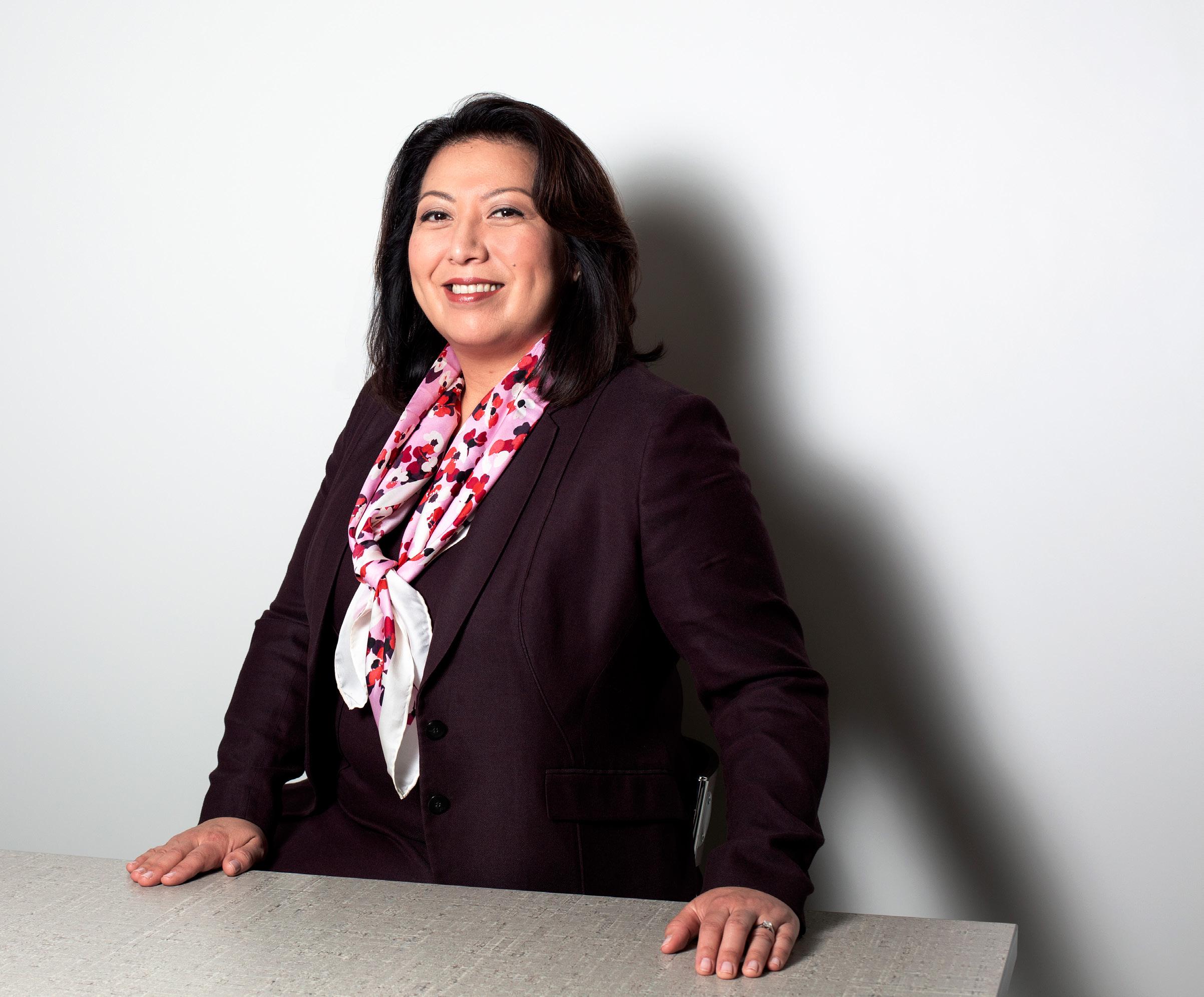
market-segmentation strategies that target the fastest-growing segments of the region. These strategic areas comprise a multitude of different efforts. From an executive workforce perspective, the organization has set out to increase representation of people of color in executive roles by 40 percent and women by 20 percent within a five-year span. As such, the percentage representing people of color at UPMC has
increased every quarter since the fourth quarter of 2017.
Additionally, a program aimed at increasing diverse representation within its nursing workforce, the UPMC Scholars Program, offers $25,000 annually in tuition to underrepresented students pursuing the University of Pittsburgh School of Nursing undergraduate program. Upon graduation, students are offered a three-year work commitment at one
of its hospitals, which removes the stress of searching for post-college employment.
“We recruit many of our nurses from the University of Pittsburgh School of Nursing, so it makes sense to offer scholarships to help increase their diverse population of undergraduate students,” Baida says. “When they graduate, they can pipeline into full-time nursing positions at UPMC.” The program started last year and Baida says that the applicant response has been fantastic.
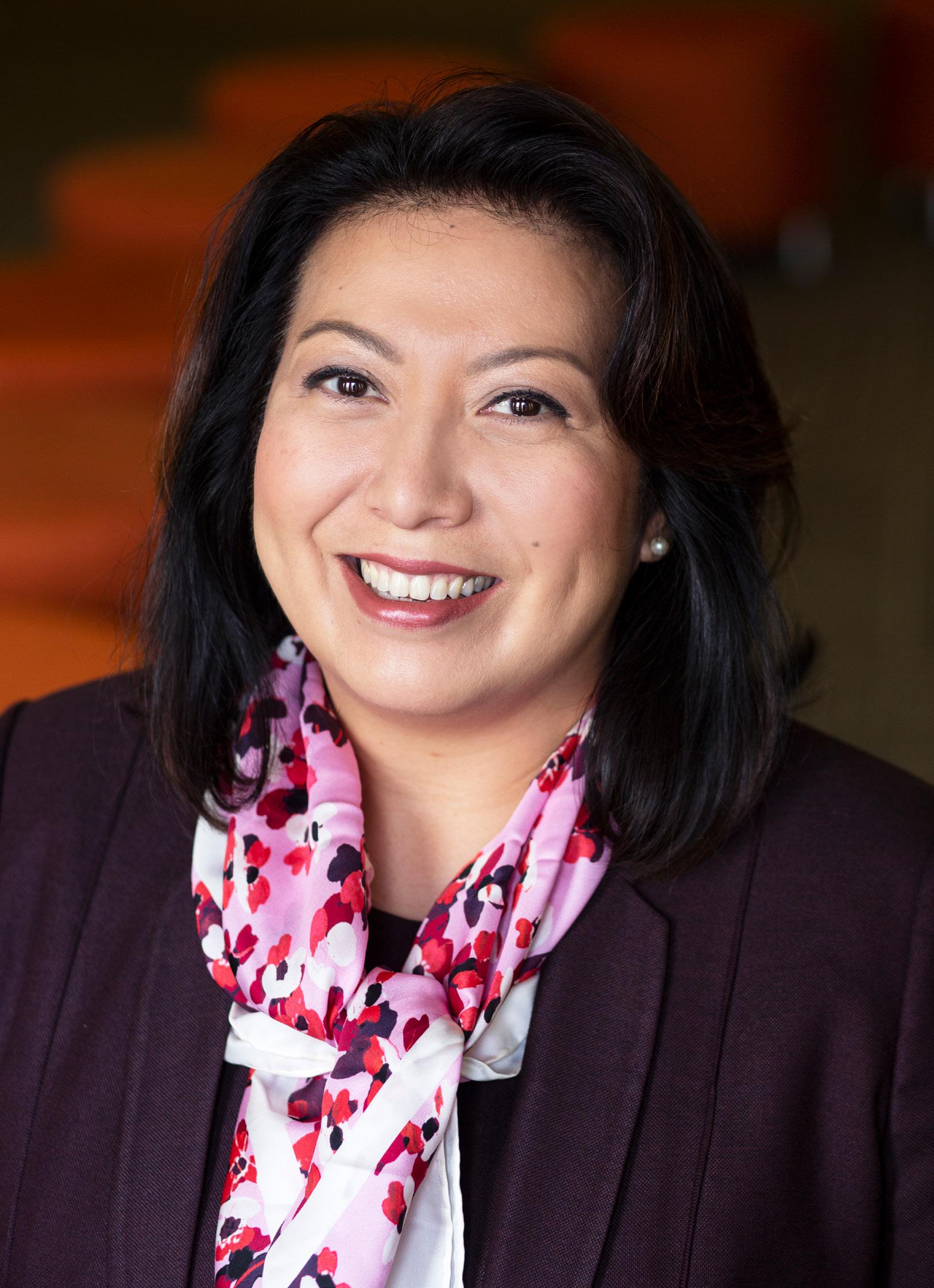
Annually, UPMC recognizes selected employees as “Champions of Dignity & Respect” through a six-month, systemwide nominations process. These employees set very high standards as role models of inclusive behavior and community service. They are then honored and celebrated at a breakfast event featuring a nationally recognized keynote speaker. This year’s event, held in March, featured best-selling author and spiritual leader Iyanla Vanzant who is also the creator and host of Iyanla: Fix My Life on the OWN network.
Within its own walls, UPMC offers a number of learning forums for employees to understand the impact of culture on healthcare outcomes to subsequently better serve their patients. These programs include addressing needs of the LGBTQ community, immigrants, and refugees, and combating unconscious bias in decisions impacting workforce and care-delivery practices.
Outside of its walls, UPMC has formed a Community Health Partnership Council. The council, Baida included, has internal stakeholders in the areas of patient experience, diversity and inclusion, and health plan, as well as community leaders that serve diverse populations. “ We meet on a quarterly basis to better understand the needs of the community and address those issues together,” Baida says. “It has really been our forum to garner information about what our community needs.” UPMC provides more than $1 billion in annual community contributions through free and subsidized programs, charity care, and hospital-funded research.
When it came to UPMC’s community strategy, Baida says she had the opportunity to revamp many of the efforts that were in place. Having transplanted seven years prior from New York City, Baida felt it was critical to get a better feeling for the community as a whole. “One of the first things I did was meet with the Allegheny County Health Depart-
ment to understand the major health disparities impacting our diverse populations,” she says. The University of Pittsburgh’s own extensive research also provided significant data on social determinants of health outcomes impacting the region.
Baida then worked to design a strategy that would complement, not overlap, other nonprofit efforts in the area. “ Pittsburgh is the second highest in the country in foundation funding, after New York City,” she says. “My goal was to figure out where we can partner together with these nonprofits to really have an impact.”
The strategy ultimately has focused on two major areas: gun violence prevention and diabetes prevention. “Gun violence is the number three leading cause of death amongst our diverse male population,” Baida says. That violence brings with it overwhelming trauma in underserved communities that Baida says UPMC can start focusing on. “I really have to give the community credit for our focus,” she explains. “After spending so much time speaking with these communities and neighborhoods, this consistently came up.”
There are many more initiatives, and many more programs. A Junior Healthcare Explorers program exposes children to a litany of healthcare careers. An anticipated partnership with the National Museum of African American History and Culture will showcase African American history and influence in the medical and health sciences fields. A push to address the impending employment gap stoked both by the retirement of baby boomers and UPMC’s continued growth and expansion. So many more, Baida admits there are almost too many to name in one conversation.
Ultimately, she’s just happy that UPMC has demonstrated a strong commitment to diversity and inclusion, a commitment that includes and supports all of Baida’s efforts. “That commitment really does stem from the top down,” she says.
MAKING AN IMPACT OUTSIDE UPMC
Susan Baida’s endless supply of community engagement spills over into her free time as well. “I have personally benefited from many community efforts as I was growing up,” she says. “I want to give back and help a new generation within my community.”
Baida serves on the board of Casa San José, a nonprofit organization serving the needs of Latino immigrants and youth in the Pittsburgh region; the Allegheny County Executive 2020 Census Commission; and the 2019 Pittsburgh International Jazz Festival Advisory Council, among others.
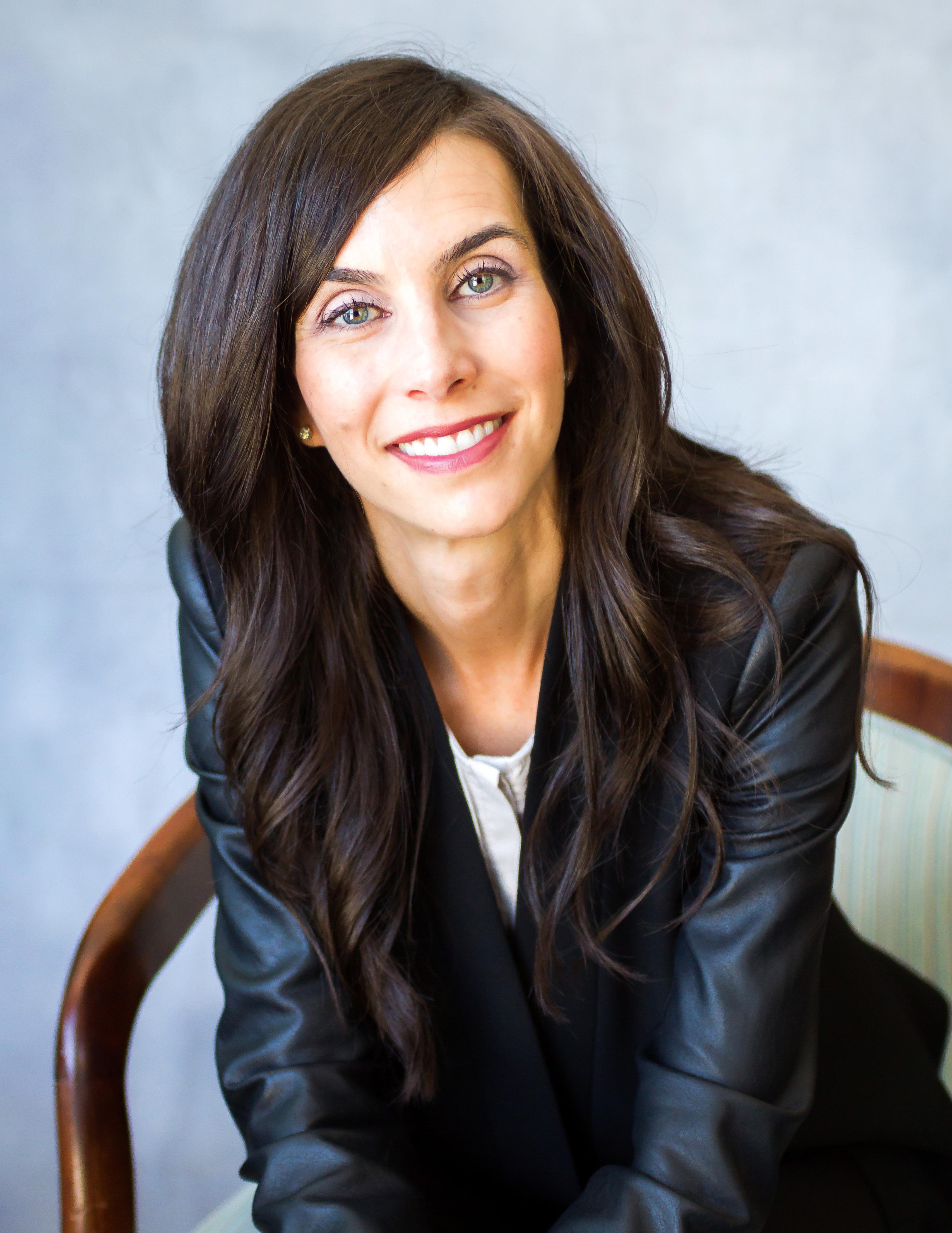
BY LIOR PHILLIPS
Dedication and hard work were instilled in Maria Garton at a young age. Today, as group general counsel at BBA Aviation, she elevates those values to be an exemplary Latina leader.

“IT STARTED WHEN I WAS IN KINDERGARTEN,” SAYS MARIA GARTON of the work ethic instilled in her by her family. “A lot was expected of me from the beginning—in school and sports—but I was never one of those people who could just breeze by.”
Garton’s father had moved to the US from Puerto Rico and her mother from Spain. Each immigrant’s experience made hard work a hallmark.
The family needed to move frequently, following her father’s job with the US Agency for International Development. “I hated it at the time, but that’s something I also credit as a tremendous advantage,” she says. The experience forced her to learn about people quickly, to adjust to new environments and analyze new situations. When the family moved to Costa Rica for five years, for example, the young Garton saw it as an opportunity rather than a challenge—refining the reading and writing of Spanish that she already spoke at home while experiencing a Latin American culture firsthand.
Garton would go on to study at both the University of Salamanca in Spain and the University of Virginia, earning her JD from Columbia University School of Law, continuing on her quest of putting hard work and dedication to good use. “I studied commercial law as a commerce student in my undergrad program, and I thought I could add value by helping companies navigate the complex legal world,” she says. “That’s when I decided to go to law school.
After graduating, Garton got her first associate job at Dewey Ballantine, working in the firm’s global finance group. She was fascinated by the work, which involved everything from drafting documents for refinance and credit transactions to due diligence for corporate transactions. But, no stranger to relocation, Garton found herself moving to Washington, DC, when her husband received a job offer. There she continued to grow her global project-finance experience at Hogan Lovells, advising clients on construction, financing, operation, procurement, and licensing for complex infrastructure projects, both in the US and internationally.
“It wasn’t a straight line that brought me here, but that’s why it’s important to take chances.”
While it’s true that the legal field has been playing catch-up in terms of representation and diversity, Garton found that she could offer key differentiating strengths grown from her unique upbringing. At Dewey Ballantine, she found great success working closely on projects in Latin America, as few other legal professionals had her level of personal experience and connection to the environment. At Hogan Lovells, she frequently worked with clients and negotiated with opposing counsel in both English and Spanish, her fluent bilingual ability prized by the firm.
After three years at Hogan Lovells, Garton was offered her first opportunity to become a general counsel for the Abu Dhabi-based Strata Manufacturing PJSC. Again, her childhood experience proved valuable, knowing that she could adjust to any new environment and learn customs and traditions quickly. “I didn’t know anything about Abu Dhabi, but I took the chance,” she says. The company was investing in aerospace and began developing parts for companies such as
to Maria Garton for her accomplishments
continued success.
Women of color are underrepresented across the corporate world, so BBA Aviation recently launched an inclusion and diversity initiative to drive change within its own organization. “We’re taking a serious look at our company and making sure that we have a diverse representation across the organization,” Maria Garton says. As a key part of that process, she emphasizes her place as a role model, representing the potential for other women and minority employees in leadership.
Garton also knows that setting a good example is only a part of the process. “While we already do a pretty good job when it comes to entry-level positions, we really want to bring that diversity up through the organization,” Garton says. “And I feel very fortunate to be a contributing member on the steering committee for the initiative. You get better results when you have an inclusive and diverse environment, and Latinas and women in particular can add a lot of value to the aerospace industry because we tend to be very good at building relationships, being empathetic, and quickly assessing situations to understand priorities—all essential skills in a field that relies so much on establishing a clear, precise strategy in the midst of a complex environment in a short amount of time.”
Boeing and Airbus as a way to diversify the country’s economy away from oil dependency.
Though she’d never considered aerospace and aviation as a career path, Garton quickly found a passion for the industry. “The people that work in the field are always very passionate, and there are so many challenges,” she says.
After five years in the United Arab Emirates with Strata, Garton and her husband decided that it was time to move back to the United States. An opening at Lockheed Martin Aeronautics allowed her to return to the states and continue on in the aviation industry. But her most recent opportunity came calling in the form of BBA Aviation: the FTSE 250 company was looking for a group general counsel, and Garton fit the bill perfectly.
“They were looking for a lawyer with a lot of international experience and expertise in aviation and aerospace,” she says. “It wasn’t a straight line that brought me here, but that’s why it’s important to take chances.”
While it’s important to take chances at the personal level, Garton’s responsibility is to guide her team in minimizing legal and regulatory risks wherever possible at BBA Aviation. That could include anything from leases and tenancy agreements to commercial contracts and M&A activity. The largest part of BBA’s business is Signature Flight Support, which runs fixed-base operations (FBO), providing services to the corporate and private jet market. “We look at refueling, maintenance, and other aircraft services,” Garton says. “It’s the industry’s largest FBO network, and there’s a lot to get to know.”
In addition, Garton’s team deals closely with Ontic, BBA Aviation’s legacy licensed-parts business, whose worldwide offices she visits during her travels to familiarize herself with the operational side of the BBA Aviation business.
To keep track of all of those moving pieces, Garton works as closely as she can with all members of her team. “Communication is just so crucial, and I want to make sure everyone is aligned on our goals,” she says.
“I work hard so that anyone who hasn’t worked with a woman or a Latina can interact with me and get a positive idea of what we can contribute.”

Garton of
Communication is a key differentiator at BBA compared to her previous companies, as well; as a customer-facing organization, Garton knows intimately the importance of getting the customer-satisfaction element right. To that same end, Garton brings her communication skills and focus on interpersonal connection to the executive management committee, helping bring the entire organization together to deliver on a united strategy.
Every day, Garton utilizes the work ethic that she has leaned upon ever since her childhood. “If I do my job well and build strong relationships, I can really represent women and Latinas in a positive light,” she says. “I work hard so that anyone who hasn’t worked with a woman or a Latina can interact with me and get a positive idea of what we can contribute.”
What is your secret to successful leadership?
impressive executives featured here share theirs, and they are strategies that engage both the mind and the heart.
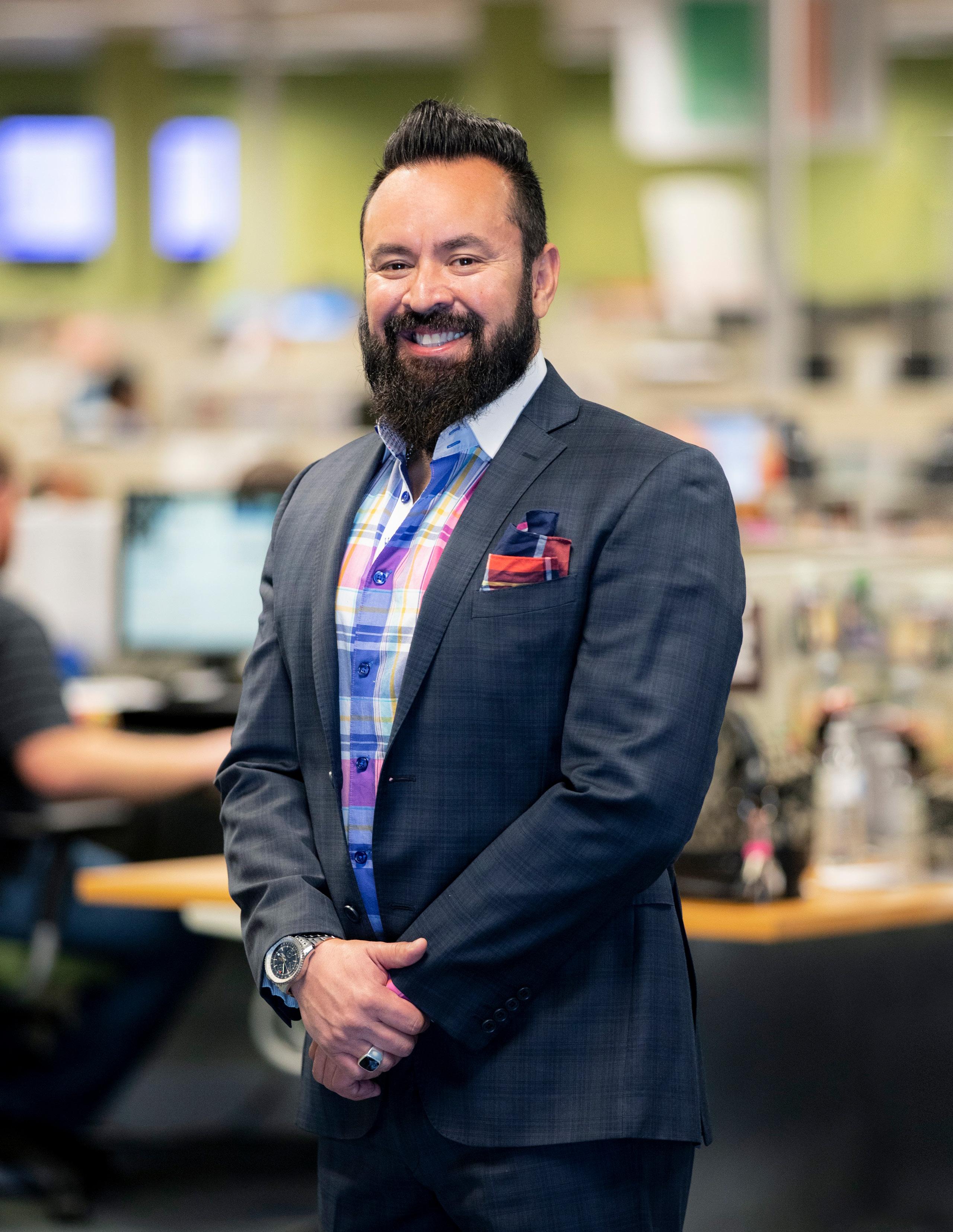
BY REBECCA ROBERTS
As VP of operations for ACT Inc., Junior Sanchez focuses on developing the careers of his staff by fostering a transformational leadership approach to collections.
JUNIOR SANCHEZ’S PASSION ABOUT HIS LIFELONG CAREER IN THE collections industry is twofold.
First, there is the work itself: Sanchez describes the company’s philosophy of changing lives by helping people get out of debt. “No one wants to be in debt,” he says. “Something happened in their life that put them in this situation. We have opportunity and solutions that will help them.”
The second rewarding aspect of his career is developing people. Sanchez takes the most pride in helping the people he works with succeed, both in terms of their career goals and their personal goals. At ACT Inc., where Sanchez is the VP of operations, he has had ample opportunities to advance the careers of others, first through expanding ACT’s presence in San Angelo, Texas, and then by opening a new ACT office in the Cincinnati area.
After two years in San Angelo, Sanchez had grown the employee count from 100 to more than 180 and revamped the culture to foster a more motivating and productive environment. When ACT needed to further grow its headcount, the company expanded by opening a new office in Ohio with Sanchez at the helm. The Ohio team comprised nine people on its opening day, including two who had moved from San Angelo along with Sanchez. Today, the Ohio ACT team has a capacity of 350 members.
Hiring staff is one feat, but engaging and retaining them is the true result of strong leadership. Sanchez’s leadership focuses on a culture that directly rewards hard work and builds a sense of community.
He describes a typical organizational chart, with the leader at the top and entry-level employees at the bottom. At ACT, Sanchez views his team as an inversion of this chart, with transparency and accessibility permeating each level. He stresses that he wants collectors, team leads, and managers to take an entrepreneurial approach to their work.
“We don’t micromanage. We identify our people’s strengths and give them the tools to be successful, and the team understands that they are responsible for their own success or failure,” he says.
To help facilitate success, managers schedule monthly performance assessments where employees can have honest and open conversations about what is going well and where they would like to improve. These conversations are not just about work: Sanchez stresses the importance of forming strong relationships and encourages team members to also discuss their objectives for personal growth outside of work.
“When I opened this office, I had a goal to build thirty careers. We’ve tracked employee progress, and so far, ninety-four people have been promoted in this office since its opening.”
Policies at ACT are also structured to empower employees to take ownership of their work. Employees who meet their expectations each month have the ability to build their own schedules the following month. This allows them to have the flexibility to customize their workday with any shifts during the week as long as they work the requisite forty hours per week during ACT’s hours of operations.
Sanchez explains that this policy came about due to his team’s needs outside of the workplace. “We have a lot of single parents as well as people who are health and fitness conscious,” he says. “We listened and took these schedule constraints into consideration, giving people the ability to manage their lives and still be productive at work.” The bonus structure at ACT is also designed to reward those who deliver strong results with an unlimited monthly maximum payout. Even the way that office design influences culture was taken into account at ACT, with choices that improve performance






• Compliance
• Performance
• Technology




Junior Sanchez is a valued mentor and true business partner. Thank you for everything you have done to help make Core Recoveries a leader in performance and compliance on the Department of Education Contract. Core Recoveries
results and subtly communicate to employees that they are valued. “We have a completely open office with low cubicles. Employees can feed off of each other’s energy,” Sanchez says. Workstations have ergonomic desks and chairs. The color scheme of green, orange, and blue was deliberately chosen based on studies of how colors impact mood. Instead of a break room, ACT has a café with a variety of seating options, games, and a television. Sanchez emphasizes that he wants his staff to relax on their breaks. “I started as a collector, so I know what their job is like and how important it is reset during lunches and breaks,” he says.
Every practice, policy, and environmental detail at ACT aligns with Sanchez’s mission to enhance the careers and lives of those he works with, and it shows: ACT has twice earned a high spot (eighth place, then first place the following year) on the list of Cincinnati’s top one hundred workplaces.
“When I opened this office, I had a goal to build thirty careers. We’ve tracked employee progress, and so far, ninety-four people have been promoted in this office since its opening,” he says. Included in those numbers are the two employees who traveled with Sanchez from San Angelo to open the Ohio office. Sanchez explains with pride that both of those individuals began their careers at ACT in entry-level collections roles and have since worked their way up the ladder to become team leads and eventually operations managers. “Watching someone come in here and evolve, watching their personality and confidence change, watching their personal goals change—that’s my favorite thing about this job.”
Sobre su Familia
Sanchez’s values stem from watching his father work as a manager at Sears when he was a child. He was inspired by how his father’s employees gravitated towards him and took it to heart when his father told him, “If you want to be successful, you don’t build a business; you build your people, and your people will build your business. If you remember that, you will be successful in everything that you do.”
Marathon Oil’s business strategy emphasizes operational excellence, innovation, and talent. Director of Talent Edwin Suarez explains how diversity and inclusion supports the company’s pursuit of sustained success.
BY CLINT WORTHINGTON
AN EVOLVING BUSINESS STRATEGY AND AN intense focus on innovation have kept Marathon Oil, an independent US oil and gas exploration and production company, going strong for more than 130 years. And this year is no different.
Centered on a clear business strategy, the company embarked on a transformational journey more than five years ago that has driven a peer-leading balance sheet and a multibasin portfolio focused on four US resource plays. As director of talent supporting the company’s Technology & Innovation organization, Edwin Suarez is focused on leadership development, diversity, and encouraging innovative thinking across the company.
A Colombian native, Suarez began his US career in one of the highly acclaimed leadership-development programs at General Electric. After the program, he spent fifteen years jumping between digital tech-
nologies, business operations, software, and process-excellence leadership roles. “I was all over the world,” he says—and, in doing so, he gained substantial knowledge of the inner workings and leadership styles of a number of corporate cultures within GE.
In his role at Marathon Oil, Suarez’s first priority is to cultivate a culture of innovation and inclusion. This includes increased leadership training as well as building development programs and shoring up core competencies.
Suarez says diversity continues to be extremely important to the company’s ongoing success. “We believe a positive, constructive environment requires diversity—more ideas are brought to the table,” he says. To that end, Suarez has been working to help others become more aware of the potential for unintended biases, improve inclusion in hiring, and build partnerships to aid in bolstering diverse environments.

“Being a diverse candidate myself,” he adds, “I believe that the mission of a great leader is building and developing other leaders—not just diversity of people, but diversity of thought.” He explains that, by creating an environment that ensures the positive development of women and people of color, he is a facilitator of thought leadership.
Suarez takes his own continued leadership development very seriously as well. Over the years, he has evolved his style to suit the needs of his organization.
“Communication is key,” he says. More than promptly replying to emails, he works to bring everyone together to drive the company’s goals. He believes it’s important to look beyond the short term and understand how each team member fits into the long-term picture.
“To support each other, sometimes we have to think at a higher level and see the bigger picture,” he explains. Supporting one another speaks to Marathon Oil’s cultivation of a collaborative environment and “one team” approach.
“Your people make a choice every time they come into work.”
On a day-to-day basis, Suarez is very direct and candid with his colleagues, reinforcing their natural team dynamic and collaborative mind-set. Though he ensures work is aligned with Marathon Oil’s strategy, he prefers to foster an environment where what people need to do and what they want to do are one and the same.
Before all of this, though, Suarez advises the organizations he supports that leadership starts with hiring the best people for the job in the first place: “The key is to hire people smarter than you,” he says. “Then get out of the way and let them do their thing.” While it’s always important to provide direction to make sure your team is aligned in their professional goals, Suarez reminds others to empower instead of instruct. “Which is not always easy to do,” he notes.
With a background in the tech industry, Suarez had already formed the skills needed to create a culture of innovation—where people learn from their mistakes and move on. “It’s very expensive to be perfect,” he says, adding that Marathon Oil prefers to cultivate an environment where employees can try ideas, learn from them, and adjust to make them better. “Early on, I was very heavily informed by my creative mindset, because that’s how we do things in software: try, learn, and iterate,” Suarez notes, adding that he hopes to continue to encourage teams to value and foster innovation and inclusion at all levels of employment.
“Your people make a choice every time they come into work,” he says. ”To inspire the best out of them, you have to make sure they keep making that choice day in and day out.”

We’re honored to be named one of Houston’s Top Workplaces 2018.
Our outstanding team members are the heart of Marathon Oil.
We celebrate their bold, independent spirit, commitment to our shared values, and everything they do to make a difference at work, at home and in our communities.





BY BILLY YOST
CBS Interactive’s Rosie De La Cruz explains her methods for developing critical thinkers.

A PASSION FOR MATH WAS INSTILLED IN Rosie De La Cruz at a young age. Her father, knowingly or not, fed the burgeoning financier a steady diet of videos showcasing the talents of one Scott Flansburg, known as “The Human Calculator.” The Guinness World Record holder for speed of mental calculation and annual host and ambassador for World Maths Day is able to compute astonishingly large calculations at speeds faster than one can type in the numbers on a calculator. And while De La Cruz didn’t go into the speed calculation field, she has held several key financial roles at CBS Interactive, home to the network’s online entertainment, sports, and news properties as well as varying brands, including CNET, GameSpot, TVGuide.com, and Chowhound.
Currently serving as vice president of revenue and accounting, De La Cruz says taking on a variety of roles is part of the reason she has spent nearly fifteen years in the CBS enterprise, first at CBS Radio and later at CBS Interactive. “I’ve been given some great, challenging opportunities here,” De La Cruz says. “CBS has allowed me to grow and advance in different roles, some of which were hybrids, like accounting/finance and operations/sales support.”
As her roles have grown, De La Cruz says her focus on leadership development continues to expand. In 2018, De La Cruz was selected as a key talent to participate in an exclusive in-house leadership-development course called Elevate. Participants partnered with an HR coach, participated in a series of courses focused on motivating teams and business strategy, and worked on developing individual leadership visions.
“What I appreciated the most was attending the speaker series from the executive team; it inspired me to think of my own leadership style,” De La Cruz says. “They shared their journeys, their different perspectives on leadership, and their different leadership
“We are part of a growing division, so we have to be at scale with the growth here. That just means thinking smarter about how we do things.”
styles.” She explains that the entire experience aligns with her own underlying philosophy: the importance of building a solid foundation of skills in order to be successful in any future opportunities.
De La Cruz’s own approach to leadership has evolved in response to the development program. “My style is a mixture of coaching and strategic leadership,” she says. “I think strategically about aligning my team members’ individual strengths with others’ weaknesses in order to cultivate a better overall team.” The vice president says she strategizes with her team to not only meet goals, but to exceed them.
The coaching component is more evident in the atmosphere De La Cruz looks to foster among her team. “I work hard to create an inclusive environment,” she says. “I’m viewed as approachable, and my door is always open.”
Surprising herself, De La Cruz ranked very high in emotional intelligence during her leadership training, and she believes this helps her be effective in guiding and educating without micromanaging.
Over the course of her career, there has been a constant on the teams De La Cruz has managed. “Whether it’s on the financial or operations side, my teams always seem to have a high level of dedication,” she says.
“They make sure to meet tight deadlines and deliver quality results.”
One of the most challenging aspects of leadership for De La Cruz has been widening her scope, as the roles of a leader are much different than a team member accountable for defined tasks.
“Success has really evolved into developing a group of critical thinkers,” De La Cruz says. “I want to build teams that exude collaboration and cohesion.” That means building teams that continuously work toward finding ways to think better, faster, and more accurately.
After an extensive but successful ERP implementation, De La Cruz says her team’s goal is now to identify efficiency and process improvements as well as additional automation that might be leveraged internally or with prospective vendor partnerships that may make sense for CBS Interactive initiatives. “We are part of a growing division, so we have to be at scale with the growth here,” De La Cruz says. “That just means thinking smarter about how we do things.”
“Thinking smarter” is a consistent theme for De La Cruz, and her determination to do so seems innate. “I was very motivated at a young age to make my parents proud,” she says. As the first in her family to go to college and earn a postgraduate degree, De La Cruz’ motivation has inspired her cousins, nieces, and nephews to believe that anything can be done with the proper foundation in place. “For me, that was education,” she says. “I think my biggest accomplishment, though, has been becoming a role model for my family, demonstrating to them that anything is possible if you work hard and set your mind to it.”
Congratulations to Rosie De La Cruz

For her recognition in this issue of

BY RUSS KLETTKE
When MetroPCS joined with T-Mobile, it was about expanding distribution. But pushing those names closer together—Metro by T-Mobile—communicated something bigger, and Chris Luna’s cross-functional collaborative approach to managing the rebrand reflects the company’s people-focused values.

THE UBIQUITY OF CELLULAR PHONES SPEAKS TO THEIR NEAR-TOTAL popularity: data from the Pew Research Center shows that 95 percent of all Americans own a cell phone of some form—basic phones, feature phones, smartphones, etc. As such, wireless carrier networks are a regular part of Americans’ lives.
For wireless providers, this boom triggered the need to pool resources, as illustrated by such mergers as T-Mobile and MetroPCS (now known as Metro by T-Mobile) in 2013. Attorney Chris Luna, Metro by T-Mobile’s vice president of legal and its chief counsel, has a well-informed perspective on this market climate. He’s been with the company since 2005, and saw it through the merger, a major branding change, a doubling of its customers, and a near-trebling of points of distribution—including all the associated regulatory and other legal issues.
“In 2001, about 35 percent of the population had smartphones,” says Luna. “Today that’s up to 77 percent.” He goes on to explain that secondary devices using cellular service—tablets and, in many cases, second phones—combined with higher customer expectations for streaming services, mean that Metro has a lot more data to handle and transmit today than just a few years ago.
“Texting and phone calls actually use the least of the bandwidth,” he says. “But people are watching movies on their phones—that takes up a lot more of the spectrum. All of this meant we had to build capacity.”
That includes all the equipment necessary to do so, but it also required obtaining additional frequencies from the Federal Communications Commission (FCC). Luna describes how those auctions, held regularly, are an important part of being a cellular service provider, and both the legal and government affairs departments are involved. They need to help the company’s leadership determine strategies for investment (including, of course, what the payoff will be) and obey FCC and Federal Trade Commission rules—such as how to avoid collusion and to remain compliant.
As telecommunications advance from 3G to 4G and, now, to 5G (i.e., generations of wireless technologies), data moves faster—but all parts of the system have to be able to move with it. Lawyers in the company support, for example, engineers setting up cell towers that
“[The rebrand workflow] was like drinking water from a fire hose. It was like starting a new company.”
make that connectivity possible. The difference is: with more users, more devices, and demands for speed, many more small cell towers— which look like boxes on light poles—will become the norm. The legal process in making that happen is considerable and daunting.
The company has also formed some strategic alliances that give it important market advantages. Those include Amazon Prime, which provides access to video and music plus free faster shipping, and Google One, which provides 100 GB of cloud storage and mobile backup as well as mobile hotspot capabilities. Both relationships require ongoing attention from the legal department.
Metro was and remains a prepaid phone offering. However, the T-Mobile merger blurred the lines between traditional prepaid and postpaid services by expanding Metro’s distribution from seventeen to forty-six states. That means twenty-nine new state regulatory issues to iron out—and an exponential amount of store leases.
“[The rebrand workflow] was like drinking water from a fire hose,” Luna says. Sweepstakes-based promotions, which are heavily regulated and vary by state, are nonetheless conducted, adding to their responsibilities.
A few years after the merger, the company realized the benefit of the larger T-Mobile network was unclear to consumers, so bringing the names together into a single identity made sense.
This was no small undertaking. From logo-identity development and trademark work to promoting the new brand, the legal team had to join forces with marketing and operations teams to make it happen.
“It was like starting a new company,” Luna says. “Everything that was consumer facing was changed. It took a year, starting with focus groups, trademark searches, and testing the messaging on Google One and Amazon Prime.” He adds that working closely with internal and external business partners was both necessary and fun.
Fortunately, working across a spectrum of players and their needs is something that Luna was uniquely trained for. In a bit of a career sidestep that lasted six years (three two-year terms), he was elected to the Dallas City Council.
“The managerial responsibilities I learned there were foundational to my development,” he says. (At that time, the city employed 12,000
Chris Luna strongly advocates for increasing the pipeline of attorneys of Hispanic heritage. He is a past president and board member of the Dallas Hispanic Law Foundation, which provides scholarships to law school, grants to cover bar-review courses, and stipends for a judicial internship program. The foundation has distributed more than $400,000 since 2006.
Having rotated off the board, Luna is now the organization’s fundraising chair, which includes a summer event for law firms and companies that contribute to the cause. “We are building an endowment to make this self-supporting eventually,” he says.

At Greenberg Traurig we proudly celebrate our long-standing client relationship with Metro by T-Mobile and congratulate our friend Chris Luna for his many accomplishments as Vice President-Legal and Chief Counsel

Greenberg Traurig, P.A. 450 South Orange Avenue | Suite 650 Orlando, FL 32801 | 407.420.1000
DWT is pleased to recognize Chris Luna for his outstanding service to T-Mobile and the telecommunications industry at large. It is our privilege to work with Chris and the team at T-Mobile.
people and worked on a $1.2 billion annual budget.) “We considered everything from how federal regulations affect municipal government to what kind of monkey chow we’d be buying for the zoo.”
The pay in that position was a far cry from what lawyers make, so he returned to private-practice law for a brief period before joining the phone provider—with a broadened perspective.
The company serves the breadth of the US population, and thus endeavors to employ a diverse workforce. Luna serves as the cochair of the legal department’s Diversity Task Force, which affects about 350 people overall (120 lawyers plus analysts, specialists, paralegals, and support staff in multiple locations). The task force looks outward, surveying and promoting diversity in its outside legal counsel as well as hiring minority-and women-owned firms. It also has an internal hiring and retention focus.
All of which is reassuring: Despite a huge merger and expansive growth in a technologically advancing industry, it’s still the people who make up the company that determine its success.
With such a widely distributed product, serving a near-universal need with a diverse vendor list and employee base—this is an attorney and company that send clear signals.
Greenberg Traurig is proud to work with business leaders like Chris Luna who make an impact in the telecommunications industry and the legal community.
We applaud Chris for his commitment to giving back to his community and serving as an advocate for diversity in the legal profession.
with a smile.
BY BILLY YOST
GEOVANI BONILLA IS IN THE MIDDLE OF YET another crisis. He received a call alerting him that two Indiana University Health Plans patients are overseas, need medical care, and are unable to come home.
“This is why we do what we do,” Bonilla says. “We need to navigate the regulations of the country and figure out how to get them home and give the best coverage we can.”
Despite the crisis, the vice president of medical operations says these moments are when he feels most upbeat about his work. In this often-challenging job, Bonilla never seems negative. He focuses on his team’s singular goal of helping Indiana become the healthiest state in the country, all while navigating a sea of regulation, deregulation, and one of the most uncertain moments in Medicare history.
As fragments of the Affordable Care Act are rolled back in Indiana, more employers are seeking to reduce regulatory burden of
fully insured coverage and become self-insured, essentially taking on the risk of their employees, and in the process sometimes limiting the scope of what their workers can receive coverage for. “Employees are being impacted in ways they don’t understand,” Bonilla says. “That makes it challenging for us.” IU Health Plans is then tasked with creating more varieties of benefits packages and exponentially increasing the day-to-day operations of Bonilla’s team.
As the Medicare population rises to all-time-high levels, murky regulatory waters and literal weekly on-a-dime changes from the federal government mean IU Health Plans has to walk two very different, concurrent paths. “We need to build systems and strategies to make sure we’re compliant but also quickly adapt to change,” Bonilla says. “The regulatory landscape is interesting, especially since we’re doing a lot of rollbacks on what was put in place by the previous administration.”
“We need to build systems and strategies to make sure we’re compliant but also quickly adapt to change. The regulatory landscape is interesting, especially since we’re doing a lot of rollbacks on what was put in place by the previous administration.”
As a young Honduran immigrant, it wasn’t uncommon for Bonilla’s family to have to make a quarter of a chicken last two days. Familiar with poverty, Bonilla now serves on the board of the Perry School Community Center. “It is a great example of an organization that brings a variety of nonprofits that provide healthcare, adult GED programs, day care, basic financial skills, and college prep courses so individuals overcome poverty,” Bonilla says. Indiana Main Street programs like Step Up Inc. and the Indianapolis City Ballet are also beneficiaries of Bonilla’s time and talent.
The pharmacy department has had to increase resources just to keep up with the weekly memos from Medicare. “Not only do they have to manage the medical costs but also what do we do with patients when they reach the infamous ‘donut hole,’” Bonilla says of the coverage gap that leaves a lot of Medicare patients paying out of pocket.
Meanwhile, the quality department is tasked with maintaining IU Health Plans’ high rankings. “Our quality and rankings are dependent on how well we get our patients to come in and see their doctors,” Bonilla says. “We have to develop strategies to work with physicians to engage the patients—and engage the patients ourselves.” That means encouraging men to get colorectal screening and other tasks that patients are likely to avoid as long as possible.
Bonilla speaks confidently about the unenviable task of working with healthcare professionals to manage patient costs. At worst, doctors can think they’re being told how to practice and prescribe. Bonilla says understanding and empathizing with doctors is essential because, ultimately, they are both working toward healthy patient outcomes. And it’s the same for IU Health Plan’ customers. “Patients may want ‘the purple pill’ because that’s what they’ve seen on TV, and millions of marketing dollars have been spent to make sure they see it,” Bonilla says. “It also may cost $1,000 a month. The ‘green pill’ may have the exact same effect but at a fraction of the cost.”
The VP isn’t speaking out of turn. In Bonilla’s previous twelve years in hospice management services, it was mandatory for anyone speaking with a doctor to understand what was at stake. “We were expected to understand the pharmacology behind the medication, how the medication was administered, how to change the dosage in the

Geovani Bonilla VP of Medical Operations
Indiana University Health Plans
meds, and, most importantly, if I was going to talk to a doctor about changing from one medication to another, I had to be able to explain the rationale and convert the dosages,” Bonilla says. “It was just an expectation of the job.”
Bonilla says he learned at an early age that if he wanted to be credible and be taken seriously, he knew he was going to have to do his homework.
“My first job was as a bag boy at Winn-Dixie, and I was going to be the best bag boy there was,” Bonilla says.
He adds that IU Health Plans will continue to be mission oriented by heeding CEO Dennis Murphy’s assertion that measuring the success of the organization isn’t about the bottom line, it’s about excess revenue to reinvest in the health of the state.

























We salute Geovani Bonilla VP, Medical Management Operations at Indiana University Health Plans for his vision, collaboration and leadership
UST Global Healthcare Platform Solutions (HPS) has extensive experience in delivering platform-based solutions to leading healthcare organizations. Our team of industry experts support clients at every stage of the transformation process, from project consulting to system implementations to full BPaaS (Business Process as a Service) for claims and care-management processing.
Visit www.ust-global.com
Perhaps the ultimate form of leadership is business ownership, and the Latinx community is rich with entrepreneurs.
For this, our annual issue focused on leadership, we are introducing a new focus area: entrepreneurship.


Hispanic Executive Publisher, Guerrero Media CEO, and entrepreneur Pedro A. Guerrero discusses the state of Latino entrepreneurship with Mark L. Madrid, CEO of the Latino Business Action Network.
Both are graduates of the Stanford Latino Entrepreneurship Initiative’s Education-Scaling program, and in different ways, their work follows a similar mission: elevating the prosperity of the Latino community. Step into the conversation between these two entrepreneurs . . .
PEDRO: Mark, kick us off.
MARK: Absolutely. There’s an iconic leader by the name of Professor Jerry Porras. He’s the only tenured US Latino/a professor in the history of the Stanford Graduate School of Business (GSB). In 2012, he convened Stanford MBA blood, Latino/a blood, high-profile leaders like Victor Arias and Phil Pompa. They came together and they birthed LBAN, the Latino Business Action Network.
Very intentionally, the word “action” was put in our name from the very start, so that we would be positioned as walkers, and not talkers. I couldn’t be more honored to work with LBAN’s cofounders and existing board of directors. Our chairman, Victor Arias, chairman emeritus Jerry Porras, and board members are leading us on a strategic path that will change the course of history for Latinos in the United States.
They approached John Hennessy, the former president of Stanford, who’s now the chair of Alphabet Inc., and he stated, “This is the right thing to do. This is the right time to do it, and Stanford is the place to do it.” That sprung this collaboration.
LBAN is a 501(c)(3) nonprofit organization that collaborates with the Stanford GSB to champion the Stanford Latino Entrepreneurship Initiative (SLEI). LBAN funds research and education impact programs at the Stanford GSB.
The collaborative’s first order of business was a bedrock of research. I believe this group was displeased with the deficiency of solid research on Hispanic businesses locally, regionally, and nationally. They said, “We’re going to disrupt that research deficiency, and it’s not going to be a copy-paste job. It’s going to be something robust, up to the Stanford code of academic rigor and its Tier 1 research institution status.”
So began our research, which later turned into The State of Latino Entrepreneurship report, which SLEI produces annually.
The research started showing that only 2-3 percent of our ecosystem of Latinx entrepreneurs across the country is scaled (earning $1+ million of annual gross revenue). So the nonprofit, LBAN, said, “We’re going to go out and recruit these scaled businesses.” At that time, there were about 4 million Latino-owned US businesses, so take 2-3 percent of that.
So began the executive education side—a scaling program through Stanford GSB Executive Ed. It’s a beautiful manifestation of the collaboration once more.
This is a very prestigious program and our laser focus continues to be targeting the 2-3 percent ecosystem of scaled Latinx firms for participation. That’s where you come in, Pedro—we created partnerships with entrepreneurs like you to be a part of this scaling program.
PEDRO: Yes. A good friend of mine, Lou Nieto, introduced me to SLEI. And my first memory of the program was the first conversation I had with the mentor I was paired up with, Steve Bernardez. It was great to hear his perspective on certain challenges that I was up against. He was a partner at a venture capital firm in California and very much in the tech space. We’re not a tech company, so it was good to hear his perspective on certain challenges or ideas that I had. It was a different level of experience and voice that I hadn’t experienced. So, that was very helpful.
I also thought the online course was phenomenal—I still talk about it today. Specifically Professor Huggy Rao’s class on how to scale excellence.
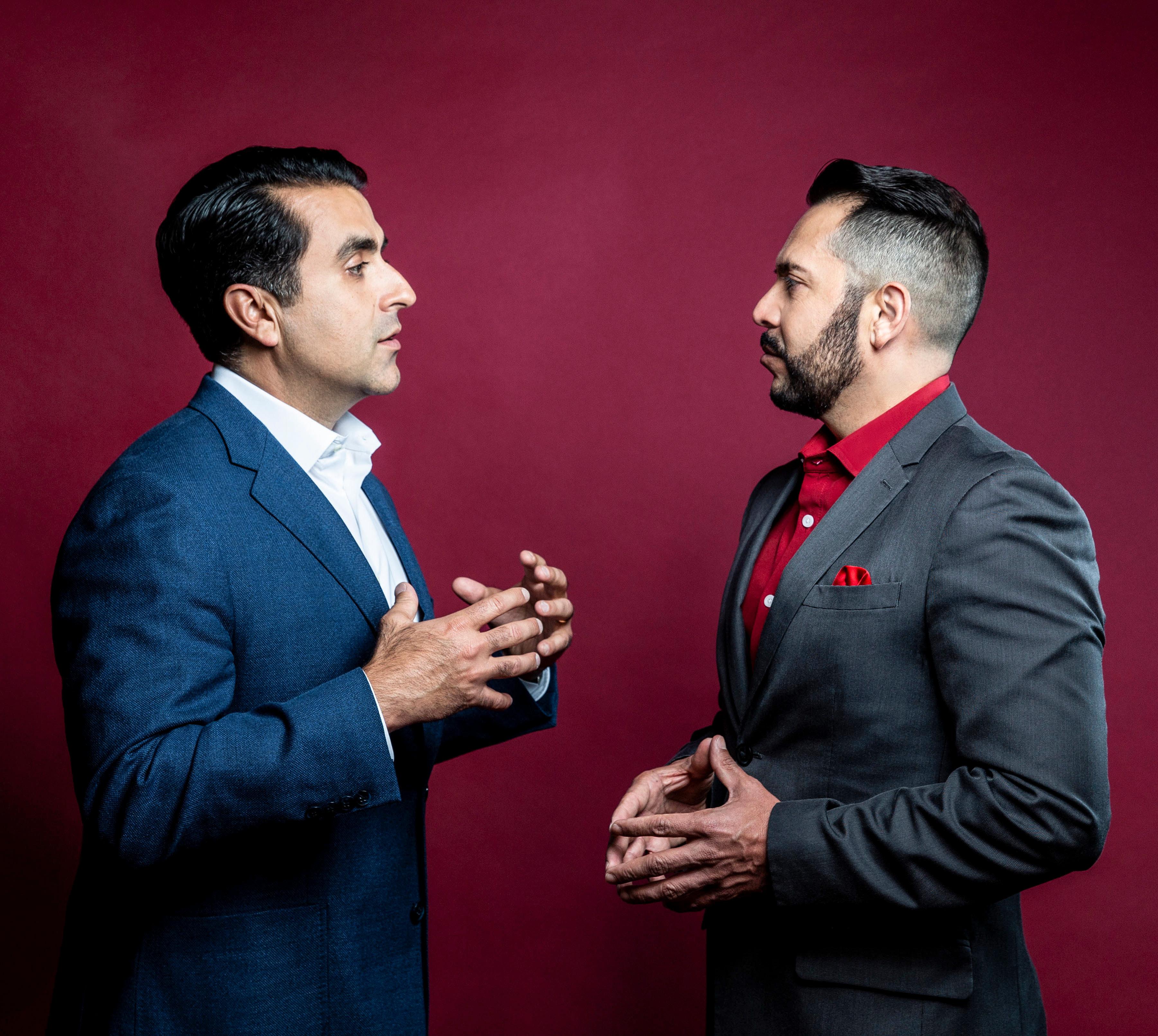
I’ll give you one example directly from that online course: Rao was sharing the lessons of a construction company that made a bold declaration around a zero-injuries on the job. It was a statement that defied the realities of the construction industry. But it was a bold statement that was intended to scale behavior, one that did not tolerate injuries on the job. This declaration of “zero injuries” championed by the company’s CEO rallied the culture of the construction company around a mind-set that did not tolerate injuries whatsoever, and the rates of injuries on the workforce started to decline tremendously.
I’m sharing this example because my creative team remembers a similar tactic we employed at Guerrero Media—I wanted to make the statement that we’re going to have “zero errors” in our content. I remember proposing this idea and the pushback was essentially,
“I was surrounded by inspiration in action: Latinx entrepreneurs from across the US converging in a classroom at the Stanford GSB. It was unlike anything I had ever experienced!”
“Errors happen, boss. There’s no way that we’re going to never have an error.” But I was convinced that this statement would work and replied, “No, we have to put it out there. Zero errors.”
So we made this declaration a year ago and it was reported back to the leadership team that the most recent issues of our magazines were sent to press with zero errors.
I attribute that success directly back to SLEI and what I learned via Professor Huggy Rao’s online course.
I really took away applicable tools on how to scale things. Such as the concept of an ‘air war’ and a ‘ground war’—I talk about that all the time. I give speeches to the company, which is the air war, and I challenge my management team by asking them for their groundwar plans to scale our message—because without one, I tell them, “You’re going to walk out of here, and you’re going to forget about it. So, what’s our ground war to follow the air war? What are we going to do in our day to day? How are we going to coach? How are we going to interact with our people? What subtle cues are we going to put around the office to support our campaign?”
So, I’ve taken a lot from SLEI and applied it hands-on at my company.
MARK: Man, I appreciate what you just said. The lessons that resonated with you, those are very powerful. . . . I see the growth mind-set awoken.
Over the course of the last three-and-a-half years, we’ve graduated six cohorts: 432 graduates that account for $1.6 billion dollars in annual gross revenue—contributions to the American economy. They employ over 45,000 people across thirty states and Puerto Rico.
I was in the second cohort. I wouldn’t be sitting here today in this national leadership position if I hadn’t graduated from the program myself.
I put everything into it, and I was surrounded by inspiration in action: Latinx entrepreneurs from across the US converging in a classroom at the Stanford GSB. It was unlike anything I had ever experienced!
And when Professor Porras and Huggy Rao assumed their positions as lecturers, we all understood that this was a big deal.
We have the secret sauce. An amazing millennial tech entrepreneur who gets a partnership with Mark Cuban on Shark Tank for his vegan-dog-food business can sit in the classroom with somebody who’s owned a restaurant for twenty-five years. That, to me, is earth-shattering and distinct.
PEDRO: Right! I think on the surface you may think, “Well, what would I learn from someone who has run a restaurant for twenty-five years?” And vice versa, “What am I going to learn from some guy that’s been on Shark Tank?” But there’s so much knowledge in those two different and distinct experiences—both entrepreneurs are also, by the way, Latino. That’s rich.
MARK: I think we’ve provided the ideal forum for those two cases to actually network with each other. It speaks to our priority of national ecosystem development. We’ve focused on research, on scaling Latinx businesses, and now we’re nurturing this ecosystem of scaled Latinx firms and infusing that environment with mentors and capital providers to make it flourish.
PEDRO: I think that’s also what’s needed when it comes to scaling— inspiration.
MARK: You’re right about that.
PEDRO: Certainly, businesses have to have a model that is scalable. But, do they have that inspiration? And do they have that motivation to truly get after it?
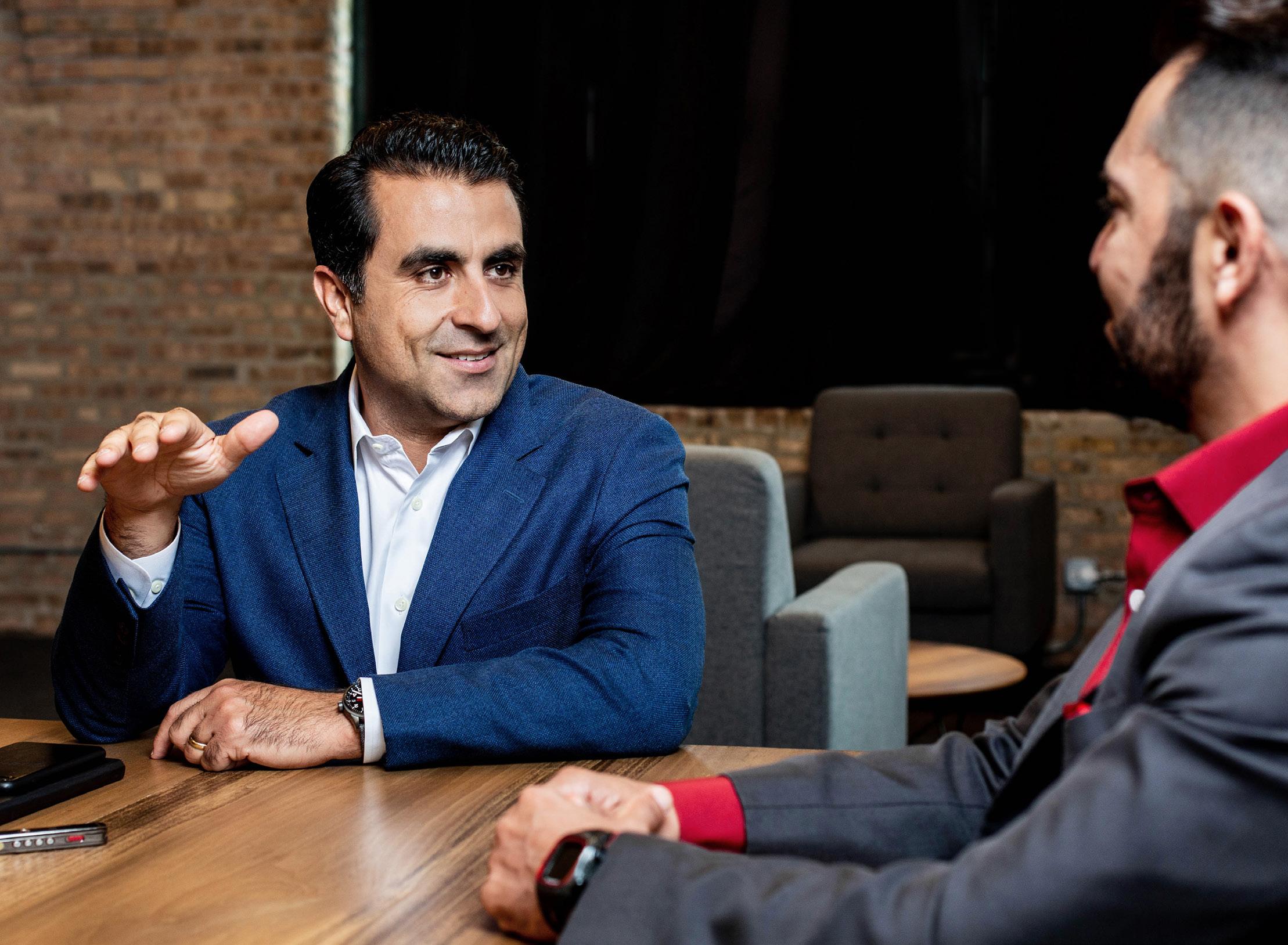
One of my closest friends in Chicago—who is a fellow entrepreneur— is at the helm of a company with a clip of growth that is so inspiring. We started in the same place, and for a variety of reasons his company has become a rocket ship, exponentially growing.
For me, having other business owners to connect with—friends who are entrepreneurs and incredibly successful—is directly impactful to my own company’s growth. It motivates me to see people around me succeed.
I think that’s what one of the interesting dynamics of what you’re doing at LBAN. You are including inspiration from each other into the dynamic that makes up the program, and, more importantly, it’s inspiration that is distinctly Latino.
And that’s a whole other dynamic that I think is incredibly important and one that you and I share: recognizing Latino business success.
MARK: Pedro, you hit the nail on the head. I just spent a weekend with Marnie Forestieri, a program graduate who has early-childhood
learning academies. She said, “When we were in the program, Mark, we had six of these academies. Now, we just struck a deal to open fifty over the next ten years.”
PEDRO: Incredible! That’s scaling!
MARK: That’s right. She had the right proposition. When people hear about this Latina in Orlando that’s disrupting access to education at the early-childhood level—not even the Einsteins of our country have been able to figure that out. It’s where you’re not worrying about socioeconomic status, or in which neighborhood you reside. She’s literally going to transform that whole thing, and it was a Latina who sat right there, with the fourth cohort of our program.
Multiply that story by the 432 program graduates. We’re really excited about how we’ve stuck to our core purpose, mission, and goal. Our goal is to double the number of $10 million, $100 million, and
$1 billion Latino/a-owned companies in the US by 2025. And we do this with the core purpose of strengthening the United States by improving the lives of Latinos.
We feel like scaling our businesses is so critical to a wealth-building proposition. These components contribute toward a better life, increased access and opportunity, and increased prosperity. Many of our businesses are struggling. As Latinos and Latinas, we all know about the family-owned business. Whether it’s our own business, or our tía ’s or tío ’s, or our cousin’s . . .
I’ll take it to a personal level. My parents were on the cotton fields as migrant farm workers in the sparse area of the southern plains, but then my dad said, “No, that’s not for me.” He was a very industrious fellow—started drawing blueprints, picked up welding, then became the go-to welder in the Texas Panhandle.
PEDRO: That’s fantastic.
MARK: But you know what? He’s almost eighty now, and I’ve realized that he didn’t know about becoming a certified minority-owned business, and he didn’t know about franchising and preserving-wealth strategies. I see him selling what he can to earn extra cash, and it breaks my heart.
Back to our purpose of improving the lives of Latinos through entrepreneurial education . . . if my father, even in the later stages, could’ve learned maybe about franchising, legal structures, preparing for the future . . . I just think about the “what if?” We are in for the long haul to create more prosperity for our Latino entrepreneurs.
And with greater prosperity comes greater access. It’s just the bottom line. You get into better schools. You get better education. You are introduced into more networks. It’s all connected, and we’ve drawn out this roadmap of prosperity. It’s very important to us. And it is an American economic imperative.
PEDRO: It very much is.
MARK: Because the better we do, the better this whole society and economy will be. Society needs to get it, that we’re the seventh-largest GDP in the world, that we’re dominating workforce development. Who will be filling the jobs of the future? We will! We’re dominating all spaces. Economic development, workforce development, education enrollment, not only pre-K through 12, but now in community colleges and universities. We feel this lane of entrepreneurship is going to help us shape a narrative of Latinos that is positive.
PEDRO: I love that story you just told, because it reminds me of some of the stories I have from my own upbringing. One thing I don’t think
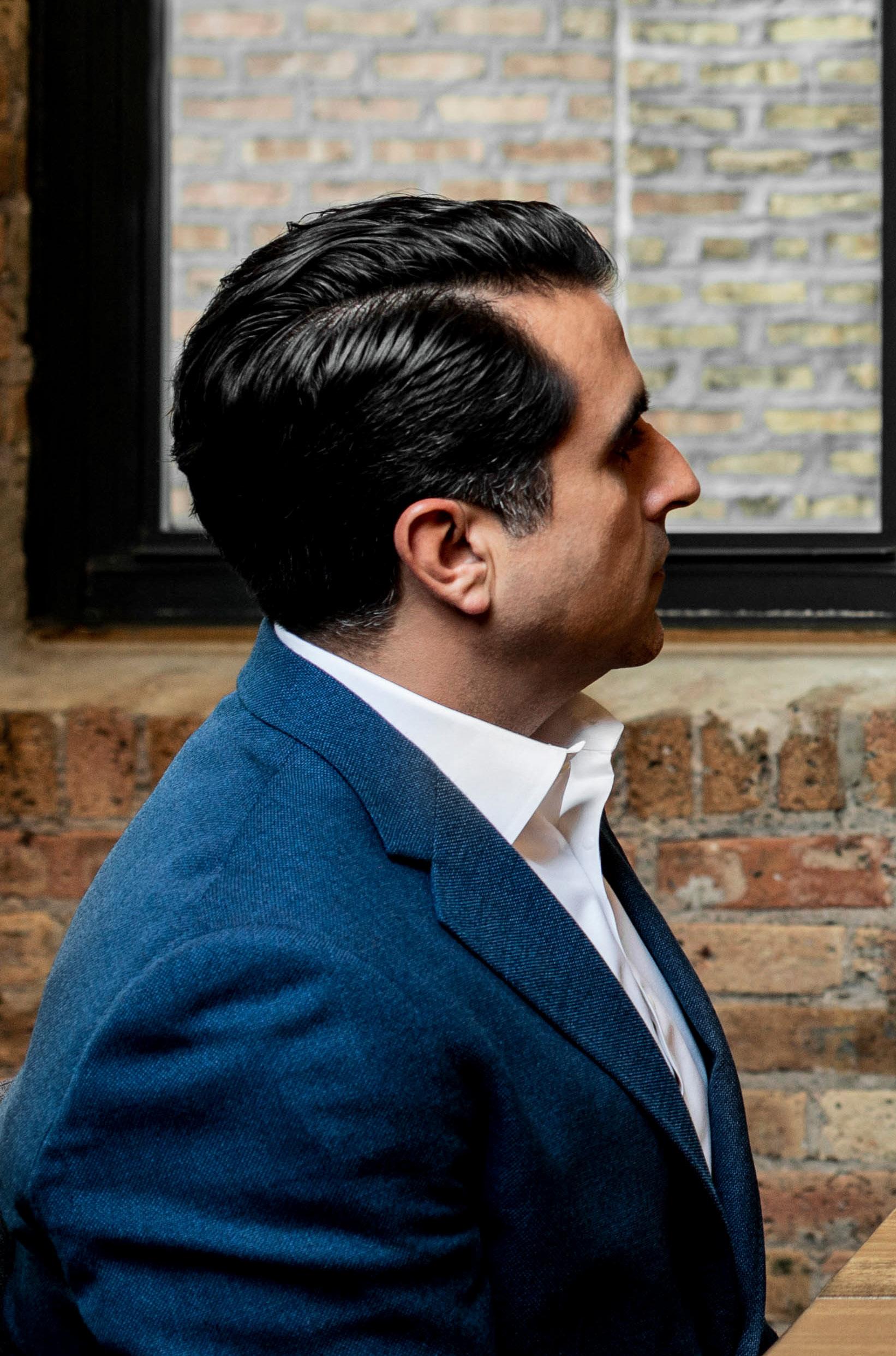
we talk about enough—or perhaps value enough as a society—is the immigrant experience. It’s aligned with entrepreneurship.
Being an entrepreneur is stepping into the unknown, because the future ahead isn’t guaranteed— you’ve got to make it happen. Think about the people that get up and leave Durango, or Chihuahua, or El Salvador to take their families away from their home, from the familiar, and step into the unknown.
There is no more of an entrepreneurial experience than the experience of the immigrant.
I have, in my family, two of those types of experiences, one where my grandfather came to the US first as a Brasero and then, once the program ended, as a factory worker at a cannery, in Hayward, Cali-

“My dad was a very industrious fellow ... [he] became the go-to welder in the Texas Panhandle. [Now,] I see him selling what he can to earn extra cash, and it breaks my heart.”
fornia. That’s where he set up shop, brought his family, and it’s where I was subsequently born. On my father’s side, my great-grandfather— my tata —was an entrepreneur, and he was self-taught, like a lot of entrepreneurs then and now.
MARK: Exactly!
PEDRO: He started to package and sell tamales, which then became the Rosarita Food Company. He eventually sold the company sometime in the 1970s. He was very industrious and self-taught, and he was able to scale up a food business and then sell it for, apparently, $4 million. He then took those earnings and distributed it amongst the ninety
or so people in the extended family. What could have happened if he had, for instance, figured out how to manage that capital so that it could last for generations? Would there have been a different type of family narrative?
That is, I think, one of the critical things that’s going to impact Latinos on the whole. That type of financial education. You have a trailblazer who is able to sell their company and then perhaps put in place known strategies to maintain that wealth and grow it. You now have a Latino family that has more access to personal family wealth using financial insight that has been more common, historically, among other demographic groups.
MARK: That’s right, that’s right. Generational wealth.
PEDRO: Generations. Regardless of what you may think of this economic concept, politically—at the end of the day, that is what has propelled certain communities over others. And what Latinos need to be doing in greater frequency than they have historically.
MARK: That’s right. I revere everything my father’s done. He’s one of the smartest people that I know, and he didn’t get past the eighth grade. I think if he would have had the resources and had access to some of these things that we are discussing, man, we would be set for generations!
It’s important for us to make sure that Latino businesses are in a position to succeed. With the advent of online retail and such—we’ve got to be ahead of that, as well. So, we want our Latino/a businesses to also produce more jobs. The way you do that is with capital.
We’ve relied traditionally on internal sources of funds— checking, savings, and friends and family. But we’ve got to build relationships with capital providers that are really going to help us close the opportunity gap that we have, which is $1.47 trillion. That’s the difference between what Latino-owned businesses earn and what non-Latino-owned businesses earn. In order to close that, we’ve got to get more capital in our Latino entrepreneurs’ hands.
That’s just education and preparation. That’s also, on the other side, asking our capital providers, “Have you shifted your dynamics when it comes to understanding this marketplace?” Not necessarily saying, “Are you going to disrupt all your underwriting criteria?” I have a fourteen-year banking career that started on Wall Street, so I know the pendulum of underwriting criteria—especially after the Great Recession of 2008—that swings from time to time. But it’s really understanding the needs of the clientele that’s rising at a higher tick than any other group in the country: Latino/a-owned businesses. Consider this: during the Great Recession just over a decade ago, business formation for non-Latino-owned businesses was
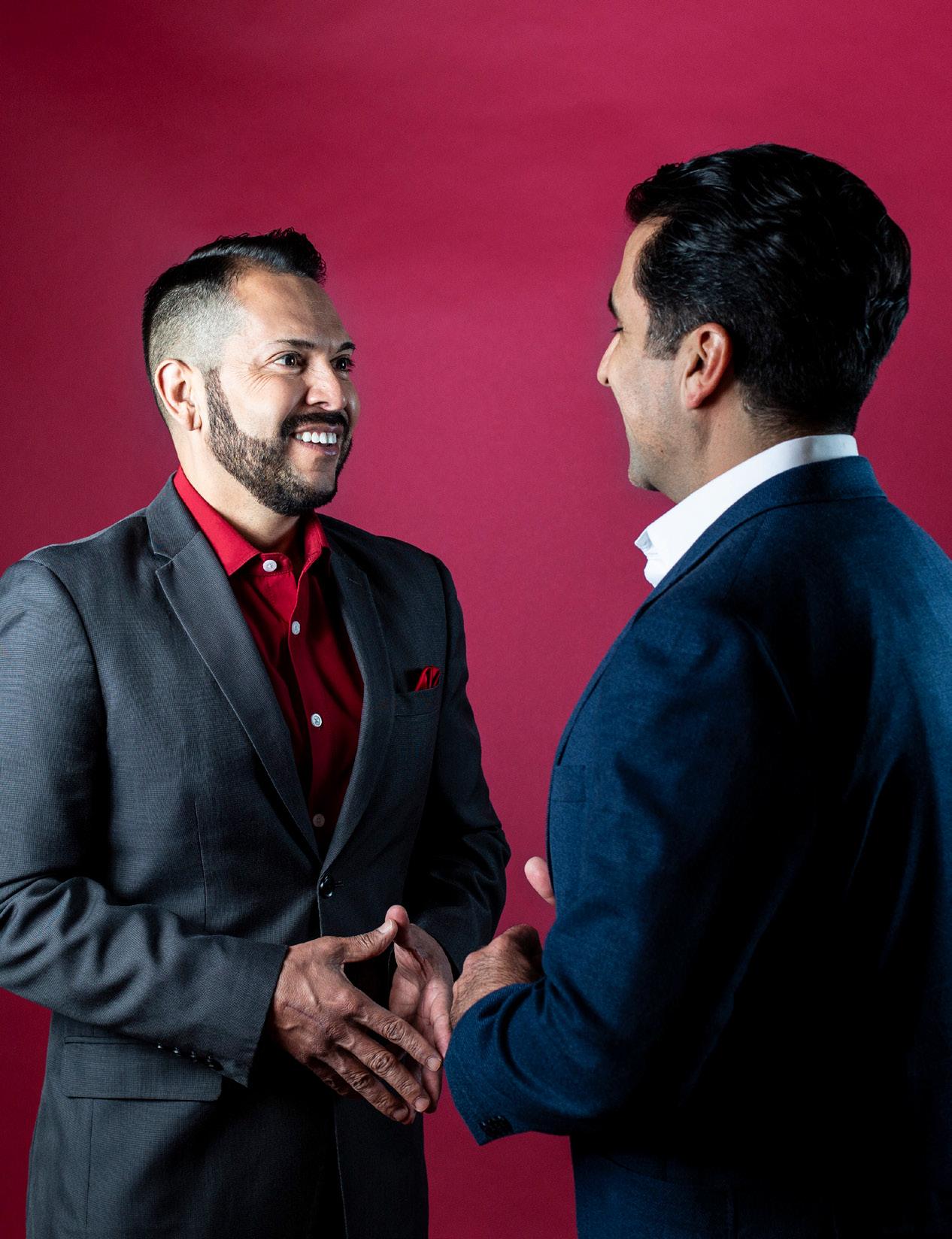
-2 percent, while Latino-owned was 47 percent. You can discern why appreciating and cultivating this Hispanic cohort is an American economic imperative.
I think LBAN—through the collaboration with Stanford GSB in championing SLEI—is definitely at the table with lending institutions when it comes to debt. I’m very excited about that.
Then there’s this world of VC and angel investing. It’s very sexy and appealing, right? But, there’s also a chasm—there’s a bridge that needs to be connected here. We need to make sure that our Latino/a entrepreneurs are VC-backable.
Here we go again, where LBAN’s literally at the epicenter, and we’re working on technology and other implementations of having a readiness tool for VC-backability. Anyhow, think about that—we’re going to take that stake in the ground with private equity and crowdsourcing and SBA lending. It’s a giant responsibility, but who else is doing this, at this degree of sophistication? We are!
PEDRO: You talked about preparation. I talked about inspiration. I think it really comes down to activation.
How do you activate your network in a way that’s going to lend itself to help advance your own personal strategy, your company strategy?
When it comes to raising capital, as an example, I’ve literally asked a friend who had experience raising capital: “How did you do it?”
I had met this one particular friend for coffee and he shared with me an idea: he wanted to build the largest sales consultancy company in the country, and he was looking to raise $40 million. I remember asking him, “How do you do that?” He said, “Just tell people. I just told them what I’m doing, and they’d tell other people. Eventually, that comes back to me.”
And so, he did just that; he raised $40 million and launched his sales consultancy, which became, within three years, a $100 million firm. Mind-blowing, right?
But, it’s just that simple. He’s just talking to people. He’s just letting them know what he’s doing. He had a deep network, but the tactic was that simple.
What’s interesting, and perhaps—at least from my experience— unknown is the question I hear often: “I have this network. Now, what do I do with it?” I think it comes down to talking to people, sharing the vision of your organization, the idea of where you’re headed, what’s unique about it, what’s interesting, what you’re looking for.
I recently met with a friend who leads an investment company— and is Latino, by the way. He said, “I meet with Latinos all the time. They want to meet with me. I sit down with them, and they don’t know what they’re asking for. I ask them, ‘What can I help you with?’ And they don’t know what they want.”
And I think that our Latino business community as a whole needs to practice asking for exactly what they want, and telling people what they need.
I think that it’s something that LBAN can help with, to share best practices and experiences with other owners that are trying to figure out the whole capital game.
MARK: True. That is so true. To activate networks is critical. I think there’s also a correlation to just marketing yourself appropriately. We now have our entrepreneurs submit a one-pager and a pitch deck. That, in and of itself, comes back to what you were saying: “What are you presenting? Who are you?”
PEDRO: Yes, “Who are you?”
MARK: And that exercise, as individuals, is difficult.
PEDRO: It’s very difficult!
“We need to pump our movement with velocity ... to mobilize better. We need to take the opportunities we’ve described in this conversation, and do it with vigor.”
MARK: Right? We have to do that on our own accord—how to distinguish yourself as an individual, how to create your elevator pitch, and all that. So to do it from a business perspective, it’s sometimes a challenging exercise for the entrepreneurs.
PEDRO: I would agree with that completely.
MARK: I would just say, we need to pump our movement with velocity. I love when Sol Trujillo talks about velocity. I’m like, “Amen, brother!” If we don’t have velocity in this whole movement, during this critical time . . . interpret that as you may, but we’ve got to step up and really show ourselves in the space that we have earned the hard way. To assume this position as Latinos, as the seventh-largest GDP in the world, that’s a big deal! That’s a BFD! It really is, and I’m so darn proud of it.
At the same time, we just need to mobilize better. We need to take those opportunities that we’ve described in this conversation, and we need to do it with vigor. I’m overwhelmingly energized and excited about our community, the future of this country.
PEDRO: I agree with that. Yes. Velocity. I love that. I think really leveraging these Latino networks, too. That’s something that I would like to see happen more often, whereby there’s just that extra connection that happens because you’re a part of LBAN.
MARK: That’s right. We have a mantra: “Do business with each other and get business for each other.”
PEDRO: You want velocity? That has to start happening more.
MARK: Indubitably!
“The data shows: Latinos aren’t only contributing to the economy because there are a lot of them, they’re contributing because they’re entrepreneurial and hard-working, making everyone richer as a result.”
BY
KATHY KANTORSKI
Jeffrey Eisenach isn’t just stating an opinion in the quote above; he has evidence to support it. The managing director at NERA Economic Consulting was retained by the Latino Donor Collaborative and Wells Fargo for a new study, the results of which were released this past spring, titled, The Latino Contribution to US Economic Dynamism In the report, Eisenach and coauthor Robert Kulick build on former research done by NERA and other sources.
Research tells us:
1. The Latino contribution to the economy is growing. The Latino labor force is expanding three times as fast as the rest of the population.
2. The Latino population is youthful. The median Latino is twenty-nine, compared with thirty-eight for the overall population.
3. Latinos are in the workforce and employed. Two-thirds of Latinos are in the workforce, and 63 percent are employed.
4. Latinos start new businesses. Latinos have the highest entrepreneurship rates of any US ethnic group.
Based on this knowledge, Eisenach and Kulick pose the question: Do these positive characteristics of Latinos have an effect on the overall US economy?
One term in particular is central to this question: business dynamism. “Business dynamism not only refers to new business formation, but also business destruction,” Eisenach says. “Every business that dies
is a business that couldn’t cut it in the marketplace, and the resources associated with that business, such as capital and labor, then go to another business. It’s important not only to be creating businesses, but also for this whole process of creative destruction to be working.”
In other words: Feed success, starve failure, on an economywide scale.
“What’s been shown is that business dynamism is ‘the secret in the sauce’ that leads to productivity growth—and, subsequently, economic growth,” Eisenach says. “Being able to tie that back to Latinos is very important in terms of the vibrancy of the US economy overall.”
One of the major points of emphasis in the report is the incremental impact on economic output of faster employment and population growth among US Hispanics versus employment and population growth among the rest of the population. Between now and 2025, this impact averages $701.4 billion per year. To put this into context, it is comparable to the projected impact of the Tax Cuts and Jobs Act of 2017, the most sweeping tax legislation since the Tax Reform Act of 1986, estimated to be $470–740 billion annually over the next decade.
In summary, Eisenach draws two key messages for senior executives from his research: “One: Are you thinking about the appropriate role for Latinos in your business, both on the customer side and as employees?” he asks.
“And two: We need to keep feeding this economic engine. The growth of the Latino workforce is important for the US economy, and all of us.”
16% US Hispanic population growth rate, since 2010 vs. AGE vs. 29
3%
US non-Hispanic population growth rate, since 2010
Between 2014 and 2016, Latino-owned firms grew more rapidly than firms overall across various metrics:
Between now and 2025, if Latino employment and population growth continue at its current trend above those for the rest of the US population, the growth will account for:
33,000 more new start-up businesses per year
$1,245 more annual output per employee
$701B
more in real GDP annually, comparable to the estimated effects of the 2017 Tax Cuts and Jobs Act (projected to increase the GDP by $470$740 billion per year over the next decade)
Growth rate of US Hispanic labor force <1%
Growth rate of US non-Hispanic labor force
Median age of US Hispanic population
44
Median age of US white non-Hispanic population
Source: “The Latino Contribution to US Economic Dynamism,” Latino Donor Collaborative
Vying for the highest executive position in the land, Castro sits down with Ruben Navarrette to discuss leadership, gravitas, and what it takes to campaign for the US presidency.
PORTRAITS BY CASS DAVIS

Memory transports me back to September of 2012. I am hovering over a salad bar in a hotel restaurant in Charlotte, North Carolina. Across from me, on the other side of the sliced bell pepper, is a friend of mine who is having a moment.
I tell my friend that one of his best attributes is that—unlike most politicians—he lacks swagger. I say to him that there are plenty of folks I’ve covered over the years who have done less but brag more.
He smiles and shrugs, explaining that a humble upbringing keeps him grounded. He was taught—by his mother and by circumstance—not to think less of himself but also not to think himself above anyone else.
Later that night, in an event that CNN has sent me to write about, the Mexican American political superstar who grew up on the hardscrabble west side of San Antonio and worked his tail off to one day breathe rarified air will walk into the Time Warner Cable Arena and deliver what his young daughter is calling “Daddy’s big speech.”
The speech is the keynote address at the 2012 Democratic Convention (which will, in a few days, nominate Barack Obama for another term as president). What makes it big is that the 2004 convention’s keynote speech, given by Obama when he was an Illinois state lawmaker running for the US Senate, was what put Obama on the map politically.
And “Daddy” is Julián Castro, who was at that point the mayor of San Antonio. Though there is a feeling among the family and friends who traveled from Texas that his career trajectory could change tonight.
It did. After being introduced by his twin brother, Joaquin, a US Representative from San Antonio, Castro took the podium. He crushed the speech. He was comfortable and fiery, self-deprecating and likable, humorous but sure of his convictions.
Over the next seven years, Castro’s résumé would grow to include a stint as secretary of Housing and Urban Development, a book deal to write a memoir, a string of speeches around the country, a teaching gig at the University of Texas at Austin—and, now, at forty-four years old (turning forty-five on September 16), a historic pursuit that also amounts to his toughest challenge.
Tough enough for people to ask: Does Castro really want to win this thing?
“This thing,” of course, being the Democratic nomination in the 2020 US presidential election.
And Castro being a serious, credible, and highly electable public official vying to be the first Mexican-American president in our nation’s history.
JULIÁN TALKS: HIS AMERICAN DREAM STORY
“My story is an immigrant American dream story. It’s the twenty-first century American dream story of a grandmother who came over from Mexico and sacrificed tremendously as a single parent for her daughter, my mother, who went further than she did and sacrificed as a single parent so that my brother and I could go further than my mom did.
And now, two generations later, one grandson of that Mexican immigrant is a US congressman and the other one is a candidate for president of the United States. That’s a beautiful American dream story for the twenty-first century. It didn’t come out of Ireland or Germany or Italy. It came out of Mexico. But it’s wholly American.”
Running for president isn’t a policy seminar or a spelling bee. It’s performance art. Voters buy their ticket, and they demand a show.
During a recent swing through California, I caught up with my friend and asked him: “What’s the Julián show?”
“There’s always a showmanship to politics,” he acknowledged. “I grew up watching Ronald Reagan, disagreeing completely with his politics but recognizing that he was a showman in his own right. And then Bill Clinton, Barack Obama, Donald Trump—all of them have, in their own way, been master performers. The question is not whether you have to perform in politics, it’s what kind of show do people want right now?”
“And? What kind of show is that?” I asked.
“This campaign is a counter to Trump’s show,” he said. “I’m convinced with this election people want the opposite of Donald Trump. That’s not to say they want somebody who’s completely dry and boring, but they want somebody who’s level-headed, who is inclusive, who is honest, who is focused on the future instead of the past and is trying to bring people together instead of tearing them apart. That’s the show that I’m going to give them.”
Another thing that voters want to see in a candidate is gravitas, the quality that reassures them that he or she is ready to lead the country on day one.
I asked Castro how candidates demonstrate gravitas.
“Different ways: command of the issues, the way they treat people, how they are on the campaign trail and [how they] answer questions,” he said. “And, of course, their experience also plays a big role in that. For me, I have plenty of experience at the local level and also at the federal level, I’ve shown a command of the issues ranging from domestic issues to foreign policy issues. So I believe that, when the debates start, people are going to be able to see me as a compelling candidate.”
Of course, voters also crave good leadership.
I asked Castro to name what he thought were the leadership qualities required to become president.


“
[US PRESIDENTS] HAVE TO BE CONFIDENT, EFFECTIVE EXECUTIVES WHO SET A STRONG, BOLD VISION, AND HOLD PEOPLE ACCOUNTABLE TO ACHIEVE THAT VISION. YOU HAVE TO REMEMBER THAT YOU ARE ONLY ONE OF THREE BRANCHES. THE BEST PRESIDENTS UNDERSTOOD THAT.
”
“First, the ability to move people, to inspire people to change goals, whether that was Franklin Roosevelt or Lyndon Johnson—or on the other side of the aisle, in his own way, Ronald Reagan,” he said. “Good leaders can inspire people. They lay out a vision that the majority of Americans can believe in.”
“Second, they’re confident,” he continued. “This an executive position. They have to be confident, effective executives who realize that their role is to set a strong, bold vision, to hold people working for you accountable to achieve that vision. You have to remember that you are only one of three branches. The best presidents understood that.”
And he saved the most important leadership trait for last.
“Then third, I would say that that good leaders are people who everyday Americans can relate to,” he said. “That’s how they’re successful in the first place. They can’t be too high-minded or out of touch.”
Then I asked Castro about his own leadership philosophy, which I presumed helped guide him while serving in the Cabinet.
He summarized it as: “Bold vision, strong team, and accountability on execution.”
Also, I wondered, how does he go about choosing his team?
“I look for people who treat other people with respect,” he said. “I look for an inclusive team because I appreciate diverse perspectives— people coming to issues and problem solving from different angles, so to speak. I look for people who work hard, who have a strong work ethic so that you don’t have to wonder whether they’re going to get the job done.”
And how has that strategy worked out in the past?
“I’ve been fortunate—both when I was mayor and when I was HUD secretary—that we had a lot people that were hardworking or respectful and brought fantastic ideas to share so that we could accomplish good things for the people that we served,” he said.
So back to the big question: does Castro really want to win this thing?
I wondered about that myself. And so I asked him point-blank.
“The results I’ve gotten in public service show that I want to do good for people,” Castro replied. “I wouldn’t put myself through this crazy process, in this day and age—wouldn’t run the gauntlet and put up with everything from a million different criticisms to Twitter trolls to outright lies about you as a person—unless I had a great passion for making a difference in this country.”
But, I pressed him, what about those who think he lacks the fire necessary to get elected?
JULIÁN TALKS: HIS CALM DEMEANOR
“People want sanity. They want an adult in the room again. They want somebody who’s going to be a president for all Americans, not just some Americans.
I’m bringing an energy and passion for serving all Americans that I have no doubt the American people are going to pick up on and respond to. And I’m not worried about any criticisms about not being the loudest person in the room. I readily admit that I’m not.”
JULIÁN TALKS:
LATINO ISSUES
(BEYOND IMMIGRATION)
“There’s no question that immigration is an important and pressing issue that we need to address better in this country. At the same time, the Latino community, like any other community, is affected by what happens with decisions about education, healthcare, infrastructure, jobs.
A good example of this is with the Affordable Care Act—there were four million Latinos that were able to get healthcare coverage. Today, the notion of Latino politics often gets conflated with border politics, or immigration politics. That’s an incorrect conflation. It’s immigration plus all of these other issues that we need to address.”
“I’m not the loudest candidate or the loudest personality,” he acknowledged. “But I’ve shown a fire consistently over the years to make a big difference for people. And I believe that’s what counts and that’s what’s going to get us through this campaign.”
In the end, most of the reporters who cover Castro in this campaign won’t understand him. And so they won’t understand how he can win—even by losing.
Look, I know he’d say that he is “in it to win it.”
For one thing, he has to say that. He needs to raise millions of dollars to simply remain competitive in an enormously crowded field of Democratic hopefuls—all of them itching for the chance to run against Trump in the general election. You can’t convince people to part with their money if they think you’re not 1,000 percent committed to winning the nomination.
Then again, maybe Castro actually means it. Maybe he is playing this game to win, and maybe he’s prepared to engage in the unpleasantries necessary to win—which include attacking fellow Democrats who will not hesitate to return the favor or perhaps attack first. After all, this is a guy who has spent his whole life, from high school to Stanford University to Harvard Law School, knowing the answers to the quiz. He doesn’t try for second place at anything he does.
Castro has skills. He has always been serious about creating for others the kinds of opportunities that he and his brother have enjoyed. He doesn’t strut or overpromise. He gets the job done.
Think about what the striver tells young people whenever he speaks at a college or university.
“I always tell them that the most important thing is to believe in yourself,” he said. “There are so many things in this world. It doesn’t matter who you are, you will encounter things that pull you down or try to pull you backward. And in order to succeed, you have to have a strong confidence and belief in yourself. Second, to surround yourself with people who believe in you. And third, to always reach for a little bit more than you think you can get.”
Confidence is fine. Reaching is good. But, in his current endeavor, Castro faces long odds. He got off to slow start, spending the early weeks of the campaign ignored by media and stuck at 1 percent in the polls.
Plus, running for president is always tough. The hours, the fundraising, the promises; it can be too much for many to handle. But running as a Mexican American in a country whose coloring book doesn’t extend beyond black and white—this goes beyond tough. It can be nearly impossible.
And then, in the case of the 2020 election, impossible got even more difficult when the Democratic Party drifted to the left on taxes, abortion, reparations, Medicare for all, immigration, and more.
Castro went with the flow and drifted with the party.
But here’s the problem: That’s not him. Just as importantly, that’s not where Mexican Americans are. Sure, we overwhelmingly register as Democrats. However, we’re a Catholic, center-right community which is more likely to, according to decades of surveys, call ourselves “conservative” than “liberal.” So you could say that the shepherd has strayed from his flock.
Still, I can see a path where he wins—even if he loses.
Here’s what I mean by that: He has already moved the football from where it was—from where Henry Cisneros, the other former San Antonio mayor who went on to become HUD secretary, left it. If Castro runs a strong, decent, and dignified campaign, and makes it past Super Tuesday—March 3, 2020, when more than ten states will hold primaries including vote-rich California and Texas—it’ll be a win.
Anything that happens after that is gravy. Maybe, as the field narrows, he’ll run out of money and have to drop out. And then maybe, having already been vetted, he’ll get tapped to be on the Democratic ticket alongside the nominee. Who knows?
Still, no matter how things go from here, no one will fault Castro for not being able to do the impossible. Rather, millions of Americans will credit him for climbing into the arena, putting up a good fight and—here’s where the “win” comes—making the road smoother for whomever comes next.
In my book—and, I would venture to say, in most books—that’s a win.
It’s also the makings of a great story. The first chapter was penned that night in Charlotte back in 2012. And the last? Well, that one has yet to be written. It could be the most exciting of them all.
—Ruben Navarrette is a syndicated columnist with The Washington Post Writers Group, author of A Darker Shade of Crimson: Odyssey of a Harvard Chicano, and host of the podcast Navarrette Nation

The wisdom of these ten exemplary leaders spans across functions, industries, even generations to inspire all who aspire to greatness.
As an aggregate, their experiences of recent transformation provide a modern playbook for success, but also a glimpse into the mind-set needed for business—and societal—growth.
P76
Guest Editor Guillermo “G” Diaz Jr. Cisco Systems
P80
Carolina de Onis
Teacher Retirement System of Texas
P84
Jairo Orea
Kimberly-Clark
P88
Enrique Conterno Eli Lilly and Company
P92
Sandra Campos
Diane von Furstenberg
P96
Talita Ramos Erickson Barilla
P102
Sean Jaquez
Sony Pictures Entertainment
P108
Julián Castro
US Presidential Candidate
P110
Joe Dominguez ComEd, an Exelon company
P114
Lisa Heritage McLin Rackspace
P120
Carlos Linares
Church and Dwight
a letter from the guest editor
Guillermo “G” Diaz Jr., SVP, Customer Transformation | Cisco Systems
Congratulations on this recognition by Hispanic Executive for your exemplary leadership. Having been in your shoes as a 2016 Top 10 Líder, I am very humbled to be among you—and yet I’m compelled to tell you that while this recognition is an honor, it is also a responsibility.
Your leadership inspires others beyond your team, beyond your company, and even beyond your industry. You all have amazing stories. Reading each one made me reflect on my own story and what I believe to be my purpose—helping to bring up the next generation. Now, together, we have to raise the bar even higher.
This prestigious recognition is one that I remember as a special moment in my life—so much, in fact, that the feature is displayed on my wall. It reminds me to continuously ask myself: Do I have the drive to wake up every day with that same level of passion, to move myself adelante? Am I inspiring others to want to find their purpose?
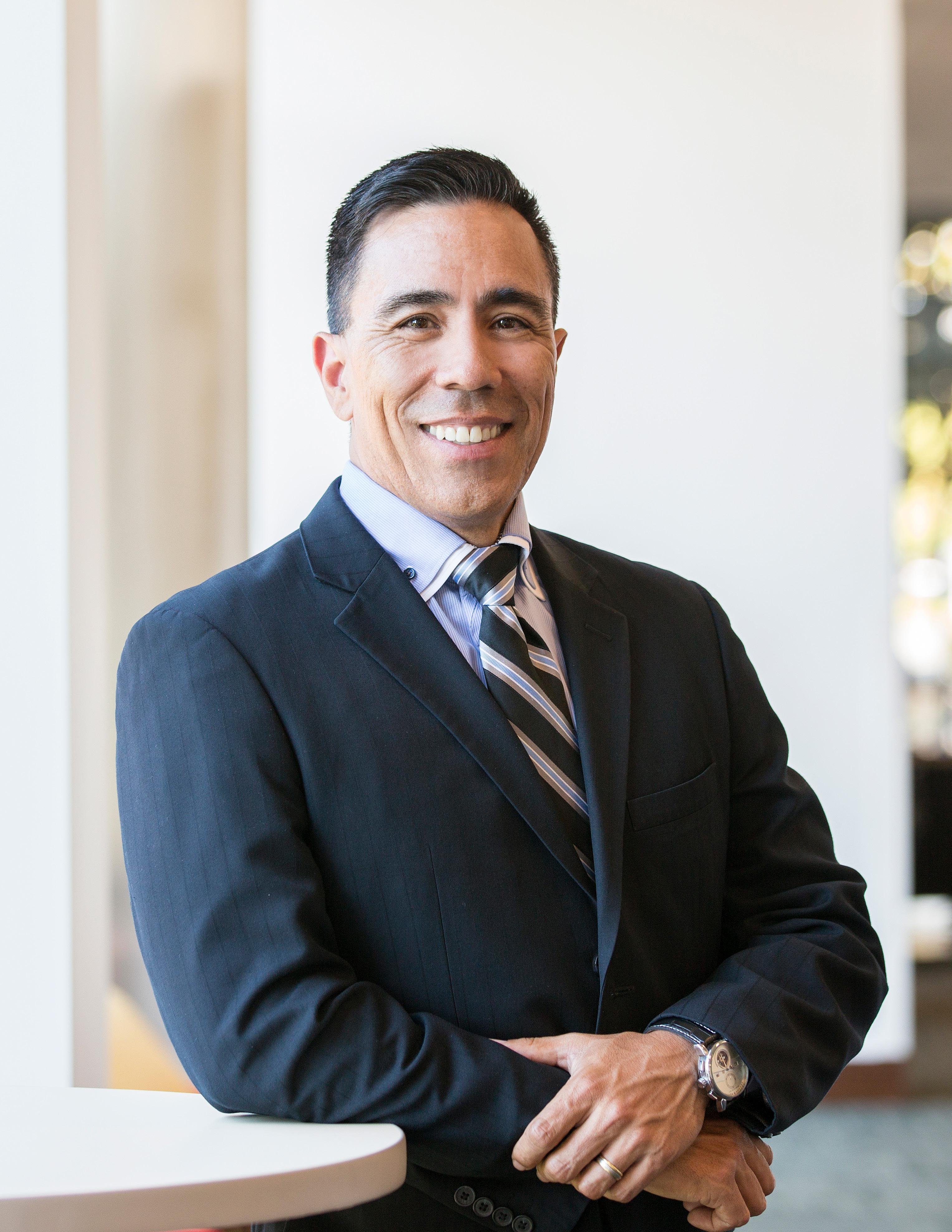
When I look back, the first glimpse of my platform was as a young Navy sailor. I had no concept of diversity because I grew up on the eastside of Pueblo, Colorado, which is a mostly Latino community. Looking back, I realize this made me a bit sheltered.
One day, in a Navy boot-camp inspection, the commander asked me to remove my cover (hat). He took a look at my hair, which was just growing back from “the shave,” and it was sort of slicked back. He said, “How did they let a cholo like you in my Navy?”
I did everything I could to not do something stupid, but in reality, that was a powerful moment for me. A moment when I told myself that I would never, ever let anyone tell me what I could or could not do. It created a fire, an inspiration, a determination to never allow myself to let color, race, gender, or whatever get in the way of moving myself and others forward. Adelante.
I didn’t realize it at the time, but the Navy helped lay the groundwork for my platform. A platform that bridges people and technology.
In addition to inspiring my drive to move forward, I credit the Navy for my introduction to technology. It’s where I learned about an exciting field called telecommunications and networks. The technology experience I gained allowed me to accelerate my career and would ultimately provide me the privilege of becoming an executive leader at one of the greatest technology companies in the world: Cisco.
In the early days of the Internet and communications, it became evident that this was a hot area, and it felt like I was in the right place at the right time. So a bit of
“A LITTLE BOY CRIED WHEN I GAVE HIM A BACKPACK. WHEN I ASKED WHY, HE REPLIED, ‘I’VE NEVER HAD A BACKPACK BEFORE.’ IT WAS THEN I REALIZED MY ROLE WASN’T JUST ABOUT WORK ANYMORE. I NOW HAD A CLEAR PURPOSE: TO HELP RAISE THE NEXT GENERATION OF LEADERS—OF HISPANIC TECHNOLOGY LEADERS.”
luck—and a lot of ganas and passion—helped me find my path.
Along the way, though I loved my job, I knew I had even more to offer. I asked myself, “Why am I here on this earth? Why did I end up here, where all this technology is taking off?” The answer came to me over time.
I leverage my platform (career) to inspire my purpose.
Years ago, when I took on the role of leading Cisco’s Hispanic organization, Conexión, someone said to me, “Hey, G, there is something motivating about you. You may not see it, but I see it, and you have to use that. You have a responsibility to inspire others as you progress in your career. And always remember where you came from to know where you are going.” This phrase really stuck with me, and now I share it with others. Our past makes us who we are and creates our foundation. That foundation can be used as a springboard to do new and exciting things that impact the world.
A short time later, I was at a community event for Cisco Conexión where we were giving out backpacks to students—an event I didn’t feel I had time for because I was too busy at work.
A little boy cried when I gave him a backpack. When I asked why, he replied, “I’ve never had a backpack before.”
I had to take a moment. I told myself, “You have to step up here, buddy.” It was then I realized that my role wasn’t just about work anymore; it was broader. I now had a clear purpose: to help raise the next generation of leaders—of Hispanic technology leaders.
In the technology industry, the bar seems to be set at 5 percent. If your company has
a Hispanic/Latinx demographic of 5 percent, then you’re doing pretty well. With Hispanic women the numbers dwindle even more. And that’s just not good enough. This is where I believe I can make an impact and I have fully embraced my purpose of raising the next generation of Hispanic technology leaders.
I’m very proud of the work being done by the Hispanic IT Executive Council (HITEC) Foundation, which focuses on students in technology. I served as the board chair of the foundation and have worked with incredible people who share my purpose. This year, I was blessed to become chairman of the broader HITEC organization, and we are laser focused on building executive leadership in technology and bridging to the pipeline provided by the HITEC Foundation.
We can also make a difference as leaders in our organizations.
I often have the opportunity to connect with peers and customers, and when I ask them about the biggest impediment to driving a transformation or change, the answer I used to expect was “technology.” I’m no longer surprised that the answer I actually get is “culture.”
Culture is propagated and inspired by the leader, and as leaders we have the opportunity to influence real change. Leaders have to believe in the vision they set with all their heart. (I wear my heart on my sleeve, so it’s easy to see if I do or don’t believe in something.)
More importantly, leaders have to believe in the power of relationships. I call my philosophy ROI, which stands for Relationships Over Issues—something I learned from a great mentor of mine. Every day we deal with
“MY HOPE IS THAT ALL OF YOU FEEL THE SAME RESPONSIBILITY TO RAISE THE NEXT GENERATION TO WALK IN YOUR SHOES SOMEDAY.”
issues. But just like financial ROI (return on investment), when you invest in relationships, the business and emotional returns from resolving issues can be exponential. So really, ROI equals ROI.
Every year, I set the tone for my teams with a word or phrase of the year. This year’s phrase is: “Inspire reinvention.” I ask myself every day, “Are you living up to that phrase?” I’ve driven reinvention in the past, but this year it has a more profound personal meaning. I’ve shifted my role at Cisco and my role in HITEC, so I’m changing my whole mindset. After having been in IT for decades, I’m taking the foundation I’ve built to reinvent myself—remembering where I came from to accelerate where I go next.
In changing my mind-set, I’ve noticed that it’s the little things that make a big difference. I’ve started to take a different route to work. I’ve changed my workout routine. I’ve even changed the sequence of how I get prepared for the day. All to adopt a new mind-set and inspire reinvention.
As a Top 10 Líder, I honor you: You are amazing and inspiring!
You have all worked very hard in your respective areas to get to where you are today—your platform. Everyone has a story, and as you think back to yours, you’ll see that you haven’t gotten here alone. None of us have. We have built relationships along the way, and the people who have helped us get here should be remembered.
Just as I feel very strongly about leveraging my platform to fulfill my purpose, my hope is that all of you feel the same responsibility to raise the next generation to walk in your shoes someday.
Felicidades!
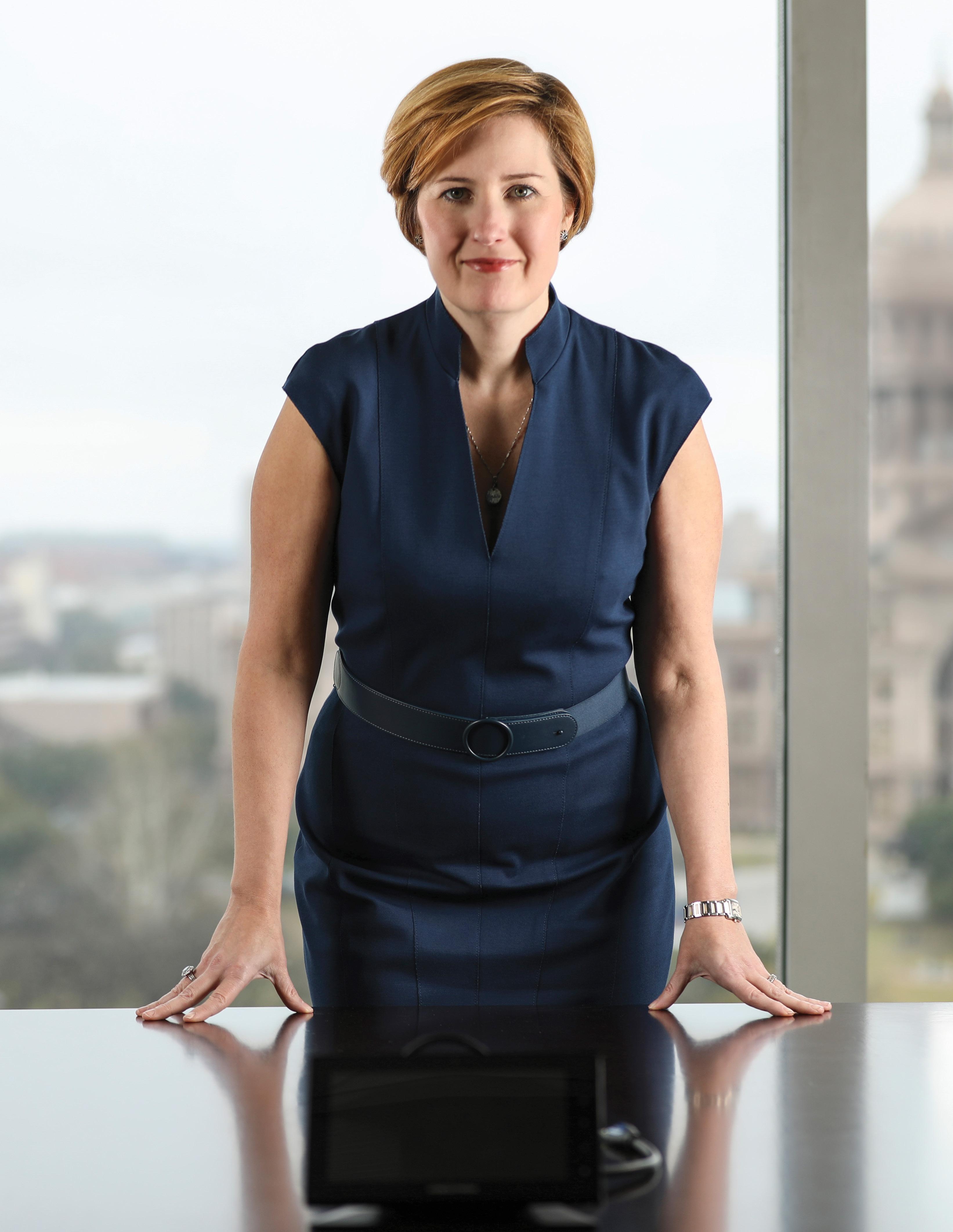
Wall Street lawyer–turned–general counsel of a public pension plan, de Onis unites the brainpower behind the Teacher Retirement System of Texas to achieve the greatest level of customer support
“When you’re young, you think being a leader means telling people what to do. Absolutely not. Being a leader means inspiring people to do the best job they can and making sure that they’re empowered to do it.”
In one paragraph, this is Carolina de Onis. Throughout her career, she has been a catalyst for change, a sponge for diverse perspectives, and an advocate for humanity. As the daughter of a Mexican American mother and a Spanish father, de Onis was born with an appetence to serve the people who comprise the melting pot of America. To satisfy this yearning, she turned to law.
From the start of her career at Davis Polk & Wardwell, LLP in New York City, she
BY KC ESPER
realized that law involved so much more than an analytical brain and a knack for problem solving. It was about developing trust among her clients and figuring out how to help in creative, customizable ways. To de Onis, this personalization is the key difference between thinking like a lawyer and acting like one.
“To practice law, you need to actually do it,” she says. “Coming out of law school, no one is really prepared to be a lawyer. The biggest lesson I learned was that relationships are just as important—or maybe even more important—than what you know. What we have is our integrity and the trust of our clients, and if you don’t have that, you won’t be effective. You have to put time into getting to know the people you’re working for, building those relationships, and making sure that they like working with you and want to work with you again.”
De Onis recognizes her time in New York City—first at Davis Polk and later at Barclays—as her most important form of education. Her early career took her to different Latin American countries, where she represented American companies in litigation cases. It taught her how to meet and execute a “high level of professionalism,” as she puts it, in all aspects of her practice. It placed her in the middle of the financial crisis of 2008 and allowed her to witness and learn from the hardships faced by thousands of Americans. Ultimately, it taught her how to work with people, and how to take their hardships into her own hands to ease their burden. But, equipped with these lessons, de Onis realized that while she was in charge of solving everyone else’s obstacles, she had to acknowledge her own, too.
After fifteen years on Wall Street—and now with two children to consider—de Onis decided to reevaluate her trajectory and move back to her hometown: Austin, Texas. With a chance to start over, de Onis wanted to take time deciding the new angle of her career. She wanted to transfer everything she learned in her fruitful years in New York into a career that strove to serve others in the same capacity she possessed. After taking a year off to reground herself in her career and personal life, she discovered that the Teacher Retirement System of Texas (TRS) needed a general counsel. Finally, this was the position she had been waiting for.
“I wanted to be able to use my experience on Wall Street somehow, but I also wanted to make an impact, create a legacy, give back to my community,” she says. “The teachers of Texas are such a deserving population. The opportunity to work on behalf of a group of people who give so much to our community is extremely fulfilling. And as a daughter of two teachers, it is particularly gratifying.”
De Onis remembers when her parents “relied on pensions just to live.” Her closeknit relationship with them allows her to empathize with TRS’s goal to counsel teachers on their retirement and invest in the future of its members by paying out annuity checks. In other words, equipping teachers with the resources needed to retire comfortably.
Since starting at TRS six years ago, de Onis has stitched her philosophy of fostering what she calls a “servant’s heart” deep into the organization’s fabric. She has reorganized the company’s mentality to prioritize its clients,
“WHEN YOU’RE YOUNG, YOU THINK BEING A LEADER MEANS TELLING PEOPLE WHAT TO DO. ABSOLUTELY NOT. BEING A LEADER MEANS INSPIRING PEOPLE TO DO THE BEST JOB THEY CAN AND MAKING SURE THAT THEY’RE EMPOWERED TO DO IT.”
promote diversity, and develop creative solutions to problems rather than saying “no.”
This reorganization required a threepart process. First, “re-orienting the department around excellent expertise,” de Onis explains—which meant “putting the right people in the right job, who know their area very well and can be counted on to provide excellent, consistent, and practical legal advice to their clients.”
Secondly, maintaining “relentless focus on the client,” she says. This entails aligning the legal agenda with the client’s agenda and working to fulfill the missions of both businesses. Lastly, becoming the client’s partner. To de Onis, this means lawyers provide consistently excellent and responsive legal advice and embrace the role of a lawyer not just as a person from whom clients seek legal advice, but as a counselor who helps clients achieve their goals.
Instilling these techniques in her team has bolstered the success of TRS’s infrastructure. Now, internal investment-management committees have involved de Onis to bring new legal and compliance perspectives to their day-to-day business. These committee meetings give the legal team a seat at the table to ensure that the company is taking all angles into consideration as it moves forward with its work. To de Onis, law contains “many shades of gray,” implying that the field embodies a spectrum of approaches to problem solving, all of which deserve to be evaluated. Thus, uniting all departments of TRS only broadens this spectrum, introducing alternative perspectives that work to solve problems holistically.
In addition to cross-departmental involvement, de Onis realizes that these perspectives cannot just stem from one brain. Her team-building strategy centers on celebrating diversity and inclusion, which is not “the sort of thing to happen by accident.” Introducing myriad viewpoints, experiences, and skill sets into her work has instilled a more progressive environment for TRS as a whole—and de Onis does not go a day without expressing her gratitude and appreciation for her team.
“Ultimately, it’s about respect,” she says. “It’s respecting people’s differences, respecting people’s identities. It’s about listening, it’s about compassion and empathy, and having a workplace where differences are celebrated, not just tolerated, and where different points of view are listened to and people feel heard.”
De Onis’s emphasis on helping others through her work starts with her team and transfers to her clients. Her instinct to guide people through their trials has granted TRS an improved culture centering on innovation, recognition, and empowerment. Her success is not measured by title or grandeur, but rather by her clients’ eagerness to seek her advice. Achieving this level of trust requires the determination to do so—and, as she puts it, “a culture of ethical behavior” to support it.
As a driver for continuous change within her work, de Onis describes practicing law as a never-ending process: “You’re either all in or all out.” Undoubtedly, she has moved through her practice with a Velcro mind, affixing to it the greatest lessons learned during her upbringing, studies, tenure, and motherhood, and using them to move through her current world to grant teachers—the people who started her entire journey—the future they deserve.

Norton Rose Fulbright proudly supports Teacher Retirement System of Texas and honors Carolina de Onís for her many years of service.
CISO | Kimberly-Clark
Jairo Orea heads Kimberly-Clark’s informational systems to stay a leg ahead of the race in becoming a digitalized world
“Think about how many devices you have in your home,” Jairo Orea challenges. At first, this assignment doesn’t seem too difficult. Yet in adding up all of the cell phones, televisions, computers, tablets, automations, etc., one realizes just what kind of an impact technology has on everyday life. Taking this realization one step further, it also becomes clear that we trust our devices and have instilled an infinite amount of value in them.
As the chief information security officer for Fortune 500–ranked personal-care product manufacturer Kimberly-Clark, Orea knows how much technology flexes with our changing
BY KC ESPER
world. To him, the only thing more ever changing than technology is the consumer.
While manufacturers may constantly be on the hunt for the next best creation, Orea stresses that these inventions are nothing without applied value—in other words, the extent to which new forms of technology become essential assets in our lives. It is the applied value of a creation that validates its worth, and Orea says that understanding this concept is the biggest challenge IT professionals—and, therefore, the companies for which they work—will face when adapting to technology’s rapid pace of change.
“Organizations that want to be closer to the consumer will need to understand how they want to use data and how they perceive value with regard to data,” he discusses. “I find that, like many organizations, Kimberly-Clark is in the process of reinventing how we work with customers and turning data into both information and value.”
As millennials take over the bulk of the consumer market, Orea notes that there has been a pull away from brand loyalty. He says consumers find satisfaction more in the agility of a service rather than who is providing it. In order to keep up with this demand, he suggests that companies adopt a customization approach: adapting their technology to fit the needs of the consumers, thereby offering consumers an experience of ease and instant gratification through their devices. Advancements in artificial intelligence, machine learning, and automation have enhanced the experience as well. The key lies in the company’s ability to make its data and services accessible in real time while constantly questioning how their services will be valued in the eye of a consumer.
“For instance, when my wife makes a shopping list, she just tells [Amazon’s] Alexa what she needs to add to the list, and Alexa does it for her,” Orea demonstrates. “Before, we used to have to physically go to the store to pick out everything we wanted. Now, we just choose a few things on an app and it’s ready for us to pick up at the store at our convenience. We are changing to learn the lingo of technology, but in a way that is completely accessible.”
Over the course of Orea’s career in technology, he has become a master at speaking the language of logic. Despite the complexity involved with invisible, data-driven concepts, Orea has refined his ability to deliver tangible ideas to his team and his community, boiling abstractions down to their frameworks and presenting them as such.
At Kimberly-Clark, Orea uses his communication abilities to ensure his team’s mind-set fosters a culture of constant improvement, the company’s informational assets are safe, and every technological system aligns with the company’s mission to generate products that consumers find essential.
“I don’t see myself at the top. I am the one at the bottom, carrying the team, enabling them to do better,” he says. His leadership style relies on setting a standard for ideal behavior, then giving his team space to grow from that foundation.
Since joining the company in January 2018, Orea has created an environment that focuses on communication, decision making, and teamwork—while emphasizing the need for his team members to have fun within their profession. Together, these facets work

together to accomplish company-specific goals and constantly meet the needs of the fluctuating consumer market.
Orea’s avant-garde thoughts about technology have landed him at the forefront of the Trusted Cloud Initiative, a role as director of the ISSACT Chapter, and a contribution published in the most recent version of Borderless Behavior Analytics—a book that explores information security in our technological future. Through these engagements, Orea has taught industry leaders, along with fellow associates, about the dynamic outlook of technology as a whole, starting with his methods for change inside the digitalized world.
His foremost method begins with the aforementioned centralization around consumer value. With the universal accessibility to data that consumers demand comes an increased need for security. Massive amounts of information saturate the always-looming “cloud,” and companies are now finding that the ability to control access to their data is more imperative than ever.
“There is a move away from just protecting assets,” he says. “Persistent controls will allow us to use the organization’s data from any device, anywhere, at any time. So it’s more about making sure the right people have access to the right information.” Orea believes this level of cybersecurity should become integrated into the daily routine and is aligning his team’s efforts to drive this change forward.
“Security is at the forefront of every technology leader’s mind today. It’s been a privilege to work with Jairo and the team
“WE WORK LIKE A FAMILY FOR YOUR FAMILY. THE CARING ASPECT OF KIMBERLYCLARK INSPIRES ME TO TAKE OWNERSHIP OF MY WORK TO MAKE A DIFFERENCE IN THE COMMUNITY EVERY DAY.”
at Kimberly Clark as they move their digital initiatives forward,” says Paul Calatayud, Americas chief security officer for Palo Alto Networks.
Zooming out, the mission of Kimberly-Clark (to generate essential products) resonates deeply with Orea’s life and work. With a family of his own, he is constantly reminded of the company’s impact in creating sustainable, everyday goods for all stages of life—from diapers to paper towels to hygiene products and more. And the company’s consumer value focus perfectly aligns with Orea’s methods for technological innovation.
Though he only joined the company last year, working for Kimberly-Clark has provided Orea with a heightened sense of community. “We try to give back to the community as much as possible to prove that we work like a family for your family,” he says. “The caring aspect of Kimberly-Clark inspires me to take ownership of my work to make a difference in the community every day.”

























































































































































































































































BY KC ESPER
For millions of Americans, Type 1 diabetes is a lifelong struggle, requiring adjustments in diet, schedule, and, of course, budget. People with Type 1 diabetes cannot avoid the necessity of regular insulin intake, and the price of insulin has skyrocketed since it was introduced to the market in 1921. They constantly have to navigate prices at the counter, sometimes prioritizing their budgets over their health. Researchers have been racing to develop solutions. Importantly, innovation has been thriving at Eli Lilly and Company since even before the creation of insulin.
As the company advances into its modern status as a global pioneer of medicine, it has spearheaded efforts to accelerate the progress of treatment methods for diabetes. In fact, the diabetes division of Lilly is its largest sector, continually striving to follow founder Eli Lilly’s advice: “Take what you find here and make it better and better.”
As Lilly pushes to outdo its own innovation, leaders like Enrique Conterno perpetuate inventiveness through the encouragement of taking risks, with the inspiration and aim of profoundly improving customer’s lives.
For more than twenty-five years, Conterno has worked to advance Lilly’s successes in many parts of the business, including diabetes, neuroscience, and healthcare professional markets. As the revered, tenured president of the diabetes sector, Conterno oversees the creation and integration of cutting-edge medications, organizations, and solutions. He has witnessed the rise of diabetes in the US, the increased need for insulin, and the struggle of patients to acquire it.
While several programs were put in place to ameliorate the arduous routine adopted by so many Americans, he recognized that his team would have to think outside the box to circumvent high-deductible insurance plans interfering with their new solutions.
“We saw that people were paying too much out of pocket for insulin,” he says. In 2018, the company launched the Lilly Diabetes Solutions Center, staffed with healthcare professionals who help people navigate the system to find more affordable treatment options. Lilly also has established patient assistance programs that allow people to receive insulin for free if they meet certain requirements.
“While these programs were helping people, we realized that, despite our best efforts, there were still too many people paying too much for insulin,” Conterno
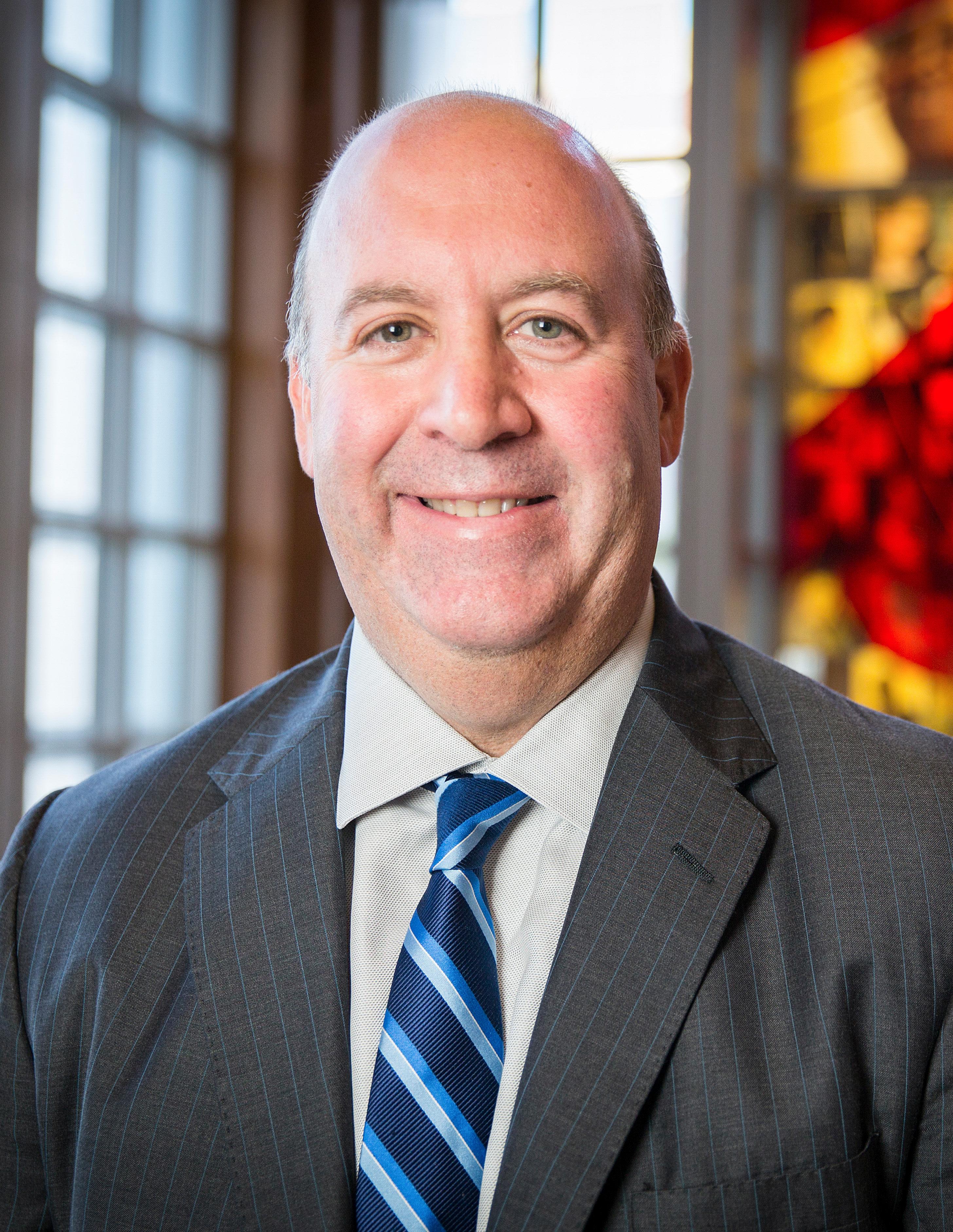
explains. “We decided it was important to think of a solution that works better for more people. So we created an authorized, generic version of our insulin product, but with a 50 percent reduced price.”
In spring 2019, Lilly released an authorized generic insulin brand at half the price of its popular insulin injection, Humalog. By introducing this option, Conterno’s team has enhanced quality of life through accessibility and affordability. Now, Americans spend less time worrying about paying for insulin and more time adapting to a healthier lifestyle.
Lilly’s efforts are not limited to diabetes research, however. The company is making strides in advancing studies of areas like oncology, immunology, and chronic pain. As the scientists of Lilly work to deliver solutions to these adverse conditions, Conterno contests that every project centers on the goal of making life easier for their patients.
“We’re living to make a meaningful contribution,” Conterno expresses. “Lilly’s scientists are true experts that can work cross-functionally, whether they’re in medical, clinical development, formulation development, regulatory marketing, or even manufacturing. We’ve established a team that is working on an intuitive plan to ensure that we can deliver the most value to our customers and ultimately graduate to the higher purpose of improving the lives of patients.”
In the realm of diabetes research, in addition to lowering the price of insulin, Lilly has expanded its treatment portfolio with a wide range of medicines that meet the personalized needs of any customer. Now, people with diabetes have the option to use oral medicines and
“UNDERSTANDING WHO YOU ARE AND LEVERAGING WHO YOU ARE CREATES A MUCH MORE AUTHENTIC LEADER. IT’S A NATURAL RIGHT TO FEEL GROUNDED IN OURSELVES. TO ACHIEVE THAT UNDERSTANDING MAKES US MORE EFFECTIVE AS LEADERS.”
noninsulin injectables that cover all categories of diabetes and match specific preferences.
To Conterno, Lilly’s ability to positively impact a wide scope of people fuels his passion for the industry.
“Every life is a story,” Conterno says. “It is incredible to see the impact that we have in people’s lives and rewarding to hear each story about family members living better, or a child going to camp because of our help. These accounts are why we are so committed to our purpose.”
As leaders of discovery, Lilly’s researchers have learned how to embrace the process, treating failure as an opportunity to learn rather than a setback—a lesson that Conterno has adopted throughout his entire career. In discouraging times, he thinks of one of his role models, José Hernández, the Hispanic astronaut who was turned down eleven times before he was accepted into NASA’s space program.
“Each time he was turned down, he would try again, wondering what he could do better or what they were looking for,” Conterno says. “Over time, he started to distinguish himself, treating the rejections as new opportunities to reapply each year. We tend to underestimate the value of grit and resiliency in pursuing our goals and aspirations, but that is how we achieve critical outcomes.”
Applied to his own position, Conterno realizes that every time an experiment or project fails, it is just another chance to try a new approach. He commends people like Hernández for having the resilience to overcome defeat and sees his own tenacity in his position.


At a networking event in Chicago, Conterno offered the following words of wisdom to fellow Latino business leaders: “Go with your gut, but stay highly analytical. Be confident in who you are. Reward success. Continue to learn.”
Over the years, he has learned to transform his weaknesses in a way that accentuates his strengths—viewing his risk-taking as opportunistic rather than precarious, for example. In fact, learning his value and how it fits within the greater picture has been one of his greatest life lessons.
“Understanding who you are and leveraging who you are creates a much more authentic leader,” he says. “It’s a natural right to feel grounded in ourselves. To achieve that understanding makes us much more effective as leaders.”
When Conterno first started at Lilly, he remembers being one of the few Latino members in the company. His thick accent and fearlessness when it came to taking chances made him feel a need to conform to stay on the same level with his fellow leaders. Eventually, he realized that he brought a unique perspective to the company’s table. He brought versatility and confidence to his work, making him a valuable resource.
Soon, he was able to transform his mind-set to realize that he has the courage and willingness to propel the successes of the company no matter what it takes. Now, Conterno extends this confidence in nonconformity to his team, building the company’s mentality that uniting through difference is the best way to succeed.
“We must have the right mind-set to envision what we can achieve together,” he says. “I have the privilege of working with people who discover and develop medicines to improve the lives of countless patients, which lies at the center of our purpose. We look at any situation with integrity and honesty while remaining grounded in the realities of our customers. That is how we maintain our momentum.”

BY KC ESPER
“My oldest daughter amazes me,” Sandra Ca mpos begins. “From a very early age, she embraced being Latina. She wanted to go to Mexico City to learn about our indigenous ancestry and who her family was in Mexico. She even helped found a diversity leadership organization at her school and participated in numerous marches in support of the DREAM Act.”
“I couldn’t help but think how different her youth was compared to mine,” Campos continues. “While she was encouraged to embrace her background, I grew up trying to hide mine. She’s such a powerful leader, and she’s going to change the world because of it.”
“She opened my eyes to see how you can activate others’ lives by being proud of who you are, instead of shying away from it. Now I have the opportunity to empower the Latinx community I come from. Hard work has helped me get to where I am. My own experience is a testament to the fact that regardless of education, race, or location, you can make things happen and you can be successful.”
Growing up in Texas as a first-generation Mexican American, Campos felt like
she had to navigate her adolescence in a way that understated her Latinx heritage. She had to overcome unforgiving stereotypes during every stage of her life. In childhood, she felt a need to eliminate her native language because people would gawk at her parents when they would speak Spanish in public. In young adulthood, she didn’t want to be associated with Latinos, as she saw firsthand the racial bias that Latinos experienced in her west Texas college town. In the early stages of her career, she encountered a different stereotype, and found herself abandoning her Texas accent in order to prove herself worthy of moving up the corporate ladder as a strong, educated woman whose accent didn’t define her intelligence.
Campos moved to New York City to pursue a career in fashion when she was fresh out of college. She focused on building her career, starting her family, and rising to her potential as a fashion executive.
Her parents had instilled in her the importance of education, and because of them, she became a lifelong learner. Through the years, she used this drive to take on new positions in companies across the city until she had worked in almost every area of the fashion industry—she could wear the many hats necessary to make a brand flourish.
In 2018, after more than twenty years of devoting her hard work to brands, Campos became the CEO of Diane von Furstenberg (DVF).
Around the same time she became CEO of DVF, Campos’s oldest daughter, Grace, moved away to college with an aspiration to study immigration reform. After watching Grace grow up in a way that embraced and accentuated her Latina heritage, Campos realized it was time to welcome her own background—and her role at DVF was the perfect opportunity to do just that.
“Diane [von Furstenberg] has shown women everywhere that we cannot give gender the power to place limits on our potential. I hope to continue her vision so that women can have equal opportunities regardless of age, race, religion, or gender,” she says.
At DVF, products are made to take the complexity out of fashion and give women their freedom to focus on every other pursuit they encounter, all while feeling confi-
“WE HAVE BUILT A GLOBAL PLATFORM AND HAVE A RESPONSIBILITY TO REMIND WOMEN THAT FEAR IS NOT AN OPTION AND THAT THE TWENTY-FIRST CENTURY IS THE CENTURY WHERE WOMEN WILL MAKE THE DIFFERENCE.”
dent and empowered. When Diane first started her fashion line, she pioneered the concept of the wrap dress, a one-piece, easyon garment that changed the way women thought about dressing. With this piece as an inspiration, the company has since built a brand that empowers the feminine in every feminist and provides best friends in a woman’s closet.
“We have built a global platform and have a responsibility to remind women that fear is not an option and that the twenty-first century is the century where women will make the difference,” Campos says.
While DVF’s mission never changed, its business strategy did. Over the past few months, the company has undergone adjustments in its distribution methods, moving away from a wholesale business model. Campos had the opportunity to be instrumental in determining the structure of this new method in ways that allow it to become more consumer centric.
This change has also provided a chance for Campos to build a team that brings new experiences and opinions to DVF’s table while mirroring New York City’s vibrant populace. She used this opportunity to fill her team with diverse ages, ethnicities, skill sets, and more to ensure that the creators of DVF are as unique as the people they serve.
“There’s a lot of change that happens in fashion,” she illustrates. “I brought unique people from different retailers and industries into our team so we can create new dust in our existing system. We want our team to put their own talents and ideas into their
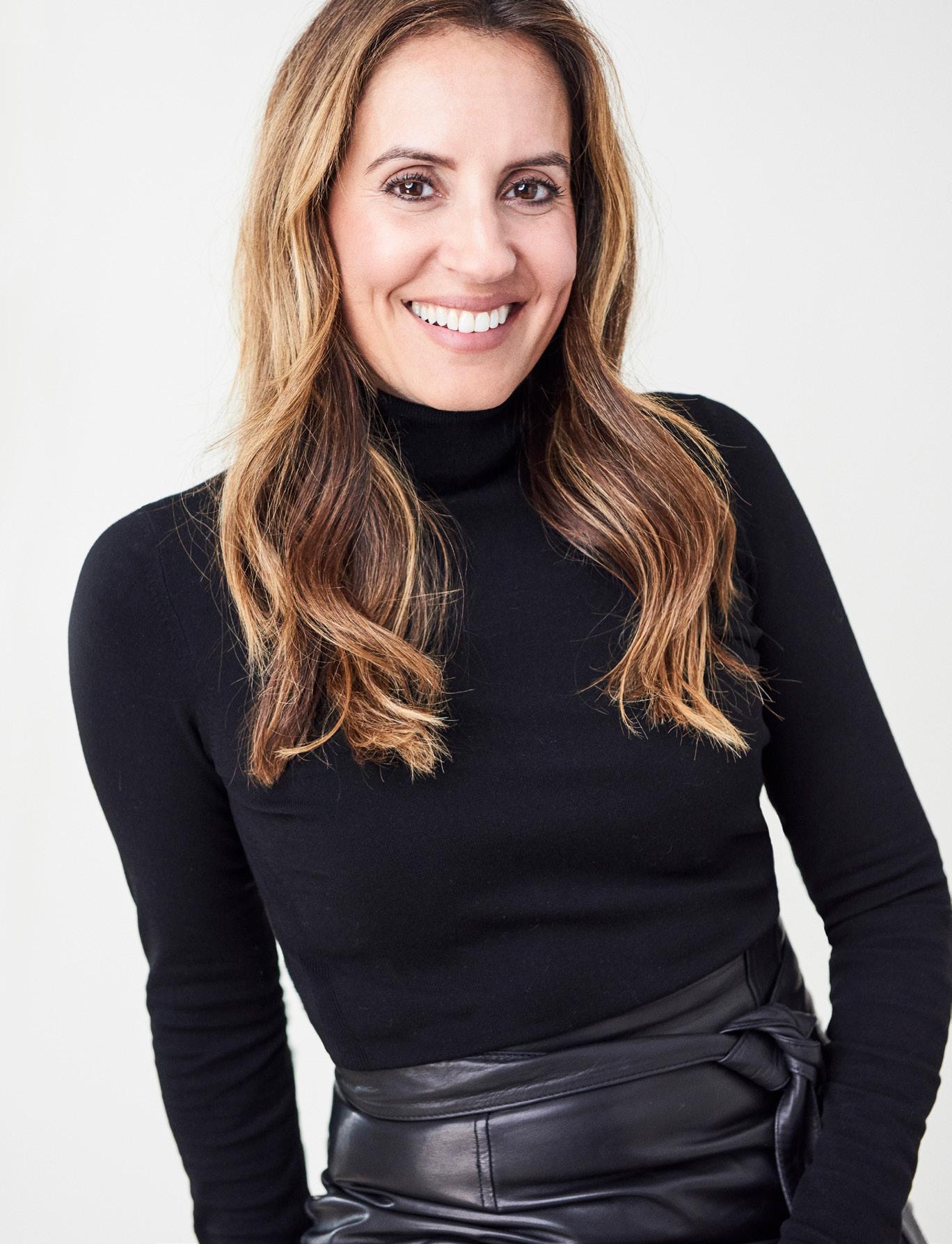
work so they don’t feel stifled. Then we can be strong and agile together rather than strictly corporate.”
As DVF paves a road of female and cultural empowerment through its platform, it has also made strides to bring together a society of diverse women to further cultivate this mentality. Through emails, newsletters, and social media campaigns, DVF shares stories of people who have manifested and lived a courageous life. Outside of digital platforms, the company also organizes female-focused networking events, where it hosts panel discussions that open cross-disciplinary dialogues for women to tell stories about how they made a difference in the world. Campos says, “The goal is to build a community where people feel safe and heard, so they can leave feeling confident and inspired.”
For Campos, using her children and Diane as models of empowerment has instilled in her a new confidence in activating other Latinx members of DVF’s community. Now, not only does she own her incredible determination in climbing the ladder of fashion as an independent, accomplished woman, she also takes pride in remembering her roots and her parents’ journey to establish them.
“My children are truly inspiring individuals,” she says. “They represent strength and fearlessness, and they are the generation that will make change. Through business and through this brand, I have the ability to have a voice that helps a broader group of people. And I hope to give people a workplace where they feel inspired, empowered, and can make a difference in their own lives and the lives of others.”
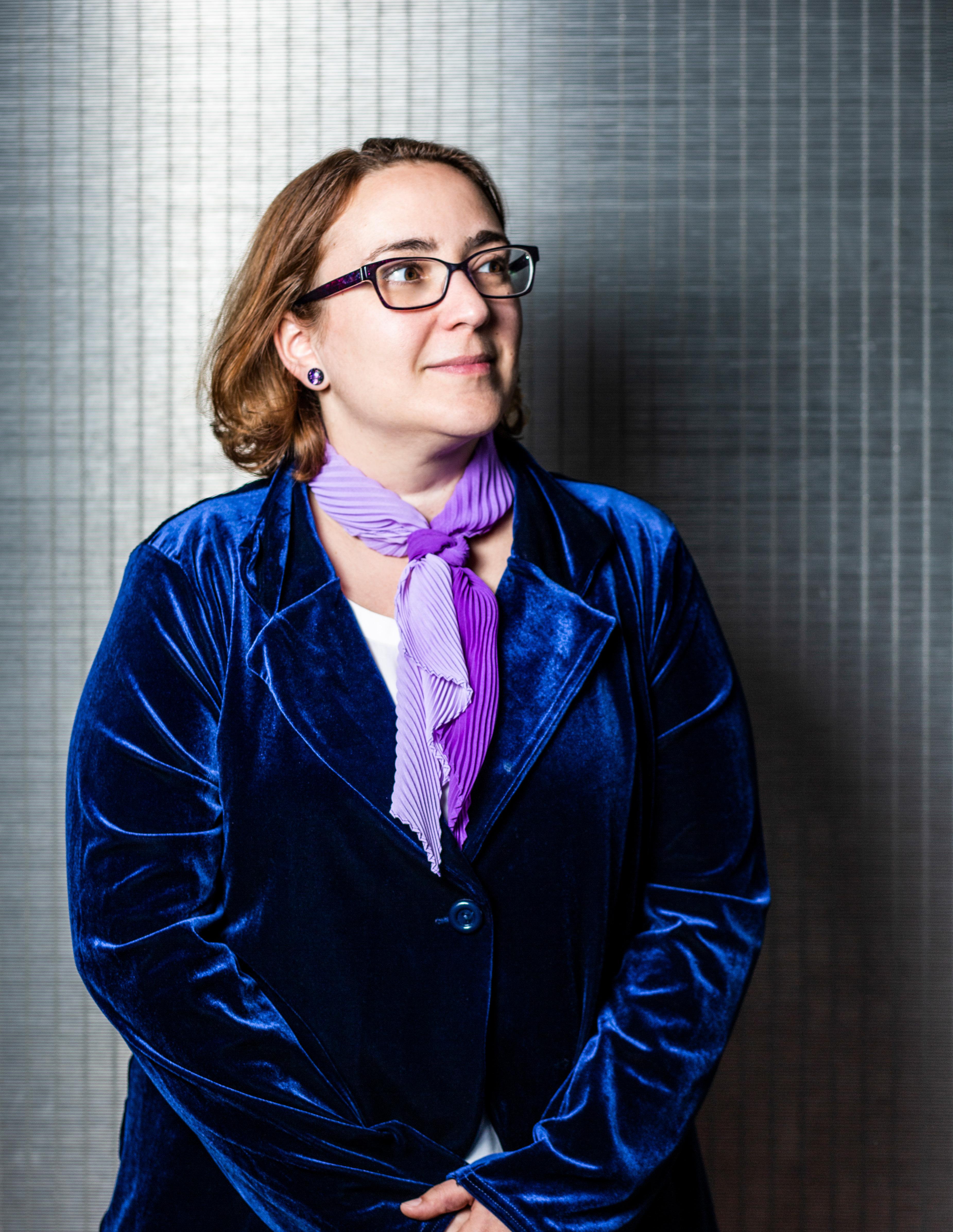
BY KC ESPER
BY CASS DAVIS
The Barilla Group is more than just a pasta company. It’s an establishment founded on the principle of bringing people together through food, passion, and acceptance.
Over the years, Barilla has elevated its brand in ways that have widened its capacity to weave innovation and modernization into its more than 140-year-old makeup. Along the way, it has partnered with big “foodie” personalities like Hannah Hart to create a web series that discusses people’s passions while satisfying their appetites, and Thug Kitchen to develop a plant-based recipe for a limited-time promotion at its Casa Barilla restaurants. Both efforts are examples of how Barilla tries to connect with its customers universally, showing the brand is more than just a blue box of pasta.
To make the company feel like a family externally, Barilla works hard to ensure the connectivity of its internal staff reflects outward. One of its leaders at the forefront of these efforts is Talita Ramos Erickson, general counsel of Barilla (Americas), and CEO of Barilla Restaurants.
Erickson’s purpose extends beyond initiating legal review and serving as a face to the company name. She works tirelessly to ensure that Barilla stands by its mission to celebrate passion and encourage community both internally and externally. Since starting at the company in 2012 as general counsel after nearly a decade working across the
food industry, she has adopted the company’s long-term way of thinking to guide strategy based on foreseeable trends.
“We’re a company that has been around for more than 140 years. As the market changes, we are now very much on trend,” she explains. “Consumers are shying away from overly processed foods and have concerns about sustainability and the environment. Because we have always had this philosophy of being ‘Good for You and Good for the Planet,’ we are already aligned with the trend.”
As the company continually strives to make a positive environmental impact, Erickson channels the same drive for positive impact into building her team. As a Brazilian immigrant herself, Erickson seeks to empower other Latinx employees to both integrate and excel in the workforce.
Five years ago, Barilla embarked on its journey to make the company more diverse and inclusive. At the start of the project, Erickson was chosen to serve as Barilla’s first chief diversity officer, leading the company’s Global Diversity Board and its initiatives to enable a corporate culture that welcomes different perspectives, cultures, and genders into every branch across the world. Since starting this endeavor, Barilla has been recognized for its efforts, receiving multiple awards for its support of refugees and its program that includes people with different abilities, and even achieving a perfect score on the Human Rights Campaign Corporate Equality Index five years in a row.
After three years as chief diversity officer, Erickson left the position in good hands to carry on the work she started as general counsel (Americas). Upon leaving the role, she decided to further her accomplishments on the business side of Barilla, applying what she learned during her time at the University of Chicago Booth School of Business, where she received an MBA in 2010.
“I’ve always been passionate about business, and expressed this interest to leadership,” she says. “In 2018, our company CEO asked me if I would be willing to take over the restaurant operations. It was a great opportunity to work closely with him and other leaders and further enhance my business acumen.”
As she transitioned into her new role as CEO for restaurant operations, Erickson maintained her focus on preserving inclusivity. She constantly finds ways to incorporate
new viewpoints into her work, whether that means something as simple as asking for her colleagues’ advice on a matter or something more complex, like applying cultural dexterity and incorporating best practices, respectively.
Furthermore, she carries on her mission of empowering Barilla’s Latinx workforce, subsequently supporting the next generation of Latinx business leaders. She starts first by developing an environment that fosters multicultural growth.
“I always go back to the definition of inclusion,” Erickson says. “Inclusion is about uniqueness and belonging. To me, uniqueness comes from trying to understand how people working on my team are different and how their backgrounds contribute to their personalities. Understanding how people are unique allows us to create an environment where they feel they belong, where they can provide feedback without feeling like they will be judged or reprimanded for it.”
Erickson channels this mentality into her work with Barilla’s employee resource groups, in particular as the executive sponsor of one called Alleanza—“alliance” in Italian—which caters to Latinx and Black American employees, as well as allies of these communities. This group, and others like it, were created to foster open dialogue about resources employees need to feel included, like celebrating important heritage milestones, and to shed light on biases they may be facing inside or outside the company. Alleanza provides a platform where these communities can receive support from devoted, likeminded mentors and coaches.


Carlos Garcia, vice president of finance and administration for Barilla Restaurants, is Erickson’s most senior Latinx report. In fact, Erickson is the first Latina to which he has reported directly in his career—an experience that has provided him with a mentor who upholds the same vision and passion that he strives for every day. Just as Erickson leverages her position to serve as an example for and empower future Latinx leaders, Garcia shares his professional experiences to become a similar mentor for others.
“On the restaurant side, a lot of our back-ofhouse employees are of Latin descent,” he says. “Seeing Talita and I in these leadership roles helps provide inspiration to our team. If they want to, they can aspire to go wherever they want. It’s a positive ripple effect, where people see likeminded people in high-ranking positions and ask: ‘How can I become better? How can I get there, too?’”
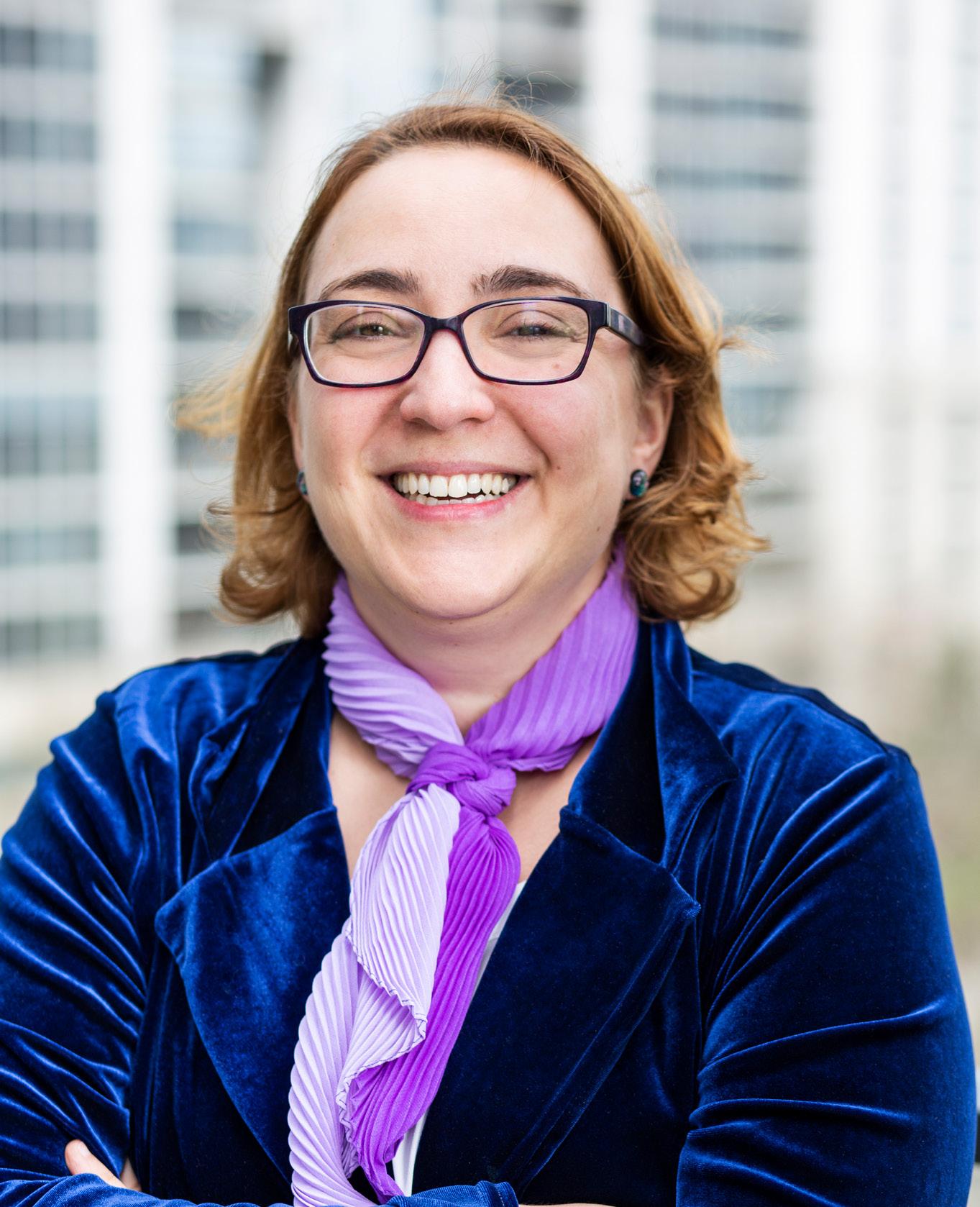
“We’re helping our Latinx workforce and other young, Latinx talent outside the company by showing that there is a place for them in corporate America, and that they can remain authentic and succeed,” Erickson says.
Outside of Barilla, Erickson works with the Hispanic Alliance for Career Enhancement (HACE), a Chicago-based nonprofit organization that partners with Barilla to recruit Latinx talent. HACE engages its affiliates through several leadership development programs, including its signature program, Mujeres de HACE.
Pursuing these initiatives has taught Erickson how to invigorate her team by inviting fresh perspectives while preserving each unique interest. “The caliber of talent you get when you look outside the norm is great,” she says. “We make better decisions as a company now that we have input from people with all kinds of backgrounds, and we also manage risk better because we have people with different views of the workplace.”
No matter the endeavor, she encourages her team to continually be curious about people and engage in conversation. As a C-level Latina, Erickson serves as an example for aspiring Latinx leaders to work hard to achieve their dreams.
“It’s hard to tell people they’re going to have a fulfilling career when nobody in leadership looks like them,” she says. Her hard work and commitment to empowering her employees serves as a testament to the merit of finding resiliency in nonconformity. Regardless of age, ability, race, gender, or upbringing, Erickson shows members of her world that they are united under their own alliance, and it is their duty to uphold these connections.
With Erickson’s help, Barilla strengthens its people-oriented corporate culture to carry the company into the future. She encourages her team to imbibe the resources before them, treating every unique story as an opportunity to learn, and to use these lessons to become better workers, leaders, and community members inside and outside the office.

SVP, Content Protection | Sony Pictures Entertainment
In his own words, the SVP of content protection at Sony Pictures Entertainment discusses how he builds community to fight piracy
AS TOLD TO KC ESPER
PORTRAITS BY CASS DAVIS
“After taking an introductory course in sociology as an undergrad at UC Berkeley, it was like I’d found home. It all clicked for me, putting into perspective so many emotions and thoughts and theories that had been racing through my head growing up.
I grew up in El Monte, California, which is a predominantly working-class Hispanic community. My parents were young when I was born—just graduated high school. My dad is Mexican American, my mother is Caucasian. Being an interracial couple was not common at the time, so they had many
struggles gaining acceptance from key family members. Over time, family came around and, with community members, they taught me at a very young age that family is what you make of it. There’s not just one definition, but there are common qualities.
For us, food was the epicenter of community. Whether it was a barbecue or a dance party held in our garage, we would use sharing a meal as an excuse to gather everyone together on Friday nights. We shared dark days, our hopes, our dreams, and learned to lean on each other for support. Our bond was strong because none of us had much during that time, but we had each other. The value of those connections was so much more than money could ever buy.
I actually considered pursuing a PhD in sociology with the goal of becoming an academic, but I was conflicted by a longing curiosity for the law. Because of my upbringing, I became kind of an activist, always challenging things or trying to think outside the box. But when I would research law, my head would explode. It was like a foreign language, with all these arcane rules that seemed to contradict themselves at times.
What I’ve grown to understand about the law, particularly in a democratic society, are two things: one, whenever society is at a tipping point on an issue, the law can be the rock that weights society back to normalcy, or catapults it into an entirely new direction; and two, legal recourse is not the answer to every dispute. In fact, it’s not the answer to most.
So I chose Stanford Law School because I thought taking knowledge of the law and making it familiar—and combining it with my background in studying social behavior— would make me more effective as an advo-
cate. It’s this belief system that has guided me all these years.
When I think back to my upbringing, what I realize from forming those strong connections is that we all have a responsibility to help each other. Fast-forward to my job now: Piracy is the exact opposite of that. It’s a symptom of what I think is a larger societal problem. In an era where technology continually lessens our need to be physically connected, we must make a conscious effort to do it.
I have a complicated relationship with technology. On one hand, it has allowed the entertainment industry to advance leaps and bounds in creating immersive experiences as well as streamlining and expanding legitimate distribution methods. On the other hand, it has made the availability of infringing content on the Internet more user friendly than ever—which is having a negative impact on moral compasses.
Surveys today show that arguments against piracy resonate best with consumers if they can see how the consequences affect them directly, like malware or viruses that infect personal devices. Arguments about the bigger societal impacts, like the loss of jobs or the fact that piracy directly finances organized crime, don’t move the needle as much. Piracy behavior illustrates how we might subconsciously be shifting views from the community to the individual.
As technology helps make our lives easier, it also moves us away from the need to physically interact with each other. So our ability to connect and empathize is changing, particularly given that the majority of how our bodies are designed to communicate is nonverbal.


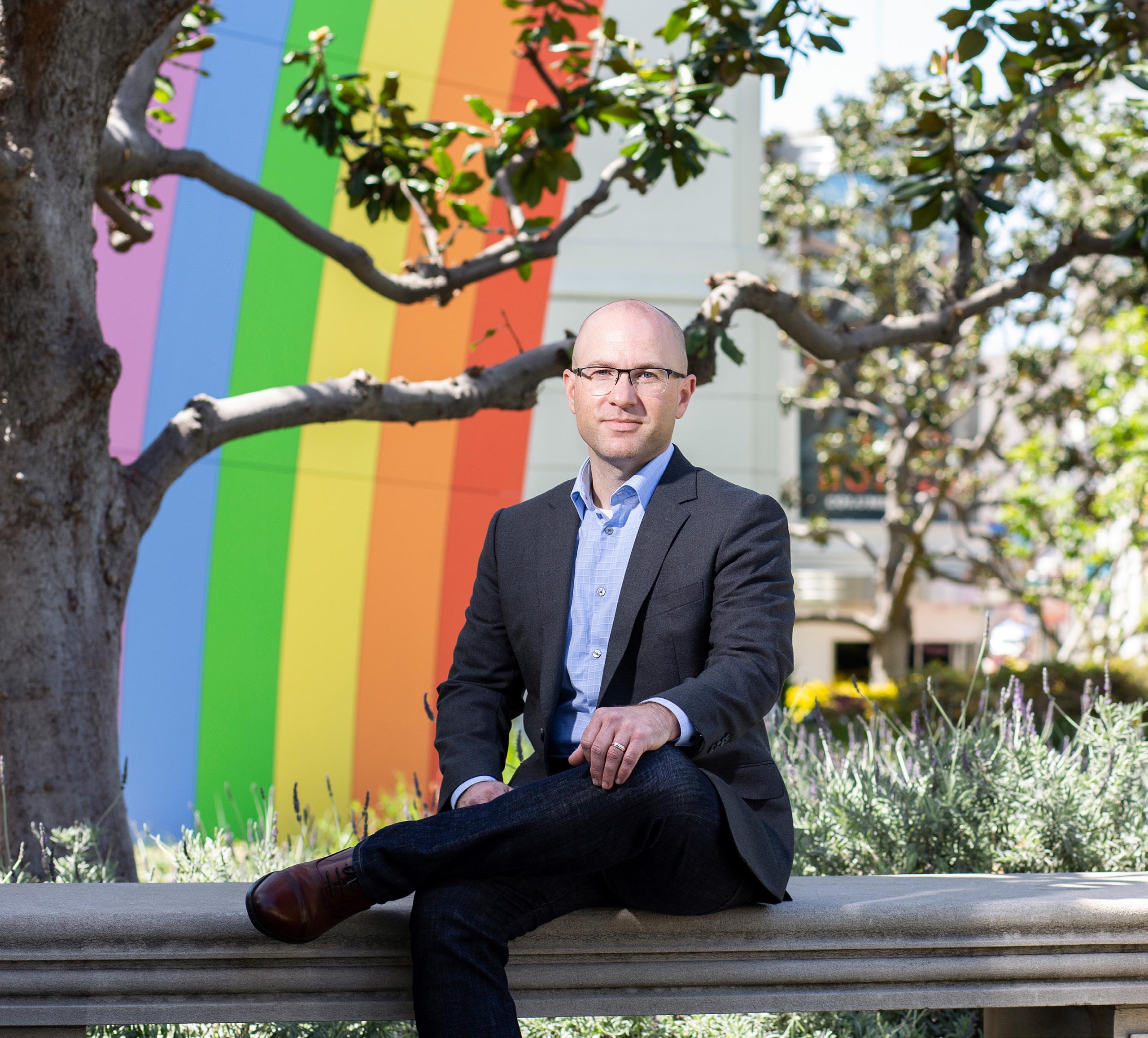
This disconnected communication creeps up in many corporate cultures, such as using teleconferences when we’re down the hall from each other, or when we text or use headphones to avoid small talk. They’re all valuable forms of communication in themselves, but they’re implemented by users in a manner that doesn’t further emotional connection.
In my team, we take this very seriously. Creativity doesn’t exist in isolation, so neither should our colleagues. We regularly hold face-to-face meetings; I’m constantly walking to offices to brainstorm ideas; my team and I grab lunch or coffee together whenever we have a chance. We see firsthand the value of these in-person shared experiences, and we’ve become stronger as a department.
My team’s job centers on the worldwide protection of distributed content, whether it is a feature, TV series, or network. By no means do we do this alone. We tap into resources and partner with divisions across the company and other stakeholders worldwide with the common purpose to provide the most efficient, effective, and industry-leading services to deter infringement. The team effort and the culture we have here thrives on supporting whoever needs help, wherever, at any time.
As a leader, I feel it’s important to make sure everyone’s voice is heard and everyone feels empowered to speak up. It’s important that our core brings together diverse backgrounds—uniting these experiences only makes us better. We all have defined roles on our team, but we aren’t limited to those roles, so I tend to lead from the side. By that I mean: I allow my team to work as a team and collaborate to solve problems, but I am able to step in front when necessary.
In my view, it’s about invoking a sense of curiosity and integrity among the team while being there to support them. But a leader is first and foremost responsible for the team. So when a situation arises and someone must fall on their sword, it should be the leader.
Over my thirteen years at Sony Pictures, I have learned to treat everyone with respect and listen more than I talk. I’ve been able to use my street smarts and common sense to trust my gut when making decisions and never underestimate what people can do.
The entertainment industry is at the epicenter of turning stories into something more— something we can all connect with at an emotional level. That’s important to me. To do that, you have to help people with vision— creative thinkers who want to be part of our mission to make each experience accessible in a manner that is safe and secure and will allow us to keep making new experiences possible.
In our team, we step back and think differently to connect and learn from our partners and consumers, particularly around viewpoints on piracy and how best to address it. Piracy will continue to be a thorn in the entertainment industry, but there are actions we can take, and are taking, to mitigate it, to learn from it, and hopefully to grow from it, too.”
Former US Secretary of Housing & Urban Development, former Mayor of San Antonio
In his own words, the candidate for US president discusses his cultural identity in the political world
“We shouldn’t elect anyone president—or to any office—just because of the color of their skin or their ethnicity. However, there’s no question—especially right now when many feel like this president has targeted the Latino community—that there is a special meaning in my candidacy for many people. My job is to go out there to speak to all Americans, and I’m going to do that. But I also recognize the special resonance that my candidacy will have in the Latino community.
Though racial identity—or any other kind of identity—shouldn’t be the sole determinant about whether somebody gets your support, the phrase ‘identity politics’ is too often used as an insult to tell people of color,
BY CASS DAVIS
people who are gay or lesbian, or women to just shut up.
I vehemently disagree with that. The problem is that—whether we’re talking about politics or in a corporate boardroom or the halls of congress—there are certain people who have historically been excluded. And so there is significance in now getting to hear their voice.
That’s not something to be ashamed of or to put back into the closet. It’s something to celebrate and to make part of the mix. There’s room for the celebration of diversity, today and going forward.”
READ OUR CONVERSATIONS AT THE TOP FEATURE WITH JULIÁN CASTRO ON P. 64.


Hard to picture this kind of conversation among utility workers? You’re not alone. But this scenario is what Joe Dominguez thinks about often.
The newly appointed CEO of ComEd has a bold vision to provide customers with affordable electricity while supporting local communities—and he knows a culture of respect and inclusiveness is the only way to get there
Imagine utility workers in the field—those that come to maintain or repair your power lines. Picture them in their hardhats, neon-orange vests, steel-toe boots and all. Think about their day-to-day conversations, as they’re working—sometimes in belowzero or 100-plus-degree temperatures.
Now imagine these same workers sitting in a meeting room, talking to their fellow workers about their challenges, successes, and failures, and whether they feel they’re able to bring their whole selves to work every day.
BY KATHY KANTORSKI
BY CASS DAVIS
As the newly appointed CEO of ComEd, an Exelon company that powers 4 million Illinois residents and businesses (roughly 70 percent of the state’s population), Dominguez is leading an enormous charge. He believes ComEd should provide affordable electricity that is accessible to all, while helping create job opportunities across the communities the power company serves.
A vision this bold requires innovation. And to foster innovation, a company must have the right culture.
“The amount of time you spend on people issues is always a surprise to a new CEO,” Dominguez says. “Hours spent thinking about strategy—those hours become fewer and fewer. The hours you spend trying to develop your team and thinking about the culture of the organization—you always underestimate that. I’d say I certainly underestimated it early on.”
In describing the culture he envisions as ideal for ComEd, Dominguez identifies safety as the number one priority—“and we’re not just saying that and then sending signals that productivity is more important,” he notes.
Beyond safety, Dominguez explains that, “Respect and inclusiveness must be in the culture. I think what that provides you is the ability to innovate and, if you fail, fail fast, learn from the failure, and advance quickly. If you don’t have that basic respect in the workforce, then people go into self-protective

behaviors where they don’t openly talk about the challenges, they don’t openly talk about failures and lessons learned. Innovating and reinventing this system requires us to be very open about what’s working and what isn’t working and be willing to take some risks. And that just hasn’t been the culture at most modern energy companies.”
The scenario of field workers in an offsite meeting talking about cultural issues and inclusivity is just one of the many ideas
Dominguez would like to implement at ComEd to ensure an inclusive culture. “I’d like to see if we can bring this idea of openness to all 6,000 employees, because there are differences within our team—from the trades, to the folks that work in the field, to the groups that never see the field and are working on legal problems, finance issues, HR . . .” Dominguez says. “How far could we take these cultural missions? I think we could take it all the way to the field, but that
means getting groups to talk about cultural issues and inclusion issues in a workforce that hasn’t had that opportunity to open up. If we can get to that, it will unlock innovation. That’s one big piece of the puzzle.”
In a speech delivered to the City Club of Chicago in April 2019, Dominguez laid out his vision for the future of ComEd—and talked a great deal about social equity.
Aligning the future of an energy company with the socioeconomic troubles of a population can only be done by someone whose background extends beyond energy.
The son of parents who left Cuba with “nada más que con una mano delante y una mano detrás ” (“nothing more than one hand in front and one hand behind”), Dominguez was born and raised in a Spanish-speaking community in northern New Jersey. He was only able to meet his grandmother once in his life (she was not able to leave Cuba), and in that meeting, she told him about how his father had always wanted to be an engineer. She wept, thinking about the dreams his father was unable to pursue after starting a new life in the US.
Naturally, this inspired Dominguez to adopt his father’s ambitions. He graduated from the New Jersey Institute of Technology and became a mechanical engineer, working exclusively on General Electric’s next-generation turbo-shaft helicopter jet engine, called the T700.
With an emphasis on education instilled in him by his parents, Dominguez entered a master’s degree program in engineering, then entered the Rutgers University School of Law with the intention of becoming a patent
lawyer for the career opportunities it provided. “That lasted for about a coffee break,” he says. “Patent law was interesting, but I found patent litigation and intellectual property litigation to be more fascinating.”
The engineer-turned-lawyer soon found himself vying for a position as a federal prosecutor. “I was one of about ten hired from 500-plus applicants to work at the US Attorney’s office in Philadelphia,” he recalls. “What was really cool about that office was it had a drug group, a financial crimes group, a racketeering group, a mob group, and so on and so forth—I really got a healthy taste of doing just about everything from bank robberies to murder-for-hire cases.”
He left the US Attorney’s office and became partner of a law firm. One day, while he was trying to pitch his law firm as potential outside counsel handling some of Exelon’s business, he found himself recruited by Exelon’s lead lawyer, Bill Von Hoene, as inside counsel.
Dominguez joined Exelon in 2002, and spent sixteen years serving in roles with increasing responsibilities until he became CEO of ComEd on August 1, 2018.
Looking back on his time working for the US Attorney’s office, he says, “You really see some of the worst outcomes of social equity issues, whether they be economic opportunity or education challenges. One of the big symptoms of that is crime. I saw that, and it had a very powerful impact on my life.
“As we explore some of the big transformations in the energy sector,” he continues, “we will ensure that the work and the opportunities that spring from that work feed these communities in a way that supports their economic growth and provides desperately needed jobs.”
BY KC ESPER
Talking to Lisa Heritage McLin is like talking to a childhood best friend. She’s bright, inviting, expressive, and she always makes time in her busy schedule to talk, no matter the circumstance. But, above everything that McLin embodies, she’s passionate.
At Rackspace, McLin stands as the vice president of North America channel sales and channel chief. Her position is the result of her ability to combine her tech-savvy knack for solving problems with her adroit proficiency for thriving in change over a seventeen-year tenure at Rackspace. Her passion shines through as she regards the dynamic nature of her job as an opportunity to learn—as she puts it, “Constant change provides constant education.”
McLin’s devotion to exploring and learning started at an early age. When McLin turned twelve, she told her parents she wanted to become an accountant. She liked connecting the dots of numbers-based problems, assessing a circumstance based on a set of data, and using her analysis to develop solutions.
She entered the accounting industry fully committed, her drive to work hard already deeply ingrained in her core values. McLin grew up on a ranch in Texas, witnessing the incredible work ethic her parents upheld, their unabashed and unceasing celebration of their heritage, and their commitment to
An advocate for devoting your life to doing what you love, McLin uses her leadership position at Rackspace to inspire and guide women and Latinx colleagues in the tech space
serving every member of their community: God, family, and friends.
Throughout her life, she has held on to the instincts passed down to her, which center on the illuminating importance of pursuing personal passions while serving everyone who surrounds her. As she grew up, she developed a mantra that motivates her to carry on every day: “I’m here to serve, to work hard, and create positive change.”
After dabbling as a staff accountant in the food industry, she discovered Rackspace, and an entirely new passion ignited. She enjoyed breaking away from the more static nature of

the food-service business and moving toward the charismatic structure found within the technology field.
Within her tenure at Rackspace, she used her inherited work ethic to take on new challenges in different roles, moving from her starting position as staff accountant, eventually becoming vice president of sales, then landing in her current role after achieving several other promotions. Now, McLin focuses on building relationships with Rackspace’s partners across the country to promote easier, more effective communication and business strategies.
“Lisa’s passionate focus on problem solving and creating positive change shines through in her relationship with us,” says Steve Hartofelis, the regional vice president of sales for Sigma Solutions, a partner of Rackspace. “Her amazing work ethic means she always gets the job done, making her one of our most trusted partners.”
McLin’s latest undertaking has been creating the Clouds Guide app, which seeks to further bring together Rackspace’s network by sharing information about services, recommendations, and internal transformations. This unique app serves as a platform to strengthen the interconnectivity of each channel to advance as a unit, rather than independently. It also informs partners about the work Rackspace offers, helping expand their customer portfolio.
“The Clouds Guide app is entirely homegrown,” McLin explains. “It will serve our partners by helping them uncover the best cloud recommendations for their customers
“TECHNOLOGY AND STEM FUEL ALL OTHER INDUSTRIES AND WILL CONTINUE TO LEAD TRANSFORMATIONS WITH NEW INVENTIONS— WHICH IS WHY WE NEED WOMEN TO ENTER THE FIELD AND BRING NEW DIVERSITY OF THOUGHT AND EXPERIENCES.”
and show them how they can use Rackspace to guide them through their digital transformation. It shows how we grow and work together and allows us to think about how we leverage global success.”
After working for fifteen months to develop the app, Rackspace’s engineers released it to its audience in early spring of 2019.
While McLin continues to help make positive change for Rackspace’s business partners, she also devotes a large portion of her time and efforts to promoting women professionally. Within Rackspace, McLin is the executive sponsor for the Professional Organization for Women’s Empowerment at Rackspace (POWER RRG) as well as the Women In Sales Elevated (WISE) group. Within these communities, McLin connects women of different ages, backgrounds, and professional expertise, encouraging them to advance in their careers by building connections. This project has become McLin’s principal ambition, as it allows her to use her own success story to inspire others to work hard and accomplish their goals.
“Working to elevate the success of women is one of my greatest passions,” McLin expounds. “I am a mentor to many women inside and outside Rackspace. I encourage them to apply to that next role, take on new projects, gain exposure to leadership, and learn how to rise above their fears to step into greatness.”
McLin’s efforts within Rackspace have encouraged prospective leaders to step out of their comfort zones, take on new responsibility, and gain exposure to executives.
In addition to working with Rackspace’s women, she is also instrumental in Girls, Inc., a nonprofit organization that partners with Rackspace to teach girls entering high school
Congratulations Lisa McLin on this well-deserved award.
Your accomplishments are a direct reflection of your leadership and passion and are a valuable contribution to the culture built within Rackspace. We are proud to support you as a valued partner.


Strategic solutions and services that accelerate and optimize your digital transformation initiatives.

about the benefits of working in STEM careers. The group brings together eighth and ninth graders who are aiming toward a science- or technology-based program and allows them to meet female leaders in different fields so they can gain a deeper understanding of the industry. Women who work in sales, marketing, coding, engineering, or administration show that tech involves a larger scope of interests beyond the industrial aspects of it.
McLin believes that empowering women through POWER RRG, WISE, and Girls, Inc. is vital to enhancing the future of the industry.
“Technology and STEM fuel all other industries,” she says. “Just look at how big data has changed the healthcare industry, or how new applications have changed online shopping. STEM will continue to lead transformations with new inventions, which is why we need women to enter the field and bring new diversity of thought and experiences as we serve customers—men and women—from all industries impacted by technology.”
Because of her efforts, McLin has also been selected to serve on the Girls, Inc. board so she
can reach the younger generation of STEM professionals through her story.
McLin uses these platforms as a way to not only be a model for women, but also a model for Latinx professionals in any discipline. She relies heavily on the importance of, as she puts it, “staying true to our culture to build community and share what you have.”
At Rackspace, she works with other leaders to bolster its diversity and inclusion functions by incorporating a variety of backgrounds into the makeup of the organization, then mentoring them to work at their highest potential once they’re in place. With Rackspace based in San Antonio, Texas, McLin expresses that bringing more Latinos into the company will allow it to better support its community.
As she gains the opportunity to reach more Latinx employees, McLin treats everyone with the same amiability as she does her friends and family. She willingly spreads her time among her team to ensure that they are achieving their goals and guides them if they need help along the way.
“I am their go-to,” she describes. “I am open and honest with all the Latinos that work here, so we can learn from each other. I share my story about how I became a leader to show that if you love what you do, you can be great at it. My guidance allows us to reach our dreams as a team—to say, ‘Join me. I’m here to support you. Let’s win together.’”

BY BILLY YOST
Carlos Linares spoke to Hispanic Executive in 2013 after deciding to take a serious career leap. He had amassed twenty years of R&D experience at global companies like Johnson & Johnson and Procter & Gamble, then elected to take on a new challenge: organizational transformation. That meant moving to leaner, more entrepreneurially spirited companies and a world less familiar to the executive.
That leap was six years and two organizations ago. In that short time, Linares has ushered in an amazing second act to his career, reinventing himself as an expert in organizational transformation. After successful rebuilds at Alberto Culver Company and
Sun Products, Linares is two years into his newest role: Executive Vice President of R&D at Church and Dwight, where the executive combines his transformational and R&D expertise to drive business results.
Linares believes that his breadth of work in a variety of different organizational models has developed his adaptability to virtually any setting.
“When I look at my own skill set, it’s not just from a technical perspective,” Linares says. “It’s not necessarily about the depth of science, but the breadth of approaching innovation in a variety of different models over the years—without being married to one.” The EVP has operated within both regional and global brands, and both private label as well as brands people encounter every day. He has found a way to drive success in any situation.
As his R&D career progressed, Linares says his focus has shifted from individual products to wider organizational success. “I began to understand that changing and transforming an R&D organization can be exciting and fulfilling in a way that goes beyond developing great products,” Linares says. “It was a natural progression after already having such a rewarding career.”
Along with this shift in focus, so too shifted his leadership. “Today, I really think my role is to set the strategy,” Linares says. “I work hard to create a vision that’s both aspirational and informed. Great teams will then help cocreate and deliver the vision.”
That means inspiring people but also maintaining credibility. That difficult balancing act is where Linares’s experience

and adaptability are key. A leadership vision may have universal principles, but the EVP says that each company’s unique DNA makes tailoring that vision with a degree of flexibility absolutely essential.
“Carlos is a visionary leader in the competitive consumer-products market,” says Joy Atkinson, president of the Body Home Care North America division of Firmenich. “He inspires the scientists and his expanded partners to challenge themselves and think out of the box, while always keeping consumers’ desires at the forefront of innovation.”
When he came to Church and Dwight, Linares says he was able to get right to work. “We’ve run fast and put in our new functional R&D strategy that’s aligned with the corporate strategy. We’ve also been building a new team, and right now we’re finalizing the leadership team by making the right moves both through external hires and internal promotions,” Linares says. “Those positive results are already starting to show in the team’s motivation and in their portfolio of new technologies.”
Linares came in with a mandate that was made evident even before the interview process began. “I was told that Church and Dwight wanted to create a new strategy that would turn R&D into a driver of stronger innovation,” Linares says. “But one of the things I’ve learned in driving transformation is you have to do everything you can to confirm that’s actually what you’re being asked to come in and do.”
Linares did his due diligence, probing for calls for change that would be abandoned
“MY ROLE IS TO SET THE STRATEGY. I WORK HARD TO CREATE A VISION THAT’S BOTH ASPIRATIONAL AND INFORMED. GREAT TEAMS WILL THEN HELP COCREATE AND DELIVER THE VISION.”
as soon as it actually began to occur. The mandate from the CEO and management team, it turns out, was very real.
Spurring innovation in R&D was particularly alluring for Linares because of Church and Dwight’s diverse portfolio. “We have a great diversity of scientists, including biologists, chemists, engineers, and designers,” Linares says. “We needed to break down the silos to connect these diverse disciplines and make the innovation process very collaborative.” Enacting that cultural shift has meant building and designing products within a department and increasing interdepartmental cross-collaboration that serves as a creative multiplier.
The diversity of Church and Dwight’s portfolio has also deeply affected the way the company operates. Eleven of the company’s twelve most popular brands came via acquisitions. “The level of change that comes along with that sort of mind-set is very dynamic,” Linares says. “There’s always new opportunities to grow and make an impact.” That dynamic has also impacted company values.
Culture is key for Linares, who believes culture can be built. “That’s why you have to be so careful about what you build,” Linares says. “We want the competition to be outside the organization, and we want to be hiring with that mind-set so anyone coming on board adds to that experience.”
As he readies himself for the third targeted transformation on his watch, Linares says the Church and Dwight experience is occurring much faster than the two previous. “I think that’s a testament to the


management team that we have here,” Linares says. “I’ve also had a little more practice now, but the key has been our R&D team. Their capabilities and adaptability have greatly accelerated our organizational change.”
Church and Dwight, Linares believes, already has a strong foundation to build upon. “We’re a midsized company with a midsized advantage,” Linares says. “We’re able to compete with much larger organizations while being able to operate with much more agility.”

The EVP says the company tends to view itself with a much more blue-collar underdog mindset. As a first-generation Cuban American whose parents were willing to do whatever it took to help their children get ahead, Linares says that scrappy and spirited approach is inher-
Recognizing Church and Dwight’s outlook is central to Linares’ leadership approach. “Once you know who you really are, you can find the place that matches your values and your interests,” Linares says. “That’s why I ask candidates in interviews who they are as leaders at their core. It is important to get to know yourself as a leader early
Linares says that matching one’s personal strengths with a
company that reflects those skills and values is when a corporate career inevitably flourishes. Linares’ own personal success has birthed a desire to mentor Latin-American scientists and executives, who were far too few in Linares’s own career. “I want to help pave a path for more Latin Americans interested in the sciences.”
And while the EVP didn’t have many Latin American role models in the industry to look up to during his own rise, times are changing. “The good news is that there are many more Hispanic executives today in technical organizations than when I started,” Linares says.
First motivated to make his parents proud, Linares says he now feels responsible to his heritage, helping others where he can. “I’m very proud of where we’ve come from and where we’re all going.”
Takasago International Corporation is a leading global fragrance, flavor, and ingredient company dedicated to developing high-quality and innovative products that contribute to cultural and social progress. For nearly one hundred years, Takasago has developed flavors and fragrances for some of the world’s most successful manufacturers of food, beverages, fine fragrances, and home and personal care products.
At BASF, we create chemistry for a sustainable future. More than 122,000 employees in the BASF Group work on contributing to the success of our customers in nearly all sectors and almost every country in the world. The BASF division Care Chemicals offers a broad range of ingredients for personal care, home care, industrial and institutional cleaning, and technical applications. We are a leading global supplier for the cosmetics industry as well as the detergent and cleaner industry and support our customers with innovative and sustainable products, solutions, and concepts. We have production and development sites in all regions and are expanding our presence in emerging markets. Further information is available online at www.care-chemicals.basf.com.


BASF Care Chemicals congratulates Church & Dwight’s Carlos Linares on this well-deserved recognition. Carlos, we thank you for your industry leadership and partnership!
– Scott Thomson and the BASF team


Together with our customers, we create innovative and sustainable solutions to meet the current and future needs of society in the personal care, home care and industrial & institutional cleaning industries.
BASF ingredients, technologies, and technical expertise help brand owners deliver quality products that make everyday life easier and more enjoyable – by combining functionality, innovative chemistry, and our commitment to sustainability.
To learn more visit www.care-chemicals.basf.com
The philosophies of innovative leaders have the power to inspire and spark change. Read on for the thought-provoking insights of these successful executives.
128 Miguel Myhrer, Accenture
133 Bill Martinez, Chesapeake Energy
136 Miguel Quiroga, Visible
140 Nestor Martinez, New York Life
144 Maria Thomas, syncreon
“A hallmark of any successful person is a commitment to continuous
BY BILLY YOST
Accenture’s Miguel Myhrer on his global upbringing and focus on the future of communications technologies.

BEFORE CELLULAR PHONES AND international calling plans, Miguel Myhrer remembers his father using a ham radio to communicate with their extended family in Ecuador. It was Myhrer’s first real introduction to communication technologies, but it wouldn’t be his last.
Now a managing director with Accenture’s North American Communications practice, Myhrer has spent twenty years at the company helping create inroads for new and developing communication technologies and helping find solutions to Accenture clients’ most significant problems. Myhrer—who at one time or another has spoken English, Spanish, French, Swiss German, Danish, and Norwegian—continues to innovate his role by focusing on continuing education and the power of diversity in the conversation.
Myhrer grew up in Europe, living at different times in Copenhagen, Switzerland, and Norway, his father’s home country. Summers were spent in his mother’s home country of Ecuador, attending school and spending time with family. His parents, both educators, put a great deal of emphasis on the importance of education, and it has stuck with Myhrer throughout his entire career.
“I’ve found that one of the hallmarks of any successful person is a commitment to continuous learning,” Myhrer says. “My father was the first in his family to attend university, and he and my mother really helped make education a foundational tenet.”
That focus on education is paramount to Myhrer’s development of staff at Accenture. “How do you ensure that talent is learning the skills for tomorrow?” he asks. “You have to be committed to understanding and embracing new technologies and new ways of approaching an old problem.”
Embracing new perspectives also goes hand in hand with Myhrer’s continuing emphasis on inclusion and diversity. While attending Georgia Tech, he found that the university’s makeup of people from many
different backgrounds—both in the US and globally—made him feel at home. After all, he had many different cultural experiences growing up, as his familial and friend interactions often spanned cultures and countries.
“The perspective of one, two, three, and sometimes four different cultures among my own family and friends provides a way to further enrich one’s own perspective,” Myhrer says. “In my career I’ve found that, in gaining multiple points of view, one makes decisions in a much more informed way. That really can’t be overstated.”
For Myhrer, valuing diversity includes recognizing his own biases when it comes to approaching a problem. “My father is a physicist, and I am an engineer. At Accenture, however, I’m surrounded by others with varying skill sets, which is the best way to solve things,” he says.
Myhrer recalls a meeting with executives at a global wireless operator in Germany, who were focused on the rollout of the 3G handset and network in the mid-2000s. “There was my client, who was German, and other client executives were from Brazil, Poland, the UK, Spain, and Argentina,” he says. “Each individual brought a different perspective to this complex topic, and it turned out to be an amazing outcome for our client and for us. It felt like being at the United Nations.”
Myhrer says he loves the problems that seem hardest to solve, which is evident in his work at Accenture. He calls to light two issues in particular involving the fast deployment of innovative capabilities where Accenture is focused on the benefits not only to clients, but to society.
The first is one of the largest challenges facing the communications industry: how will the next generation of wireless technology fuel the next generation of economic growth? By taking an innovative approach, Myhrer and others across Accenture are working with global carriers to accelerate their deployment of fiber networks and 5G.

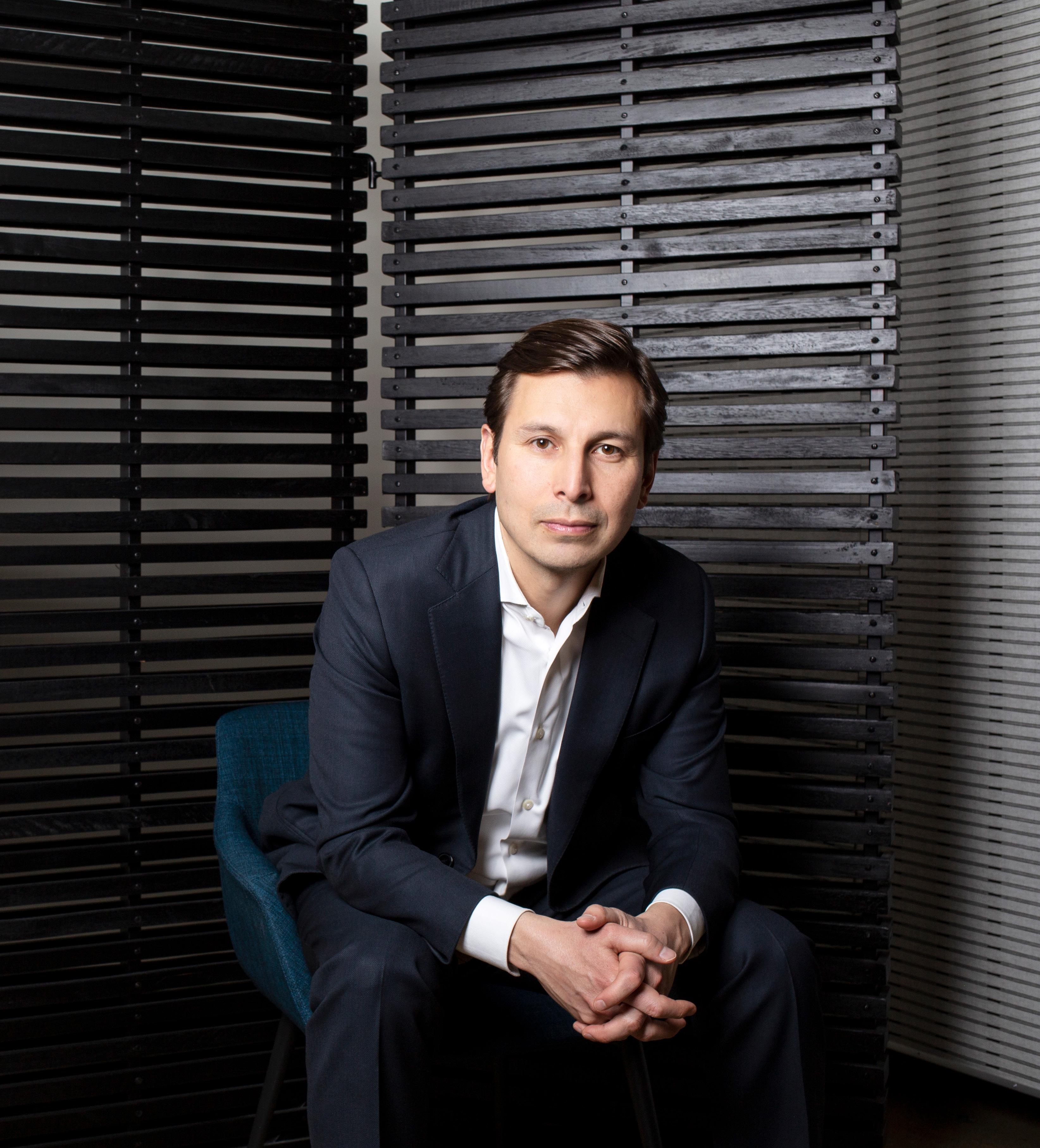

“We’re taking the vision of 5G and working closely with our clients by first making it an economic reality, orchestrating tens of thousands of people to achieve the single goal of an accelerated deployment,” Myhrer says. “That requires an immense understanding of very discrete areas, such as the design of fiber networks, optical distribution networks, 5G, permitting at municipalities, and construction management.” To Myhrer, this illustrates the power of diverse viewpoints as essential
in helping clients find solutions to problems that, from the initial impetus, look daunting.
Another issue at the forefront of the industry is: how do communications companies reimagine engagement with their subscribers?
“We’re looking at how to transform the customer experience for mobile operators, including when subscribers call a call center,” Myhrer says. “How do you improve the experience while also reducing costs in a significant way?” Solving this requires harnessing
expertise in areas such as artificial intelligence, human and machine interactions, call-center knowledge, systems knowledge, and user experience.
“These projects are massive in scale, and they have the capability to lay the foundation for long-term growth,” he says. “This massive scale will carry society and our clients into the future.”
Solving problems also requires what Myhrer considers another tenet of his development: knowing one’s craft. It may sound simple, but as technologies evolve at increasingly faster speeds, the complexity of those technologies increases as well, and those unwilling to grow in their own technology roles will quickly be by the wayside.
Myhrer says that Accenture’s commitment to transparency, especially when tackling such wide-ranging and challenging problems, is what sets the firm apart. “We have made our plan clear and we’ve been very public about it,” he says. “We have stated goals of our organization being 50 percent women by 2025, and we’ve been very clear about creating more female and diverse managing directors.” As Myhrer states, having clear goals and plans brings out the best in everyone.
Over the past two decades, Myhrer has helped lead double-digit growth at Accenture’s North American Communications, Media, and Technology practice by committing to clients’ most difficult problems in innovative ways.
“Each of the ways we advise the communications industry marries innovation and execution,” he says. “The reason we are what we are today is because of those two tenets.”
Bill Martinez, vice president for drilling at Chesapeake Energy, drives
BY ANTHONY RUTH
IF GUILLERMO “BILL” MARTINEZ JR. HADN’T gone into the oil and gas industry, he might’ve become the most successful bricklayer in Lincoln, Nebraska, according to his father and namesake.
Since the age of eight, Martinez worked alongside his dad, who left a stable job to go out on his own expressly so that he could have his young sons with him and teach them about work and life.
One of the most defining moments for Martinez came when he was seventeen and the family was working for a longstanding client, a prominent homebuilder named Gary.
“He would sometimes come to the job site with some of his buddies or wife and look to show off by seeking opportunities to belittle my dad and reminding him that we were lucky to work for him,” Martinez recalls. “Sometimes his humor would take a darker turn and carry over to racial undertones. He
would refer to my dad as ‘his Mexican’.” His father’s typical response was to remain quiet or play it off as a joke and continue working.
One day, after a particularly demeaning session, Martinez confronted his father. “I yelled at him and told him to step up and be a man. I told him Gary needed us as much as we needed him.” And he made it clear that if his father didn’t stand up to Gary, Martinez had no problem doing so himself, regardless of who Gary had with him.
Martinez still remembers the pain in his father’s eyes as he contemplated how to respond. Rather than chastise or punish, his father sought to take his son’s anger and humiliation and turn the experience into a lesson, telling him, “Son, don’t worry about Gary. He is a dying breed. You are coming into a new world where you will have all the opportunities I did not have as long as you are willing to work hard. But I don’t want you to

Bill Martinez VP of Drilling Chesapeake Energy
ever forget how you feel right now, because one day you will be the boss, and I want you to always treat people with the respect and dignity they deserve.”
It’s a lesson Martinez took to heart. “I believe everybody has something to contribute, regardless of where they are in the organization. I really dislike positional authority that titles tend to bring,” he says. “I want everybody to feel comfortable enough to bring their ideas forward and have their opinions heard, because I truly believe that’s how you win in business and in life.”
His father’s lessons have stayed with him and defined his leadership style for nearly
three decades. Now, as vice president of drilling for Chesapeake Energy, Martinez strives to cultivate what he calls a “culture of high performance,” which he does by empowering his team while holding everyone, including himself, accountable for results, using KPIs to measure performance. The key foundational aspects to his approach are trust and respect throughout the organization, so that everyone feels comfortable asking questions, contributing, and being willing to fail in the pursuit of improving performance.
Drilling operations are carried out twenty-four hours a day year-round and take place in the coldest of winters in the
north and beneath the scorching sun in the south. Conducting these operations with a safety-first mentality is Martinez’s numberone focus.
“It’s very easy for me to empathize with the people that get dirty for a living and often put themselves in harm’s way so that we can have the nicer things in life. Those are my peeps,” he says fondly. “I always ask myself: Would I feel comfortable if my sons worked in that environment, in those conditions, with the training they have? If the answer is anything other than a strong yes, I have work to do.”
Martinez is responsible for more than one hundred people working on approximately
twenty oil rigs throughout the US at any given time. Each morning, every rig starts with a safety meeting in a trailer, where a poster hangs bearing the phrase, “Who do you work for?” Team members post photos of their loved ones around it.
“Before they go out to their twelvehour shift, they look at that,” Martinez explains. “They say, OK, my paycheck may come from my company, but I’m working here for my little girl, I’m working here for my parents, or whoever is important to them.”
About twice a year on each rig, Martinez invites oilfield workers who’ve experienced severe and dangerous lapses in safety that resulted in serious injury and brushes with death to give testimonials to the teams. In a job characterized by physical demands and toughness, the vulnerability on display is especially effective. “We’ve had guys talk about how it’s affected their intimate relationship with their spouse,” he recalls. “These hard-to-hear things resonate with our field workers and they think, ‘This could very easily be me or one of my buddies.’ Our goal is that they recommit themselves to work safety and watch out for each other—the bonds of friendship in this line of work are very strong.”
Martinez also has a passion for the relentless pursuit of perfection and continuous improvement, and he is never satisfied with “good enough”—a concept he learned early in his career at Exxon, where he was introduced to the work of William Edwards Deming, known as the “grandfather” of the field. Martinez’s three-pronged approach to cultivating the same passion within his team that Deming inspired starts with making a case for why change is
necessary, then setting aggressive goals for performance improvement, and finally empowering his people to take good business risks—and not be afraid to fail.
“Nothing kills morale faster than an environment that preaches accountability and empowerment, but practices neither,” Martinez says. To that end, Chesapeake has undergone a culture change over the last five years from what Martinez calls a “command and control model,” where every decision was made by senior management in a top-down manner. “The way we do things now, senior management sets the overarching strategies and goals but empowers each department and ultimately individual contributors to support company goals and strategies through operational execution and improvements,” he says.
In Martinez’ area, he’s seen measurable improvements to reduce drilling costs and days spent on wells. He uses key performance indicators, or KPIs, to not only measure progress but also predict it, with leading indicators that let the team know if they’re on track. “It’s the only way to clearly and visibly communicate to everyone if you’re winning or losing,” he says.
Still, Martinez credits the interpersonal lessons his father imparted with laying the foundation for his success. “I don’t care what process or what metrics or what policies you have—if you don’t have trust and respect in your organization as a foundational core value, you can never accomplish the greatest things you are capable of,” Martinez says.
Once you have that trust and respect for each other in your organization, he adds, “Everything else is easy.”

INTERVIEW BY KATHY KANTORSKI
CEO of the new digital wireless carrier Visible, Miguel Quiroga talks influences, inspirations, and innovation.

AS THE COUNTRY’S FIRST DIGITAL-ONLY wireless carrier, Visible is on a mission to fundamentally change the way tens of millions of consumers obtain, pay for, and manage their phone service. The concept is centered around simplicity: Visible has no stores, no contracts, an affordable plan for unlimited text, talk, data, and mobile hotspots, and all of its services are accessible through an easy-to-use, consumer-centric app. Backed by Verizon and based in Denver, Visible is led by CEO Miguel Quiroga, a twenty-year telecommunications veteran. He has an MBA from Columbia and, prior to Visible, he spent the majority of his career in engineering and product-development roles. Here, the new CEO gives us a glimpse into his vision, his life, and his leadership.
What’s the biggest lesson you’ve learned as a new CEO?
That every day, you have to show up at your best, because that’s what keeps the team motivated to drive forward. And no job is too small. We’re a new company with a small team and a large output of work. I’m proud to say that we all wear many hats.
What kind of a leader do you want to be remembered as?
I would like to be remembered as efficient, productive, supportive, and innovative. You have to lead by example, and those are qualities that I set out to bring to the table every day.
Who has had the biggest influence on your life and career?
My parents. My father was an engineer and always focused on how to improve and fix things. He believed that every problem could be solved, and that’s something he passed on to me. My mom was a teacher, and I’ve always admired her for taking up one of the toughest professions. She instilled in me how important it is to always keep learning.


What’s a key principle that’s important to you?
“Customer experience first.” Putting customers at the center of every decision we make. This is our north star that helps us focus and drives us to improve every day.
What’s the best advice you’ve received? And from whom?
Before I joined Visible, I spoke to a lot of entrepreneurs and founders who told me that a common mistake is trying to do it all, too quickly. Focus is crucial. It’s important to set daily, monthly, and yearly goals for yourself and for your team, and have a clear plan of attack for each of them. Of course, a million other things always come up, but I tend to stay disciplined in regard to key goals that enable us to grow.
How do you start each morning?
I try to get a quick workout in; then I review what we achieved from the day before and prioritize what we must accomplish today and in the upcoming time horizons. I also give myself a daily reminder of our mission and vision for Visible. It’s so easy to lose sight, and those are the things that keep me on track.
What is the most difficult part of starting a new company?
This applies to businesses of all sizes, but it especially pertains to building a business from the ground up: You have to tackle new challenges daily. It forces you to build grit and resilience you never realized you had. You also have to remember that you’re designing a whole new culture and attracting the right type of employees to build the business together—it’s something that we put a lot of thought behind.
Why do consumers need a carrier like Visible?
Our members are always on the go. They value every minute of their time and want services that are quickly accessible. And while they want these services at a great price, they don’t want to compromise the quality of product and experience. With Visible, we’ve taken the savings associated with having physical stores and rolled them in to designing better technology, a better set of services that are easy to manage, and a seamless consumer journey.
What does invention mean to you?
Invention has to start with simplicity and ease for the consumer. You can design world-class technology, but if you have a hard time explaining the product and the service, then the consumers won’t understand it— and therefore, the model probably won’t work.
Why is social good important for new companies?
For us, social good and giving are at the core of everything we stand for. We wanted to ensure that this was part of our DNA from day one. Visible was designed as a community-driven business, and we launched our accelerator program, Visible Connect, before we even launched our business. With Visible Connect, we support several nonprofit partners who use mobile technology for social and economic good in different ways. It’s incredibly important to us to share our resources, to stand for something meaningful, and to hold ourselves up to a high set of values
“Leadership
‘we,’ not ‘I.’”
BY BILLY YOST
New York Life’s Nestor Martinez-Segura on leading by example and including all voices in the conversation.

OVER THE PAST ELEVEN YEARS, NESTOR MARTINEZ-SEGURA HAS risen steadily from a financial services agent to current managing partner at New York Life. During those early years, he says he was able to develop new skills, reinforce his own core values, and meet a number of new mentors and colleagues who transformed his career.
“That experience helped me to build the vision around the impact I could make in my community,” Martinez-Segura says. “Shifting my career from the agent role to management was a decision based on changing the focus and significance of my career and making it about others and not about myself.”
In his rise at New York Life, Martinez-Segura has been able to reflect on his leadership philosophies, and he stresses the importance of building culture, recruiting diverse talent, and continually demonstrating that “leadership is about ‘we,’ not ‘I.’”
At the most fundamental level, Martinez-Segura believes that his penchant for going above and beyond is largely responsible for his current success. “I’m not afraid of working hard,” he says. “I believe that nothing is more important that a strong work ethic; I learned it from my father when I was very young.”
Raised and educated in Mexico, Martinez-Segura moved to Seattle in 2005 to pursue a career in the financial industry—a challenge heightened by the language barrier: he didn’t speak English. He began taking English classes—a practical decision, but still one that demonstrated a clear will to improve no matter the challenge.
As Martinez-Segura transitioned into more managerial roles, one of his mentors taught him to look at culture as “a series of conversations,” he says. “The most important conversation is the one that happens twenty-four hours a day, seven days a week right between your ears.”
Since he’s a managing partner, it’s natural that others seek out Martinez-Segura for answers, guidance, and leadership. In return, Martinez-Segura believes that his willingness to lead by example and “get dirty in the trenches” has allowed him not to mandate a vision but create a shared vision with his team.
Part of that vision is building a diverse team. Martinez-Segura says he loves the way his office represents the wider community and fuses different cultures and backgrounds.
“[Culture is] a series of conversations. The most important conversation is the one that happens twentyfour hours a day, seven days a week right between your ears. Building a culture starts with how we conduct ourselves personally and professionally.”
“To provide the right environment where new ideas can be nurtured, that starts with the way we think and how we accept each other by encouraging diversity and inclusion,” Martinez-Segura says.
“I believe that the American Dream is alive in every person that comes to this country, and I am excited to see that our company is able to provide one of the best ways for people to achieve it.”
Within New York Life, Martinez-Segura’s ultimate goal is to increase Latino representation in the Los Angeles General Office. Diversity isn’t only important for internal team members, but for better representing New York Life’s clients, he says. “ Diversity provides a better service to our clients because we are able to mirror the community and relate to the people we serve, understand their concerns and their desires, and help them achieve their goals in their own way and language.”

With his own career progression, Martinez-Segura is intent on providing a strong hand, but one that unites just the same. He’s worked to implement processes that include as many in the office and on the management team as possible, empowering them to lead and contribute to the growth of his team.
He’s also willing to make the tough choices and take ownership of his group. “Sometimes, circumstances require us to make an executive decision to be able to move forward, and we need to be ready to do that,’” Martinez-Segura says. “I own the responsibility of every decision, regardless of the way they were made or the end result.”
Recruiting is a focus point for Martinez-Segura, as he believes it’s one of the keys to making the widest impact possible at New York Life. “I want to make sure we are doing everything we can to help
our community make better financial decisions,” Martinez-Segura says. “Are we reaching out to as many people as we possibly can? Are we helping people to transform their professional careers? Or is there room for improvement?” Success for Martinez-Segura means creating future leaders.
He is especially proud of New York Life’s community outreach through philanthropy. “We are protecting more lives in the community and helping families to stay in their homes or send their kids to college if the unthinkable happens,” Martinez-Segura says.
The managing partner’s own core value of integrity matches well with the company’s commitment to helping where it can. “Every single promise that New York Life has made to me, they’ve kept,” Martinez-Segura says. “That’s why the company is moving in the direction it is today.”
BY VALERIE MENARD
Maria Thomas tackles supply-chain challenges and opportunities with gusto at syncreon.
WHILE ON THE PATH TO BECOMING AN ophthalmologist, Maria Thomas craved more excitement in her career. She discovered that supply-chain management offers an environment of constant change, where you can learn something new every day.
“We love putting out fires,” says Thomas, senior vice president of operations— automotive Americas at syncreon, a major logistics-solutions provider for the automotive and technology industries. “There are so many different facets to supply chain, and it’s such an integral part of an organization. When you’re in supply chain, you get to interact with many aspects of the company, not just those in your pod or island.”
Having grown up and attended college in Michigan, it’s not surprising that Thomas found work in the automotive industry after graduating in 1993, but it was serendipitous that the job was in supply chain at General Motors. It was an eye-opener, and she’s never looked back.
From the get-go, the fast pace of the job as well as exposure to different aspects of the organization—including manufacturing, engineering, quality, labor relations, etc.—fascinated her.
“The automotive industry is known to be archaic, but it’s also revolutionary,” she says. “Every role I’ve taken has prepared me for the next step in my career, building on experiences and knowledge about the industry alongside people I work with and for.”
She emphasizes that the combination of fast pace and absorbing new information daily has created her passion for the job. “Whatever you learn from one site, then you have to build on it, change it, and learn more still from others,” she explains. “After twenty-four years in the industry, there are still aspects that I don’t know and have not experienced—it’s so versatile.”
After working at General Motors for fifteen years, she worked for Benteler and then for FCA Fiat Chrysler before joining

Maria Thomas SVP of Operations—Automotive Americas syncreon
Thomas, who traces her Latino heritage to her Costa Rican grandmother, was born in Nigeria, where her father, Tom, was working in the textile industry. Her mother, Jeanette, was a homemaker and took care of three children: Thomas, her twin brother, and her younger brother. The family moved to Michigan when she was seven years old.
She admits that she never had an official mentor but rather a collection of people who have influenced her. The opinions of three ophthalmologists were critical when she was in college because they helped redirect her professional path. Ultimately, she chose to major in international business and marketing at Eastern Michigan University, influenced by her father’s background as a businessman and her childhood conviction that she would be a corporate lawyer.
Her first job, in supply chain at General Motors, showed her a new career path—one that has proven successful for twenty-four years.


syncreon in 2016. “Through my experiences working in different organizations within supply chain, I see how I can have an impact.”
At syncreon, she is responsible for the operations of multiple North American sites that support supply-chain operations. “It’s a people industry, not a product producer,” she explains. Ensuring that her team delivers the expected key performance indicators on a daily basis is perhaps her biggest challenge, with the team’s energy and drive as her biggest reward. Her passion for the supplychain field helps support her decisions.
“I have a strong team and am continuously proud of what we can accomplish,” she says. “I am often in situations where we need to not just meet but exceed expectations. I’ve learned that good work is rewarded through people: You don’t develop and grow your career in this industry without the support of the people on your team.”
She accepts that as a leader, she’s not perfect and still has more to learn. In fact, she sees this as a key to success. She’s not just concerned with what her team can provide, but how they can help one another grow.
“One of the most rewarding aspects for me is when I see my team deliver, grow, and be successful—when they achieve tasks and their career aspirations,” Thomas says. “The last team I managed at General Motors was outstanding. Everyone has been promoted. I’m constantly telling my team members that it’s my goal to help them develop their careers and perhaps one day work for them.”
Her advice for others who want to get into the supply-chain industry is to appreciate the role that people will play in your success. “Talk to people. Get to know them as much as you can,” she says. “If you don’t make the time, you’re not going to grow. Supply chain is a process within organizations that is provided by people . . . people are key.”
International businesses present unique challenges— and opportunities—for corporate citizenship in multiple countries. The executives featured here thrive in navigating cultural shifts worldwide.
148 Luis Escobar, Forever 21
154 Mariana Fagnilli, Catalent
159 Mark Ortiz, GE Capital Energy Financial Services
162 Bosch
BY PAUL SNYDER
Even without knowing his parents for seven years, Luis Escobar developed a commitment to family—and hard work—as he was brought to a new country. Now in charge of 175 employees across 6 international territories for Forever 21, his commitment remains the same.
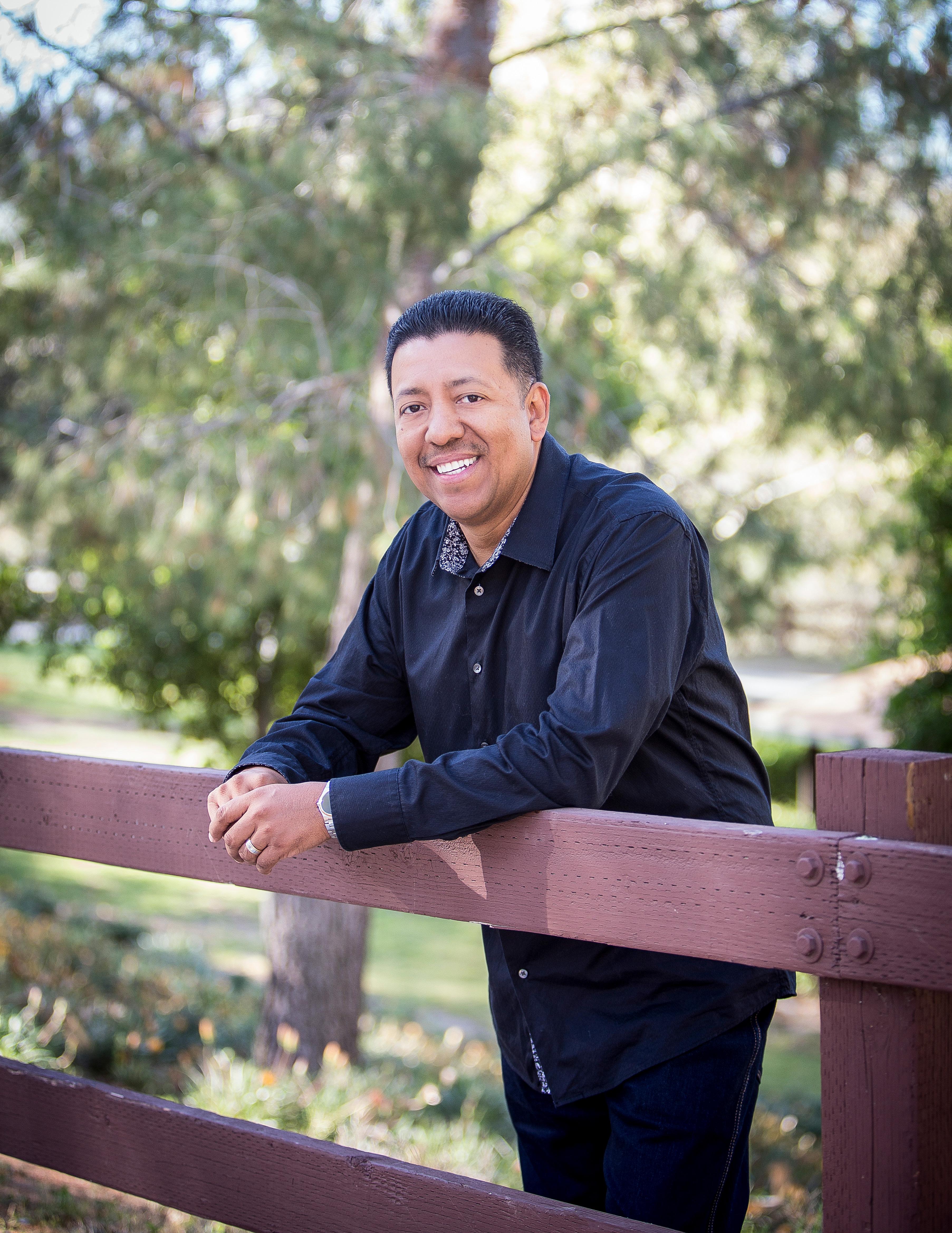
FOR SEVEN YEARS, LUIS ESCOBAR’S GRANDMOTHER PREPARED HIM for the day that he would meet his parents.
Escobar was born in Guatemala, but his parents left the country before their son’s first birthday so that they could find opportunity in the United States. They had the hope of one day returning to Guatemala so they could bring their son back to the United States with them.
Although he spent his formative years without his parents, Escobar says the sense of family instilled in him by his grandmother, aunts, uncles, cousins, and other relatives is strong to this day.
Of course, he also says that uprooting his life and moving to a new country at just seven years of age was a bit of a culture shock.
“It was a difficult transition,” he recalls. “Imagine not knowing your parents to all of the sudden living with them. I’m now in the United States, not able to speak a word of English, and basically thrown into school so I can learn the language. I remember being made fun of—but really, that just pushed me and motivated me to learn quickly. You’re a sponge at that age and can absorb a lot.”
Bolstered by hard-working parents who instilled the same ethic in their son, Escobar adapted and became a social animal—so much so, in fact, that his initial plans of becoming a computer programmer at college hit a brick wall.
“My first year learning programming, I realized it was boring and not for me,” he says. “Sitting behind a console writing code without a lot of interaction—I couldn’t see myself doing that throughout my life.”
With guidance from counselors and others, Escobar made the move to business school, took up front desk work at Oakwood Corporate Properties and then volunteered to also handle telephone administration. His tenacity coupled with his strong interpersonal skills got him noticed and eventually led to the role he holds today: global director of customer relations for retail giant Forever 21.
The once-possible future of an isolated career in front of computer screen a distant memory, Escobar is now about as far in the opposite direction as one could imagine—managing a collection of call centers spanning Japan, Korea, Mexico, the Netherlands, the Philippines, and the United States. Besides the many international borders to deal with, Escobar’s team of roughly 175 employees also cover 7 different languages.
Escobar opts not to see the scope of his role as a globe-spanning roll call of different territories and languages, but instead as individual members who are more family than employees.
“One of my goals is to meet every single one of my employees,” he says. “I think it shows them that I’m not some anonymous supervisor on the other side of the world, but another human being—just like them. Whether it’s lunches, emails, Skype messaging, or some other form of communication, I make it a point to learn a little something








about each individual—children, pets, where they come from, what stories they have.
“They’ve been so willing to open up and share so many things with me, and besides the importance of that kind of human connection, it fosters a greater sense of trust,” he adds. “I don’t ask people to do anything I wouldn’t be willing to do myself.”
It’s the same kind of engaging spirit he was brought up with in his extended family in Guatemala. But the lessons of hard work and perseverance that his parents instilled in him while in the United States also are reflected in his team around the world.
“It takes a lot of hard work to get to where you want to be,” he says. “I expect my employees to know that. At the same time, when they do work hard, the one thing I make an effort and really emphasize with my leadership team is to acknowledge, recognize, and appreciate those employees that really go above and beyond. I focus on promoting within—80 percent of my managers have worked their way up.”
“I focus on promoting within: 80 percent of my managers have worked their way up.”
Moreover, Escobar notes, none of his employees are made to feel that their responsibility is simply taking phone calls from customers. He understands that working in a call center is not a typical answer when one asks about a dream job, and he knows that many of his team members are skilled in other practices, but they do this job for the financial stability it provides. However, that doesn’t mean talent has to be squandered.
“I’ve got team members in the Philippines, for instance, who are excellent programmers,” Escobar says. “If they can use those skills in ways to help our team, I want them to do that—and that goes for anyone on my team. Just because you were hired to work in a call center doesn’t mean that you can’t or shouldn’t do something else.”
It’s fostered a strong sense of engagement and loyalty toward Escobar from around the world. But even more than that, it’s bred a sense of community and collaboration within the team. Call centers from different countries often work together to solve problems, share tips, guidance, and opportunities for improvement. If that’s not a reflection of the family values Escobar absorbed throughout his childhood across international borders, then what is?
“At the end of the day, it’s about people and making a connection,” he says.


BY KC ESPER
Mariana Fagnilli leverages her worldly experiences and path of self-discovery in her new role as the first-ever head of D&I at global healthcare-products firm Catalent.
MARIANA FAGNILLI HAS ALWAYS BEEN A SPOKESPERSON FOR humanity. She was born, raised, and educated in Argentina. She studied to become a human rights lawyer, then used her expertise to carry global relationships forward in multiple companies, focusing on government affairs and policy. Throughout this work, she sought any opportunity to touch lives around the world.
When Fagnilli came to the United States to develop her career, she began to notice that her identity had changed, which started her on new a journey of discovery. Rather than being considered European as she had been in Argentina, she was now considered Latina.
“My journey as a Latina is only eighteen years old,” she explains. “It was phenomenal to find myself belonging to a group that I never thought I had belonged to before. With a chance to articulate myself differently, I was able to appreciate the Latino culture much better after I had adopted that identity.”
Eventually, Fagnilli connected with her new identity, and carried her experience of self-discovery with her as she continued her careerlong passion for defending human rights. During a ten-year tenure focused on government affairs and building strategic relationships at Johnson & Johnson, Fagnilli realized there was another side to human rights that she had not explored before—one that honed specifically on generating a sense of belonging in the workplace environment.
From that moment on, she decided to invest in a career that centered on diversity and inclusion (D&I). For Fagnilli, D&I not only created a comprehensive sense of acceptance among a company’s employees, it also opened her own eyes to the role this acceptance played within the bigger picture of a company’s operations and, subsequently, consumers’ lives.
“I discovered that this path brought more value to my work because it connected me much more to the company, the employees, and to my roots—my young Latino communities. It made it all so much more meaningful,” Fagnilli shares. “This work brings awareness to the company that allows it to appeal to specific demographics and their preferences so that it can then create better products and treatments as a result.”
After gaining her initial experience at Johnson & Johnson, Fagnilli decided she wanted to fully commit to a D&I role within another reputable global company. She found Catalent, a world-leading firm focused on the development, delivery, and supply of drugs, biologics, and consumer health products. Catalent’s CEO and leadership team welcomed Fagnilli wholeheartedly as the company’s first-ever head of D&I, reflecting their deep commitment to embedding D&I as a core strategy within the organization.
“My goal is to help build Catalent into a sustainable business that uses its range of backgrounds, cultures, ideas, and talents to address global healthcare challenges, while remaining as a place where everyone can realize their dreams.”
Internally, the senior leadership team wanted to ensure that Catalent manifested a welcoming, inspiring, and rewarding environment. They wanted employees to feel appreciated in their current work, but also that they had the freedom to grow beyond their role at their own pace. With that as a goal, the company integrated Fagnilli’s work into its operational framework. Now, she stands as the global head for the office of diversity and inclusion and has revolutionized the way the company thinks about hiring, planning, recognition, and promotions.
Within her role, Fagnilli uses her own experience as an Argentinian immigrant to develop a comprehensive approach to integrating D&I into Catalent’s DNA. Her goal is to incorporate a D&I mentality across the entire organization, so that employees across the board commit to recruiting in a way that is mindful of how the business will function moving forward. In other words, Fagnilli hopes to promote certain microbehaviors that are practiced daily and can be measured to show change overtime.
“When these habits are put into action in an environment that supports honest conversation and healthy tension, real change becomes possible,” she says. “When people incorporate D&I best practices into their everyday habits and work routines without even realizing it, then I will feel that we are making great progress.”
Since the launch of D&I programs at Catalent started just one year ago, Fagnilli, with the support of the senior leadership team and the Global Diversity & Inclusion Council that she chairs, has spearheaded efforts to broaden the scope of recruitment methods to include global talent acquisition and female representation. She has also harnessed the power of storytelling to share the stories of employees already ingrained in the institution, heightening levels of engagement and creating a greater sense of community. These experiences have reminded everyone of both their shared and unique experiences while reaffirming their appreciation and connection to the value each member brings to the table.
“In many ways, these efforts allow people to know themselves better,” Fagnilli expresses. “It’s helping us create a culture of inclusion, where people are aware of their behaviors and actions. We’ve noticed teams come up with better outcomes, be more creative with their thinking, and want to participate more on assignments. Everyone helps each other more because they are more conscious about our higher process.”
As Fagnilli’s work continues to advance, she hopes to solidify a sense of opportunity and belonging within Catalent’s workforce. This year, she commenced the next layer of her work: connecting people of different parts of the organization with the company’s leaders and members
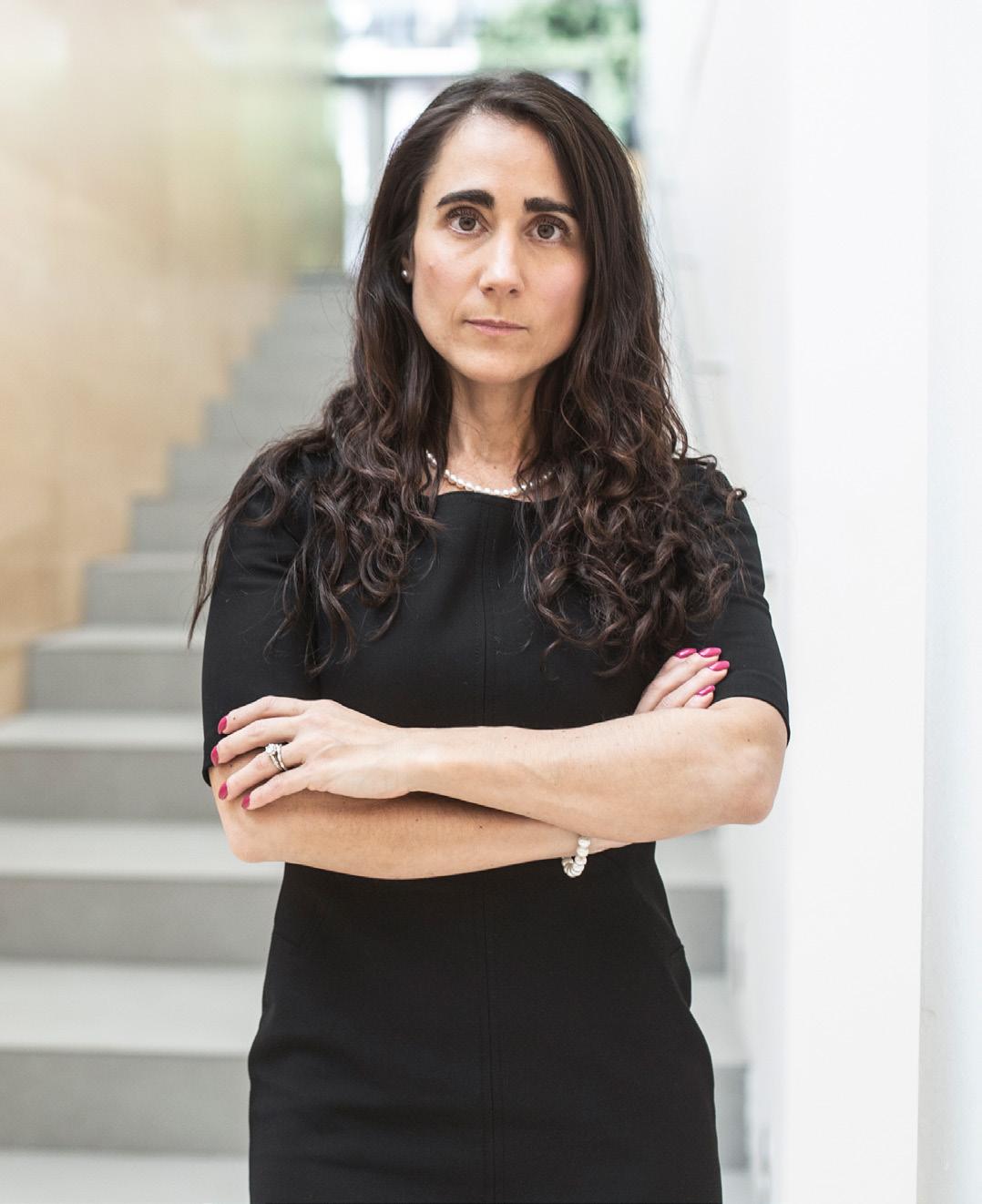
Global Head, Office of Diversity & Inclusion
Catalent
of the company’s employee resource groups. She hopes that these efforts will open dialogues about D&I throughout the organization.
In addition, she is expanding the department’s focus on people to include systems, as well. “While we educate and bring awareness and connect individuals, we also need to create the proper systems, policies, and practices to support D&I in the long run,” she explains.
While her endeavors require ongoing cooperation and improvements, Fagnilli says her ultimate goal is “to build Catalent into a sustainable business that uses its range of backgrounds, cultures, ideas, and talents to address global healthcare challenges, while remaining as a place where everyone can realize their dreams.”







At Catalent, we value unique backgrounds and experiences and strive to help all employees maximize their potential. We believe different perspectives drive innovation and are committed to creating a workforce that reflects the world in which we live and the diversity of the patients we serve. join us!
Catalent. Personal Initiative. Dynamic Pace. Meaningful Work. Visit www.catalent.com/careers for more information.
GE Capital Energy Financial Services CFO Mark Ortiz recounts his lifelong international experiences, and the leadership style he’s developed along the way.
BY BILLY YOST
MARK ORTIZ—WHO WAS BORN IN FRANCE to a Bolivian father and Polish mother, and who now has a Hungarian wife, a daughter born in the US, and a son born in Japan— can easily be described as worldly. He is also a strong believer in situational leadership: listen, adapt, and lead through empowerment and teamwork. His leadership style is rooted in his childhood experiences living and growing up in different countries, learning new languages and adapting to different cultures throughout multiple continents.
This upbringing may seem exotic, but for Ortiz, it wasn’t always easy.
One particular difficult time he remembers was when he was a high-school junior. Having moved every two or three years since he was six years old, he had just been told that his family was once again moving. He wouldn’t be finishing his education in Bolivia, the country—let alone the school—where he had started.
Ortiz had learned three languages already, as he had to adapt to whichever geographical location his father, a Bolivian diplomat, was assigned. He had lived in Brazil, Canada, Poland, and Bolivia, among other countries, and Ortiz would now have to learn English as the family prepared to move to the United States.
“I remember telling my parents that I would never, ever do that to my own children,” Ortiz says.
Fast-forward to adulthood: Ortiz’s second role at GE Capital had him working as an internal auditor across twenty different countries in three years. Reflecting back on what he said to his parents, he expresses, “Those are the last words I’d ever say now. Today, I thank my parents for giving me such amazing opportunities at a young age. And I now rely on the adaptability and support of my own wife
and children, as my father did while I was growing up.”
Ortiz, now CFO of GE Capital Energy Financial Services, has spent his entire twenty-seven-year career under the GE umbrella—yet the diversity of his experience is second to none. The CFO has leveraged a talent for adaptability, forged first in his youth, into a leadership style that culls the best from his experiences worldwide—from Asia to Europe, Minnesota to Connecticut.
Sports also had a big impact on Ortiz. Early in his youth, he was the number one-ranked junior tennis player in Bolivia, and he says those experiences traveling around as part of a regional or national team mirrored those of his family—father, mother, brother— moving from country to country, having to rely on each other.
“In every role I’ve had at GE, I’ve been part of a team, and I’ve learned about the absolute importance of active listening,” Ortiz says. “People want to be understood, and so I think it’s so important that, even if you think you have the solution, be patient, and let them be genuinely heard—you will learn something new about the person or the subject matter.”
Ortiz first realized his cultural adaptability and relocation familiarity were assets in his early GE roles. Moving around frequently, he learned to quickly to produce results, and in navigating multiple cultures he developed a depth of lens few possess.
“I think my perception of what’s right and wrong is a lot broader,” Ortiz says. “While still maintaining my own core values, it’s so much easier to understand others’ points of view, and that, sometimes, thinking someone is wrong is merely just a case of someone thinking differently from you.”
Ortiz’s first CFO role was in Japan, and he had to quickly adapt to a culture where age—not necessarily experience—demonstrates the extent of one’s career, and where consensus is paramount. “I was the only
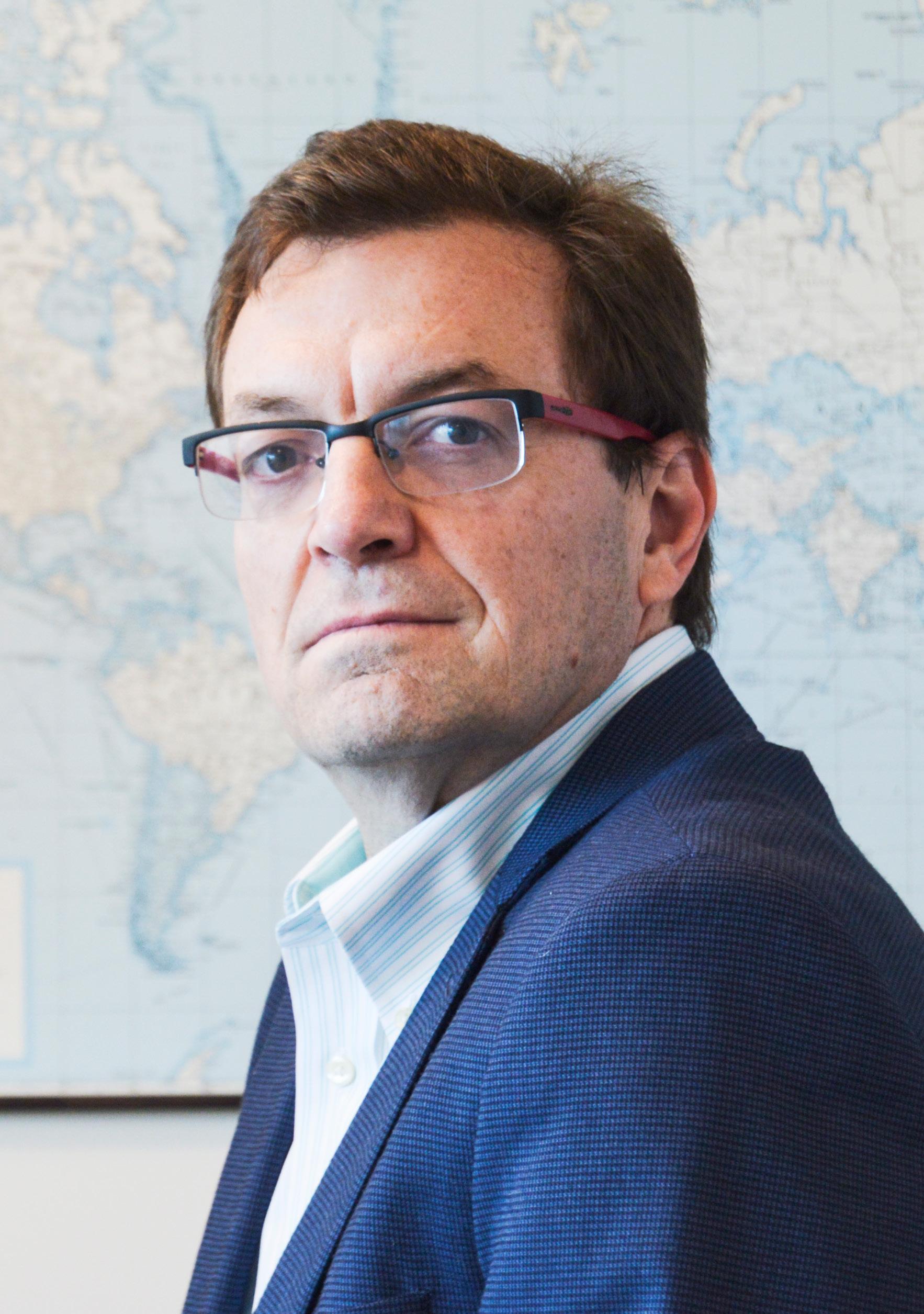
Mark Ortiz CFO
GE Capital Energy Financial Services
non-Japanese person on a 500-person team,” he recalls. “Things moved at a different pace than I was used to because there is such a stronger emphasis on building consensus. It was a very sobering experience.”
Later, Ortiz took on a CFO role with GE Capital’s Fleet Leasing division, covering all of Europe. “The experience in Japan helped me make sure that I was listening closely to each country’s CFOs, because their issues were so different,” he says. “Speaking four languages came in handy.
“He asked me what the company leaders were telling me,” Ortiz says. “They were telling me that this position was a potential stepping stone for bigger roles and promotion and that they really like the work I’m doing.”
Ortiz’s mentor then told him to trust the process and the company.
“That was a powerful lesson for me,” Ortiz admits. He says the controller job and subsequent roles that followed were some of the best jobs he ever had. Though “trusting the process” was sometimes difficult, Ortiz believes
“I call it situational leadership. Teams in different countries, cultures, and even functions have different needs and motivations and I’ve learned a lot from them; I’ve become a better leader.”
Cultures, like the countries themselves, are so varied.”
One of Ortiz’s most profound learning experiences came when GE called him back to the United States to assume not a CFO role, but a global operational controller job. “My whole career, I thought I was preparing for bigger and bigger CFO roles, and I thought this might be the company telling me that this was as far as I was going to go,” he says.
But soon he realized through his discussions with mentors and former managers that GE, again, was challenging him to adapt and take on a role outside his area of expertise. He could use his experience to tackle a whole new role within the company.
A very simple question from one of Ortiz’s mentor really struck him.
it was the right thing to grow both professionally and personally.
On his own leadership, Ortiz says that the steady stream of feedback he receives always includes how, regardless of the situation, Ortiz adapts. He’s come to see it as his own leadership style.
“I call it situational leadership,” Ortiz says. “Teams in different countries, cultures, and even functions have different needs and motivations and I’ve learned a lot from them; I’ve been able to adapt my style. Because of these teams and situations, I believe I have become a better leader.”
To this day, Ortiz stays true to those core values that were cast by his parents, on the tennis court, and at every new country’s border. With those values, he knows that no matter the location or the situation, he will thrive.
Bosch’s plans for a new plant in Celaya, Mexico, showcase its innovative strength and commitment to North America.
BY KATHY KANTORSKI
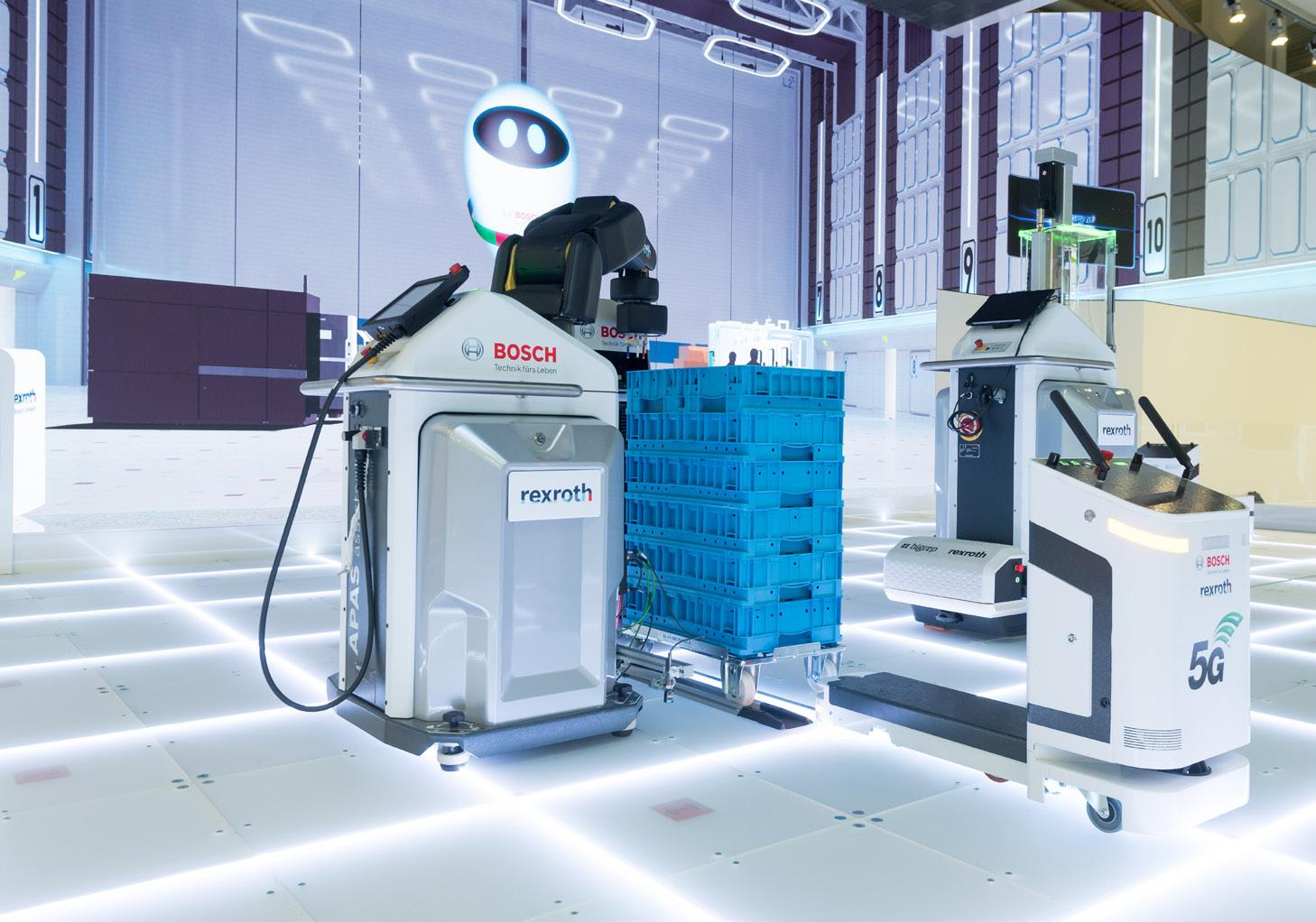
WHAT WILL THE FACTORY OF THE FUTURE look like? How can people, robots, and machines work together? What role do 5G, data, software, and services play? Where can artificial intelligence be put to use? Bosch has an answer, and it will be seen in Mexico in less than a year’s time.
With more than $85 billion in sales generated in 2017 alone, Bosch is an international powerhouse in the tech industry. The company’s manufacturing, engineering, and sales network covers nearly every country in the world, and its basis for even more growth in the future is its innovative strength. With the tagline “Invented for life,” Bosch is a leading Internet of Things (IoT) company offering solutions for smart homes, smart cities, connected mobility, and




automatically collects data and shares production information in real time. This makes possible both preventative maintenance of machinery and higher product quality.
The Celaya plant will manufacture electronic control units—key components for connected mobility—for the American market. This new location is part of Bosch’s long-term expansion in North America. In total, Bosch currently operates ten manufacturing locations in Mexico, where it has had a presence since 1955.
“Bosch is committed to Mexico,” Hartung said. “The country is and will remain an important market and a hub for our global manufacturing and development network.”
It helps that Bosch is a leader in Industry 4.0, keeping Mexico competitive in the global manufacturing scene. Today, Bosch employs 16,000 associates across ten locations in Mexico—more than double than it had in 2010.
Pedraza CustomHouse Brokers Inc streamlines our clients’ import and export operations based on our experience in international trade worldwide and along the U.S. – Mexico border.



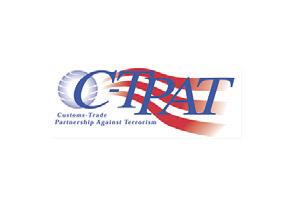
info@pedrazachb.com www.pedrazachb.com


PointTrade Services, Inc. (PTSI) is a leader in providing Foreign-Trade Zone (FTZ) managed services, customs brokerage services, and international trade consulting services to top importers of the United States. PTSI is committed to earning trust and confidence as a valued partner to
The PTSI team’s experience in FTZ managed services, customs brokerage, and consulting means our team is equipped to provide unparalleled service to our clients.
Headquartered in Panama City, Florida, PTSI’s team has extensive experience with matters related to:
FTZ managed services and related FTZ manufacturing, warehousing and distribution operations and processes
Customs brokerage with a focus on FTZ’s
International trade consulting related to FTZ’s and other trade programs
To find out more about how our experience and commitment to service can benefit your company, contact PTSI today via our website at www.pointtradeservices.com/contact-us/.
“We have a responsibility to remind women that fear is not an option and that the twenty-first century is the century when women will make the difference.”
—SANDRA CAMPOS, DIANE VON FURSTENBERG (P. 92)
“Respect and inclusiveness must be in the culture. What that provides is the ability to innovate. If you don’t have respect in the workforce, people go into self-protective behaviors where they don’t openly talk about challenges and lessons learned.”
—JOE DOMINGUEZ, COMED, AN EXELON COMPANY (P. 110)
“It’s hard to tell people they’re going to have a fulfilling career when nobody in leadership looks like them.”
—TALITA RAMOS ERICKSON, BARILLA (P. 96)
“Understanding and leveraging who you are creates a more authentic leader. To achieve that understanding makes us much more effective as leaders.”
—ENRIQUE CONTERNO, ELI LILLY AND COMPANY (P. 88)
“As technology moves us away from the need to physically interact with each other, our ability to connect and empathize is changing.”
—SEAN JAQUEZ, SONY PICTURES ENTERTAINMENT (P. 102)
“I don’t see myself at the top. I am the one at the bottom, carrying the team, enabling them to do better.”
—JAIRO OREA, KIMBERLYCLARK (P. 84)

We are pleased to support the in-house leaders featured by Hispanic Executive with whom we are honored to work.

Diverse backgrounDs anD ways of thinking Drive innovation. that’s why, from our leaDership team to our workforce to the organizations we Do business with, we Draw on our Diverse communities to power the future. it’s just one way we show our priDe in, anD give back to, the communities we serve.